

Kugti: Where Nature Rules & Modernity is Unknown

traveller Ankur
I recently visited Kugti and experienced the mystic connection with nature. Through my Kugti travel guide, I will help you plan a visit to this timeless sacred sanctuary.
Kugti, one of the best-kept secrets in Himachal has been hidden away for so long that reaching it now is more of a time travel than a simple vacation. It is a paradise that redefines natural beauty. A land so diverse that it leaves you awe-stuck at every step, and every direction.
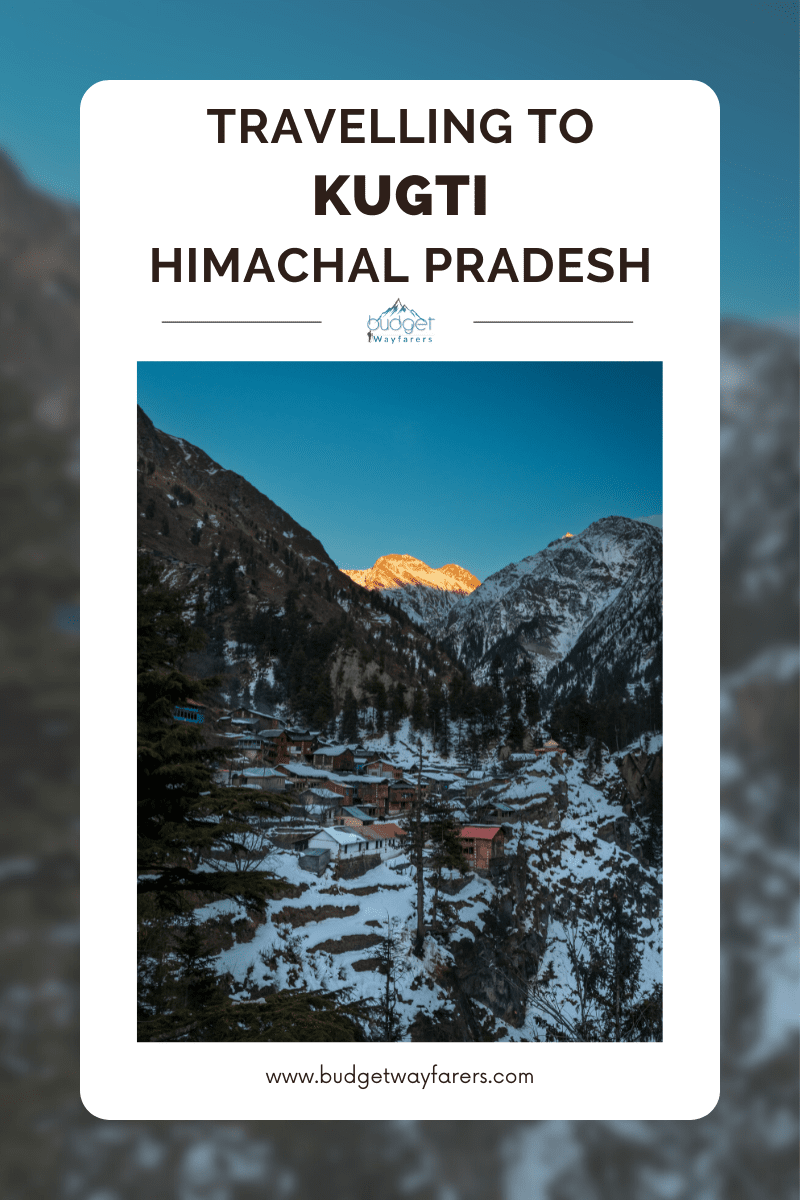
Kugti Travel Guide: An Overview
Known to be the Abode of Lord Shiva, Kugti is unlike any other- pure, sacred, and untouched. Apart from the transcendental vibe that is felt here, there are only the immersive sounds of the wind and the flowing river.
Here are a few relevant highlights you must know before planning your Kugti Village trip –
.Le t me take you through more details below-
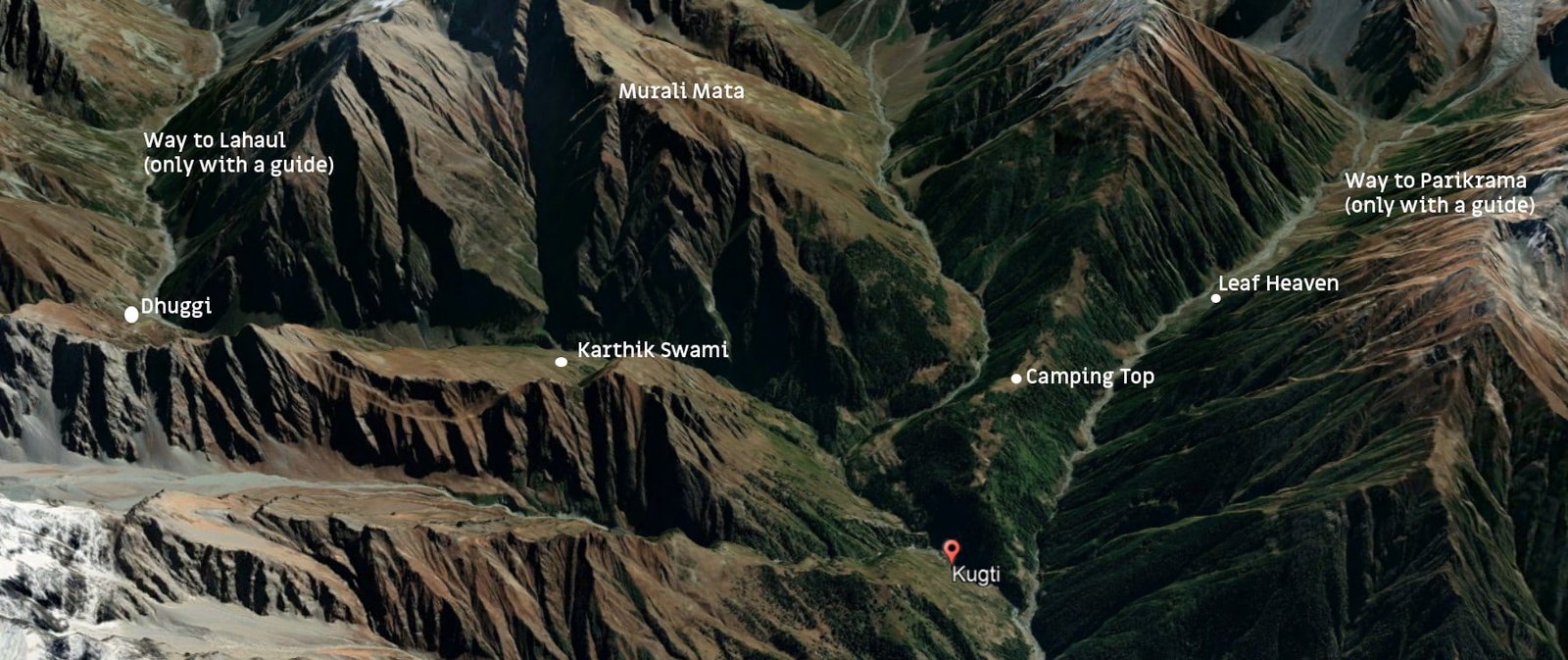
This is the map of Kugti and its surrounding. This will give you an idea of the the nearby places of interest and distances.
Why Should You Visit Kugti?
Everyone is there for a purpose to accomplish, so you might just find yours among the following list
1. Trekking – The treks vary from low to high altitudes, easy to difficult and dense forest areas to no vegetation glaciers, all accessible during summers.
2. Camping – For those who love camping, certainly will find the most picturesque spots to camp in and around Kugti. More of which I’ve explained later, just make sure to keep the fire burning outside the tents.
3. Landscape Photography – You’ll be experiencing the nature as it was centuries ago, the high altitude vegetation of leafy and cushion herbs, valleys of flowers, with narrow creeks, makes shift bridges, and what not. The scenery changes with the weather, as it grows misty or perfectly clear, direct sunlight to is available during evening golden hours. The surroundings here match the landscape wallpaper results from Google. So certainly hope for the next batch of desktop wallpapers from here.
4. Wildlife Photography – You’ll find the rarest wildlife here, specially Himalayan Tahr to which Kugti remains as its last home. There are bears, leopards, ibex, snow leopards, among other which require a little effort and patience, that wildlife photographers are already aware of.
5. Avian Photography – Kugti is home to the rarest avian species, 65% of which are native to this place. A blessing for bird watchers and photographers alike, the surroundings are always filled with the birds chirping which should make it easier, since there are no cars or bikes to be heard.
6. Stargazing – Manimahesh trek has always been my favourite place for stargazing, however Kugti matches it with an even better surroundings with no lights available during the night. The weather does get foggy, though clear skies are generally prevalent.
7. Pilgrimage – This should be the first point, since the place is but a holy land, Lord Shiva is considered to have lived here with his family, so you get it. The temples offer the most panoramic views, with some being at the heights only accessible to some.
8. Finding yourselves – Entire point of this journey is to find yourselves, in the lap of mother nature, away from people & gadgets. This place offers you everything required for self searching, all you need to do is make the choice of finally awarding some-days to yourself.
9. Escape from the world – You’ll be leaving behind everyone, and everything that connects you to the world when you reach here. No mobile or internet connection, no cars, no social media, just you and the pilgrims around you. There are no hotels or hoards of tourists, just some sheep, cows, and some birds in this splendid place, the sight of wildlife is actually a celebration.
10. Adventure – Finally start to trust yourselves by doing what you want to do, challenge yourself to go beyond what you expect from yourselves, have fun and set new limits. Although, always choose not to go to treks, if you can’t walk.
11. Landscape & People – Walking amongst the most delightful of landscapes in Kugti you get excited to see a human or a shop, conversing for hours with strangers both cut from the entire world; where going forward is about trusting yourselves, listening to your heart is easy, and you find yourself alone amongst the high snow peaked mountains, the gushing Budhil stream, spectacular views. The people you meet along the way are likely warriors and saints, dressed as trekkers and shepherds, laughing and dancing as they lead to their destinations.
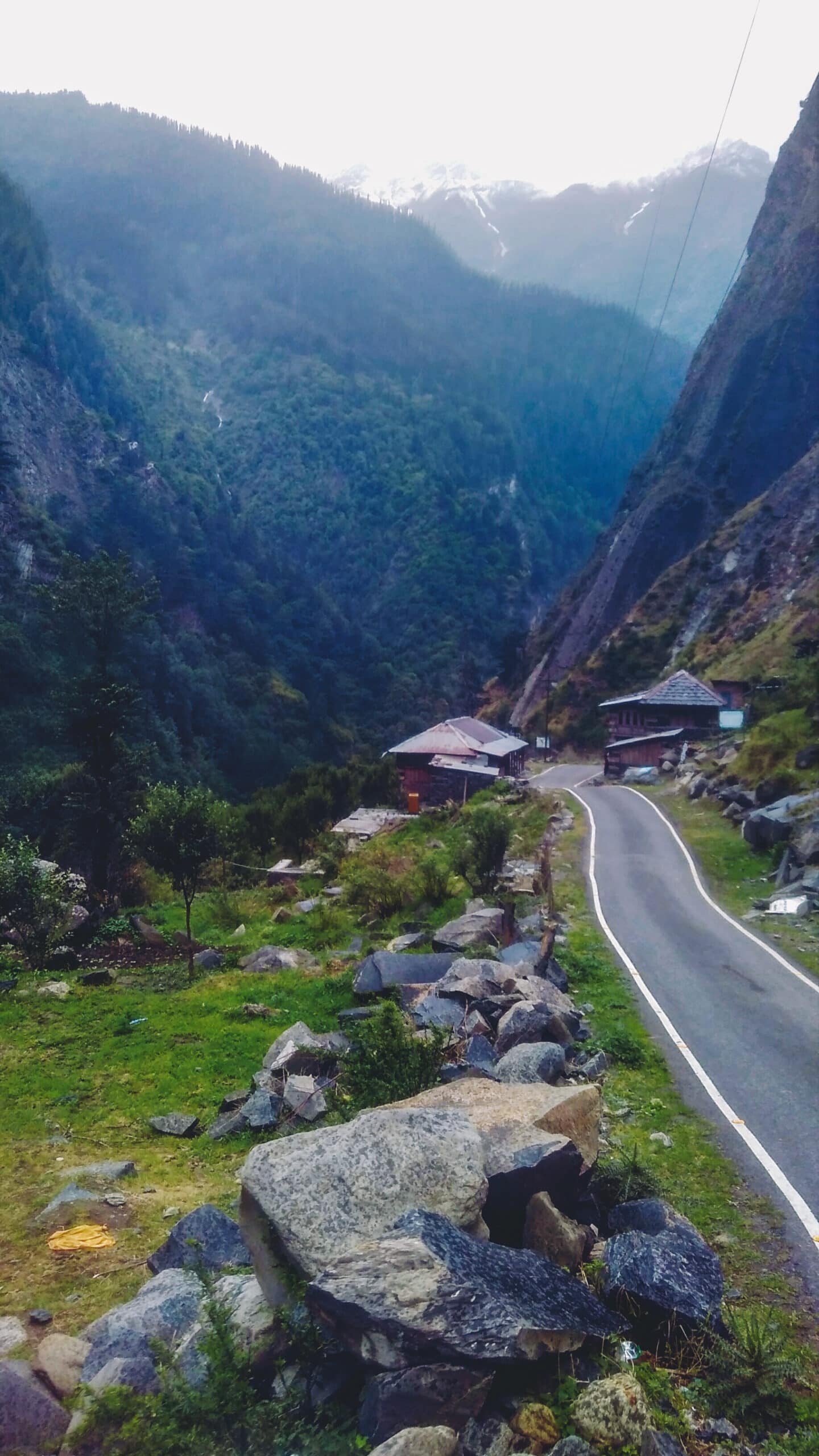
The journey to Kugti is most scenic of landscapes, surrounded by dense pine and deodar forests, snow-peaked mountains, glaciers, lush green grasslands, countless waterfalls, rivulets, valleys of medicinal herbs and flowers, ancient temples, beautiful treks.
How to Reach Kugti Village?
Bharmour in Chamba is the town where you’ll start your journey. It is where if you haven’t already, shop for all the necessities, go to ATMs, have the luxury of hotels, and book a travel tour guide if you want to trek across to Lahaul.
The town is also the last place to makes calls and use internet, as beyond Bharmour, it is heaven, with shaky mobile network, only BSNL and Airtel (sometimes) works in Hadsar, beyond that its Jio in Kugti. Although you can make important calls, through phones of local people.
Here is a quick overview of the travel details you should know:
Kugti Travel Guide: Budget Breakdown
What to do in kugti – places to visit in & around kugti.
The places to explore in and around Kugti are unlimited, for the adventurous. Let’s take a look at the best places to enjoy your trip to the fullest –
1. Kugti Village
The village is a living monument to our history, with preserved traditions, architecture, and lifestyle that is rarely visible around Himachal. The Khatkuni styled wooden houses, can be seen everywhere, with an ancient Shiva Temple that sits atop a rock. The village is divided in two parts, the Upper and Lower, separated by a waterfall.
The vibe here is refreshing, so roam around the village, click photos, sit in a shop, have chai, maggi, and make friends. People here are very friendly and can guide you a lot about the surroundings and the weather. Homestays are available with food, giving you a chance to experience the village life and know about the ancient tales, the stories of their ancestors and the life before the road.
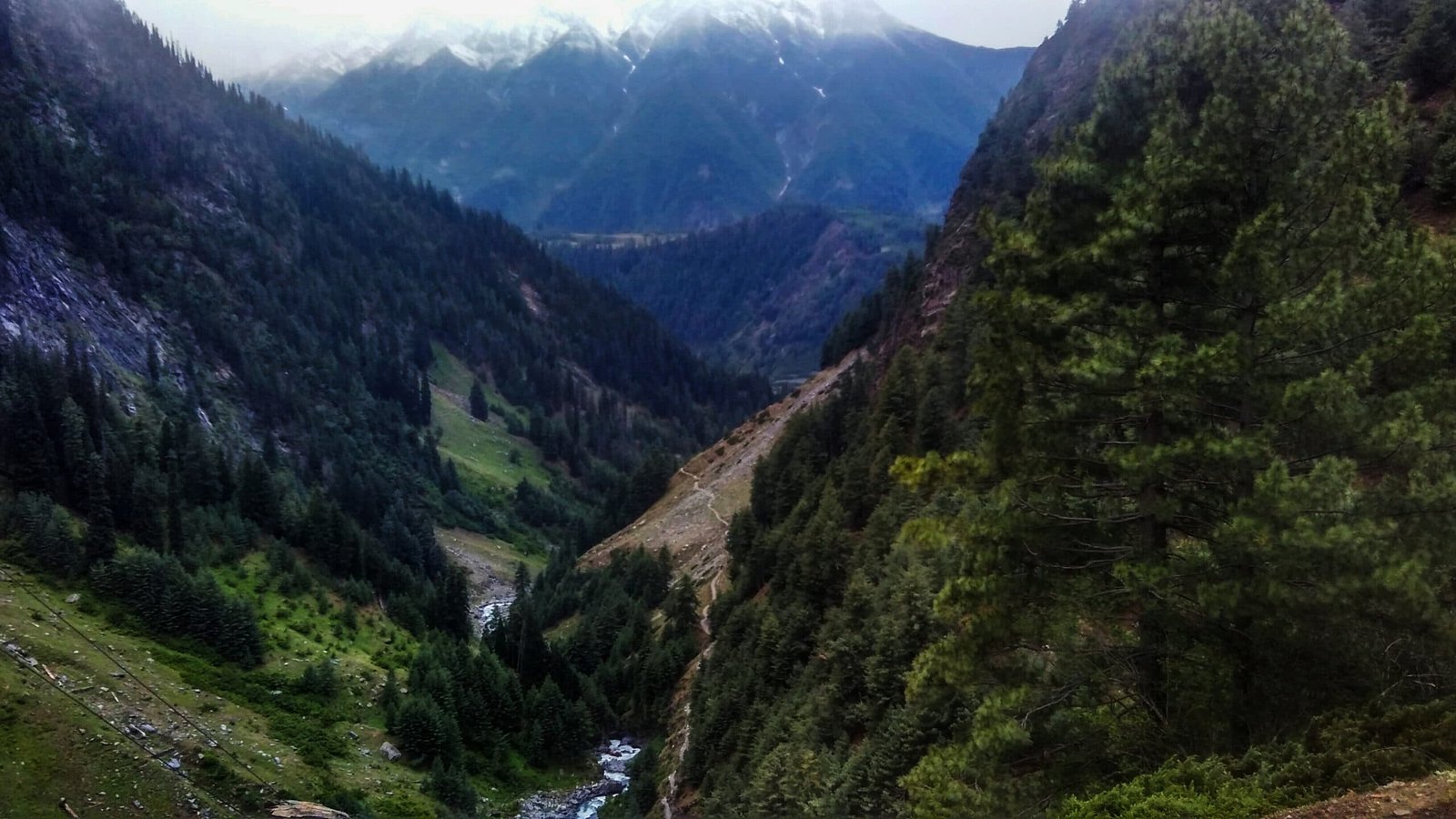
Dhalotu, is the base camp for the Parikrama pilgrims, on top of the mountain adjacent to Kugti village.
2. Dhalotu Top
Surrounded by the deodar forests, and the terraced farmsteads, is a grassy top with flowers blooming, that will leave you in love with this place. It offers spell-bounding views of Karthik Swamy trek in front and snow capped mountains of the Kugti wildlife sanctuary at the back.
If you’re warm enough at night and the skies are clear, this is a perfect spot for stargazing. Also since you’ll be accompanied by people going for the Parikrama, some of whom might have walked down from Lahaul or Chamba, have an experience of their tales of adventure and do look at the photos they clicked on their way through. Just don’t get carried away to follow them to Parikrama until you’re sure of yourself, something that is meant only for the experienced.
3. Manimahesh Parikrama Maarg
Parikrama Maarg is a 17 km long trail, circumambulating the Manimahesh Kailash Peak (5653 mtrs, 18,547 ft). It passes through the inhabited lands ranging from coniferous forests, to calm meadows, grasslands, mosses and further glaciers. This sacred journey is filled with a very pure energy of pilgrims and the sacred land, the continuous chants of ‘Jai Bholenath’ are heard everywhere.
This is one of the best journeys you’ll have, even half of it. As you descend from the deodar forests into the rivulet bed, you witness a clear land full of medicinal plants and flowers, separated by a creek that runs from the glaciers situated at the end of this trek. Surrounded by the high altitude vegetation, you’ll be making your way through a narrow trail, that will lead you to the leafy heaven almost 4 kms from Dhalotu. The leaf heaven is a region full of Naag Chhatri leaves, a plant found only in high altitudes considered to be of medicinal value, the entirety of the area full of these, the sacred places of Ganesh Kund, Hanuman Shila and Mata Dham Ghodi are beyond this, among the glaciers.

Karthik Swamy temple houses, the deity, Karthik, elder son of Lord Shiva, and is visited everyday by a lot of devotees wearing red caps.
4. Karthik Swamy Temple
An easy trek that takes around 1 and half hour takes you to Karthik Swamy temple. A trail that runs between two high mountains, a rivulet flowing in between, a sight to behold and it keeps getting better as you reach the temple.
There is no reason to go fast, go as slow as possible, enjoying the divine beauty you see around. The temple complex is on a steep height, so, avoid slippery trek. Here dormitories are available for sleeping, though that is just a room with a little mattress and a lot of blankets, inside a shop.
Just above that is a small temple requested by the devotees, sister of Lord Karthik, Murali Mata, who is considered as the protector of this land. The temples still follow the ancient practices and rules, something that is of utmost faith to the locals.
5. Duggi/ Alyas
As you cross the accessible Murali Mata Temple, you’ll be welcomed by large grazing grasslands followed by the pine forests, then descending into the lower grasslands you’ll be walking by the Budhil rivulet completely in wilderness.
The landscape keeps on getting better, as you inch closer the snowy mountains upfront, reaching Duggi – which means deep, a flat grassland where two streams meet and surround the grassland. One and half hours trek from Karthik Swamy, you’ll find yourself in one of the best spots for camping in the wild or just merely enjoying the place.
Bring a guide, if you want to camp here, as they are perfectly aware of the weather changes, how to act around wild animals, food requirements and safety. The guides are joyful local people and will lead you to the best spots around, that are mostly unknown to everyone else. You can always go even beyond, as per your will, depending on the weather, to Alyas or even further with the guide, just be prepared accordingly.

Manimahesh Trek is a must if you’re visiting this region for the first time.
6. Manimahesh Trek
It is a trek of 13 kms, which starts from Hadsar, and ends with you taking bath in a sacred lake with freezing waters in the presence of most holy Kailash Parvat that watches over you. Although an easy trek, with plenty shelters, shops and a hardened trail, yet it challenges you to your limits if you’re not in the right mindset.
Visited by thousands from across India annually, it is most crowded during the Manimahesh fair, which if you ask me, is certainly a great time to visit, as the vibe is at its best and the people motivate and welcome you at every step. Though toilets become a problem. Anyhow if you’re not fan of crowds you can visit from mid June to late Sept, when the shops are available.

Entering Bharmour will leave you enchanted every time, since it is where the green colour starts when you visit from Chamba, after the barren and reddish-yellow mountains you see in the way.
7. Bharmour
Bharmour is a town known for apple orchards and step farming. It gets better as you climb up from the market. It is a beautiful town, situated in between the rivers Ravi and Chenab, though gets traffic jams for hours continuously due to narrow roads.
It houses the famous 84 temple complex, built around 7th century, which is one of a kind and has the Dharamraj Temple, where as per belief, all souls after departing from body, stand and seek the permission of Dharamraj to enter Shiv Loka. There’s also Bharmani Mata temple, that sits on the high ridge, 4.5 kms from Bharmour, having a bath here is considered mandatory before visiting the Manimahesh.
Hotels, restaurants, ATMs, cafes and clothing shops are available here, to provide you enough things for your Kugti adventure.
8. Pro Treks
If you are a pro trekker, then you can go any direction you want to. Hardest treks to Murali Mata Mool Temple (5 kms), Murali Mata Lake (14 kms), Kugti Pass (30 kms), full Kailash Parikrama (17 kms), Chobia Pass (25 kms), even trek to Bara Bhangal, are all open to you.
The land beyond is inhabited, so available for exploration, though you might find the Gaddi’s chilling there with their sheep already.
Things to Carry for Kugti Trip
- Powerbank – carry one with more amperes as the camping generally spellbounds into days at places without electricity. And charge it the first place you see a socket, whether stopped for a chai or chatting.
- Good Raincoat – This will be your best friend here, make sure you have the waterproof lowers too, also carry rain-cover for the backpack.
- Waterproof Shoes – You can get a pair at Bharmour for 250 INR, or get a silicon cover, or carry a lot of pairs of dry socks.
- Best Camera – Since the entire trip is about beauty, you must capture it with the best camera available, DSLR’s are recommended only for professionals who can carry it at the higher altitudes.
- Warm Clothing – get the warmest jacket you have even if you are visiting in June, some waterproof clothing because you’ll be surrounded by snow all the time. Its always snowy there.
- Medicines – bring some paracetamol, and other medicine that you might need in high altitudes.
- Cold cream – for face and lips, it is a must.
- Fire cracker, lighter – Just in case of an unexpected animal encounter, pepper spray is also okay.
- Tent – this is optional, though it is one of the best and cheapest staying option, as you have the choice of staying anywhere you like, though a good sleeping bag is required, also its preferable if you camp near human settlements. The downside is the extra weight.
- Mindfully prepare for Duggi – lighters rarely work on such altitudes, so keep match sticks, a lot of them.. and carefully pack the things as even the smallest thing missed, can lead to entire plan being dismissed.
Kugti Travel Guide: Bonus Tips
- Travel itinerary doesn’t really apply here, all you have to do is listen to your heart, go wherever you want and chill there for as much as you like.
- Must go easy treks are Karthik Swamy, Dhalotu and Manimahesh. Its okay to fall behind the group in them.
- Acclimatization is necessary if you’re visiting directly from hot regions. Chill for a day in Bharmour and take a bath in Bharmani Mata trek, before jumping in the glacial waters beyond.
- Don’t go trekking if you’re not feeling well or can’t walk, find a place to rest and be healthy first. Hospitals are far away, so health should be your priority.
- Local guidance is the key. Stick to their advice, ask from as many people you can. They are generally too encouraging, 1 hour trek for them just might be 2 hours for you, so act accordingly.
- Trust the people here.
- Make sure that you have an extra memory card or enough space in your phone. Deleting photos and videos almost hurts you.
- If the place seems impossible , inaccessible or in dense forests, especially on the Kugti-Hadsar road, don’t become a commando.
- Travel as lightly as possible, carry the best options and prepare for a cold and wet place.
- Don’t carry unnecessary expensive stuff – there is no need for laptops, or iPads since you always should be in a position to leave your heavy stuff in a shop or any local place. Trekking with heavy stuff is no fun, also expensive stuff is just extra weight here.
So, reaching the end of this lengthy Kugti travel guide, I wish you all the best for your journey and hope you find whatever you are seeking.
THIS POST IS AN EXCLUSIVE PROPERTY OF BUDGET WAYFARERS. ANY INDIVIDUAL OR ASSOCIATION INDULGING IN PLAGIARISM WILL BE DEALT WITH STRICTLY . IF YOU WANT TO USE INFORMATION FROM THE ARTICLE ABOVE, KINDLY QUOTE THE SOURCE.

Savaari Car Rentals Blog
Travel begins with Savaari
Top Things to do at Kugti Wildlife Sanctuary
Kugti Wildlife Sanctuary is a protected area in the Chamba district of Himachal Pradesh, India. Established in 1962, Kugti Wildlife Sanctuary offers a chance to witness the awe-inspiring beauty of the Himalayas, explore rich biodiversity, and experience the spiritual and cultural heritage of the region. It serves as a crucial habitat for wildlife conservation and provides a tranquil escape for those seeking a connection with nature.
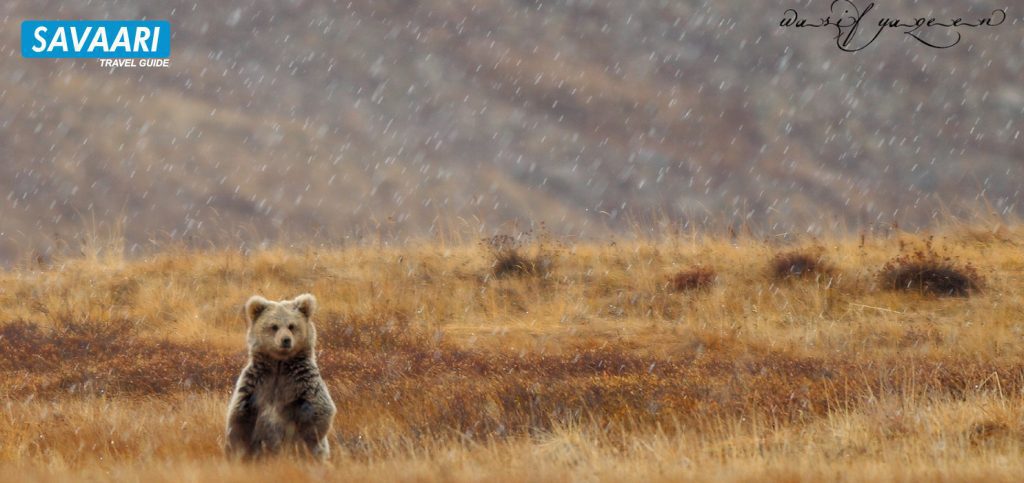
Table of Contents
Trekking at kugti, places to visit in kugti, how to reach kugti village, best time to visit kugti, travel tips for visiting kugti wildlife sanctuary, kugti national park safari timings, kugti national park entry fee, wildlife and vegetation, resorts & hotels to stay in kugti, things to do at kugti.
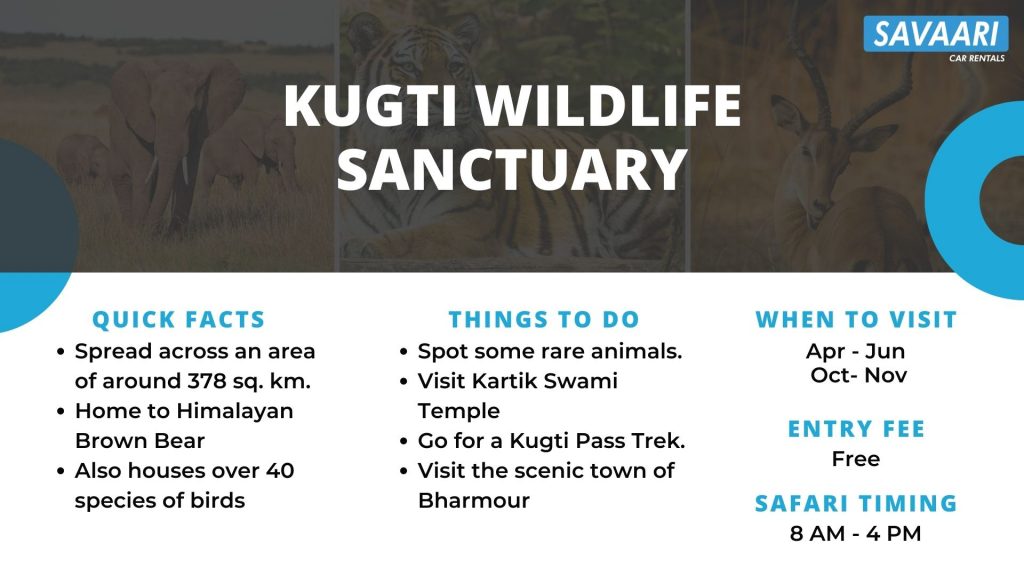
- Spot some rare animals. The Kugti Wildlife Sanctuary is one of the few places in India where you can spot the Himalayan Brown Bear and Snow Leopard. It is also one of the late homes for the Himalayan Tahr.
- Experience a digital detox. Most times, there is no phone reception in Kugti. Moreover, during the harsh winter months, the village doesn’t have electricity too. Experience the no-frill, spartan style holiday.
- Visit Kartik Swami Temple . Located at an altitude of around 3100 meters above sea level, the Kartik Swami Temple has some interesting stories attached to it. It also offers mesmerizing views of the surroundings.
- Go for a Kugti Pass Trek .
- Visit the scenic town of Bharmour .
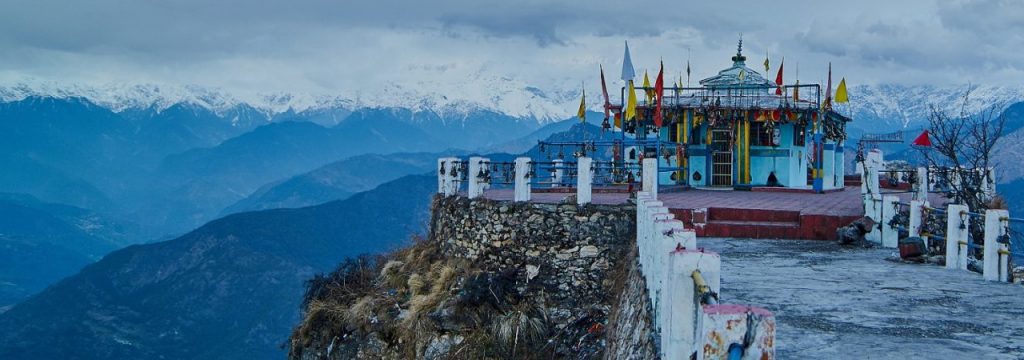
The Kugti Pass Trek is a picturesque but unexplored option that trekking enthusiasts must consider. A trek that can take you up to an altitude of 16,600 feet is a difficult climb and probably one of the most difficult treks in the Central Himalayas. The trek usually starts from Bharmour at a distance of around 21 km from Kugti village. The trek has it all – deodar and pine forests, emerald meadows, picturesque waterfalls, glistening streams, and endless orchards of apples and peaches. The most beautiful part of it is meeting shepherds moving through the terrains to find grazing grounds for their sheep. Once you reach the pass, some breathtaking views of the Lahaul Valley, Manimahesh Kailash Peak, and Grechu Pass await you.
If you are a trekking enthusiast, #SavaariRecommends this gorgeous Sandakphu trek through the lower Himalayas.
- Kugti Wildlife Sanctuary
The most popular place to visit in the quaint Kugti village is the Kugti Wildlife Sanctuary. Famous for some unique flora and fauna , this place is an excellent option to fall in love with nature all over again.
- Manimahesh Lake
The Manimahesh Lake, also known as Shiv Kund or Dal Jheel is a religious site in Kugti. It is situated at the foot of the Kailash Peak that is known to be the abode of Lord Shiva. Every year, on the eighth day of the light half of the moon in the month of Bhadon, a fair is held at this lake. Thousands of pilgrims assemble here to take a dip in the holy water.
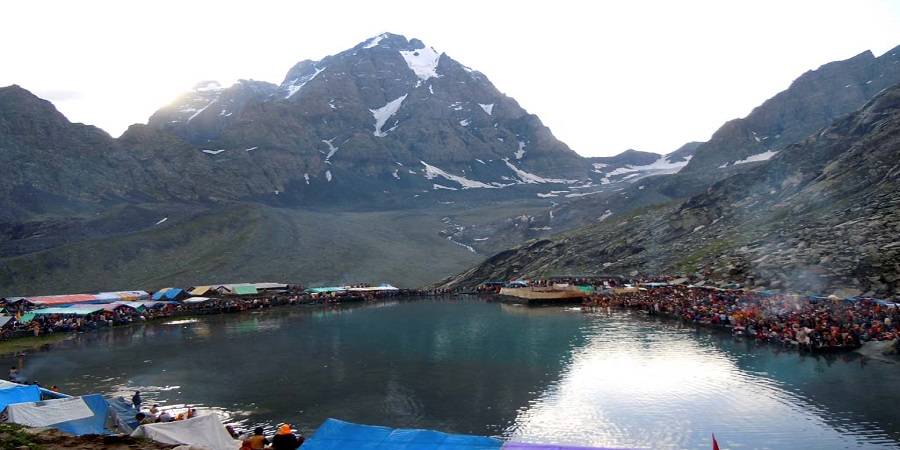
Bharmour is a beautiful town that is surrounded by Pir Panjal mountain range. It is also known as the Land of Shiva since the famous Mount Kailash is located in this area. The town is popular for its beautiful surroundings, Manimahesh, Bharmani Mata Temple, Thala Waterfall, Hadsar Waterfall, Kaksen – Bhagsen Waterfalls, and Chaurasi temples.
How to Plan a trip to Kugti
Here are some ways to reach Kugti village and the wildlife sanctuary:
- By Train – The Pathankot Railway Station is the closest railhead to Kugti Sanctuary. It is at a distance of around 180 km from the sanctuary. You can reach Pathankot from most major railway stations in India. From Pathankot, you can either take a cab to Chamba (around 120 km) and then take to Kugti (80 km) or a direct cab to Kugti.
- By Flight – The Jammu Civil Enclave or the Jammu Airport is the nearest airport to Kugti. It is located at a distance of around 290 km from Jammu Airport. From the airport, you can either take a cab directly to Kugti or take a bus to Chamba (around 206 km) and then take a cab to Kugti.
- By Road – To reach the Kugti Wildlife Sanctuary by road, you can either take a flight to Jammu or a train to Pathankot from any part of India. You can then take a cab directly from Jammu or Pathankot to Kugti village . Alternatively, you can take a bus to Chamba and then a taxi to Kugti.

Book your cab to Kugti using Savaari’s online cab booking app and avail exciting app-only discounts.
The best time to visit Kugti is from April to June and October to November. The weather during these months is pleasant and the flora and fauna are at their best.
- The Kugti Wildlife Sanctuary is one of the least-explored places in Himachal Pradesh. Hence, ensure that you plan your trip carefully before leaving.
- If you love nature photography, then this sanctuary can be an endless source of joy. Be sure to carry extra memory cards as you will never run out of picture-perfect frames.
- While visiting any religious place, ensure that you adhere to the guidelines specified by the locals.
- With minimal to zero phone connectivity and patchy electricity during winters, ensure that you are not stuck here due to the unavailability of these modern-day amenities.
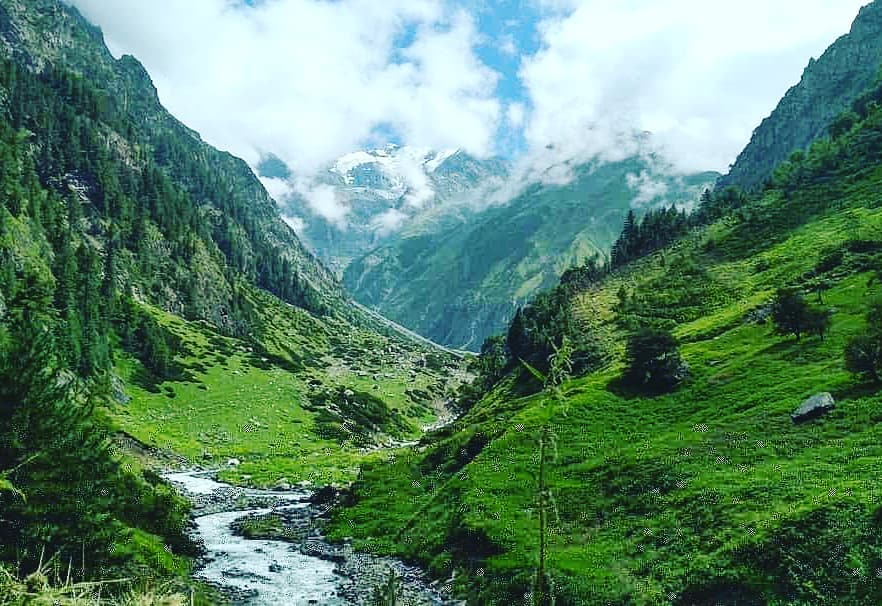
The Park opens for tourists from 8 AM to 4 PM on all days of the week.
There is no entry fee to visit the Kugti Wildlife Sanctuary.
About Kugti Wildlife Sanctuary
The second-largest wildlife sanctuary in Himachal Pradesh , the Kugti Wildlife Sanctuary is situated at an altitude that ranges from 2195 meters to 5040 meters above sea level. With a diverse landscape and an abundance of flora and fauna, the sanctuary has bountiful water resources originating from the glaciers. It also houses the famous Manimahesh temple that thousands of pilgrims visit yearly.
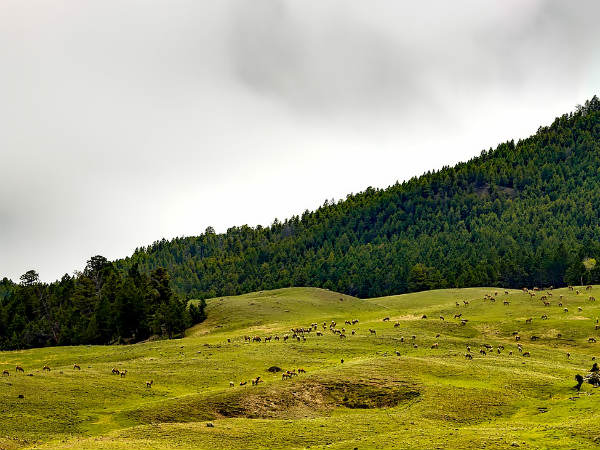
The Kugti Sanctuary is home to western mixed coniferous trees, moist-temperate deciduous trees, Kharsu oak, Birch or Rhododendron scrub trees, and alpine trees and pasture. The Kugti National Park also houses some interesting wildlife like the Brown Bear, Cheer Pheasant, Common Langur, Goral, Himalayan Black Bear, Himalayan Ibex, Himalayan Tahr, Koklas, Leopard, Leopard Cat, Monal, Snow Leopard, and Yellow-throated Marten . The bird fauna of Kugti is still unexplored and fascinating. With over 40 species of birds recorded so far, it is a paradise for bird watchers as you can spot a rare bird at any time.
Kugti Sanctuary Facts
Here are some interesting facts about the Kugti Wildlife Sanctuary:
- The Kugti Sanctuary is located at a distance of around 85-90 km from Chamba, Himachal Pradesh, around 30 km from Bharmaur, and 15 km from Kugti village.
- The sanctuary is spread across an area of around 378 square km.
- It has flora and fauna unique to the Himalayan region and is home to the less-known Himalayan Brown Bear. While India is usually associated with the Black Bear, the Himalayan Brown Bear, also known as Dzu-The, is found in Kugti National Park.
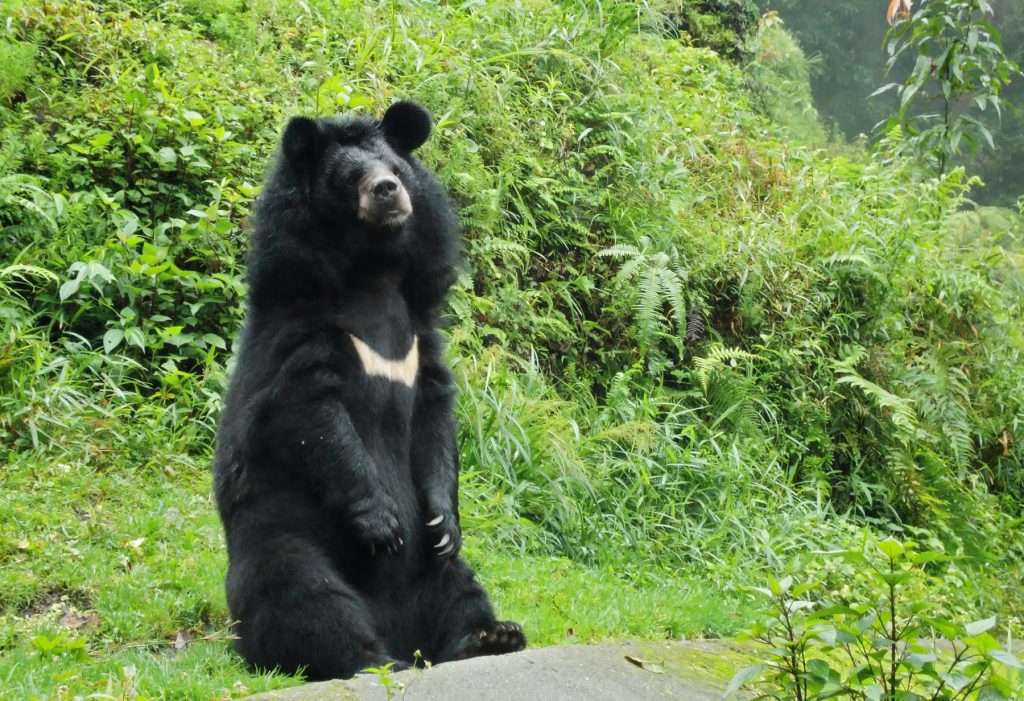
Kugti is the last village in Chamba and is an excellent destination for people looking for a remote Himalayan village experience. The villagers of Kugti are self-sufficient and tend to grow their own food and keep livestock. The locals are warm and welcoming too. Winters can be a little harsh here so be careful before planning a winter getaway to this remote village.
Here is a list of resorts and hotels to stay near Kugti Wildlife Sanctuary (30-40 km from the sanctuary):
- Tandi Sarai Huts
- Hotel Bharmour View
- Hotel Highland
- Araiya Palampur
- Rakkh Resort
- The Citadel Resorts, Jiya
- Hotel Thamsar
- Hotel Rongla
- RS Sarovar Portico
- Mastiff Villa Camellia
Last Updated on February 2, 2024 by Swati Deol
About the author
Related posts.
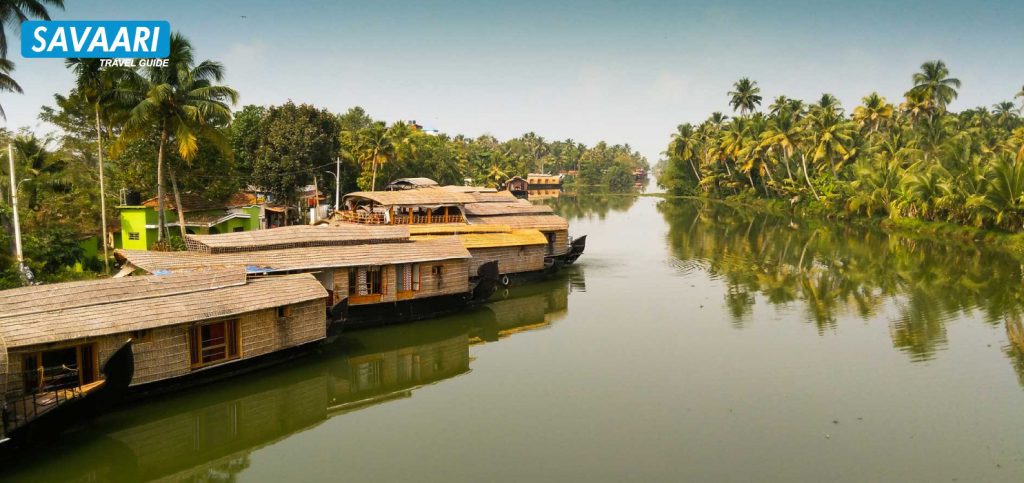
Top Things to do at Kumarakom Bird Sanctuary
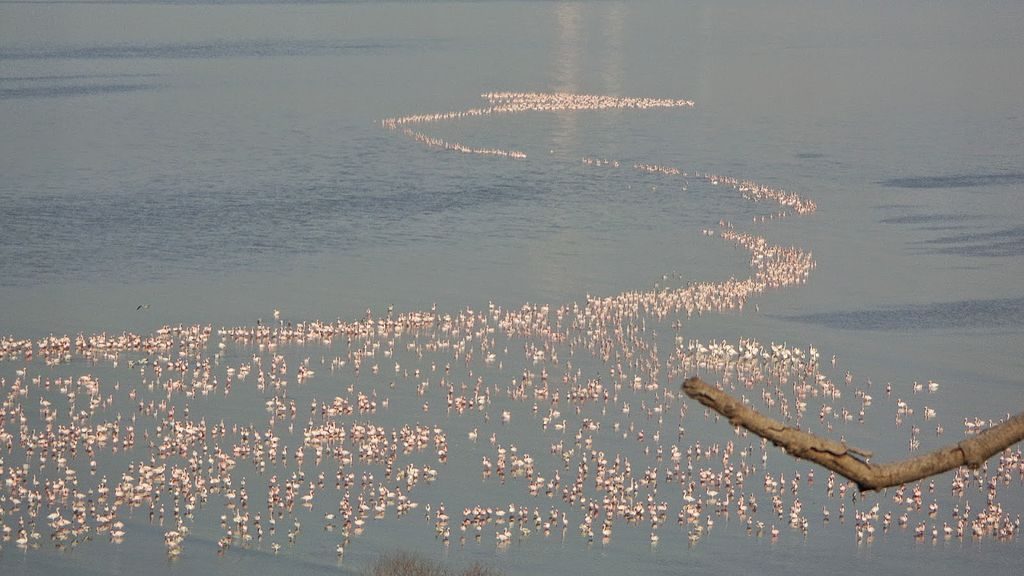
Mumbai for the nature lover

Lesser Known Winter Adventures in India
Leave a reply cancel reply.
Your email address will not be published. Required fields are marked *
Save my name, email, and website in this browser for the next time I comment.
FootLoose Dev
Travel blog by an Indian travel blogger.

Kugti — The Last Village In Chamba, Himachal Pradesh
At less than 10 km from village Kugti, began what’s otherwise known as the ‘second-largest sanctuary in the state of Himachal Pradesh’.
Kugti Sanctuary, I didn’t know — before I got there and a part of me made me Google about the place — is one of the last homes for the Himalayan tahr .
It, also, is territory for Snow Leopard.
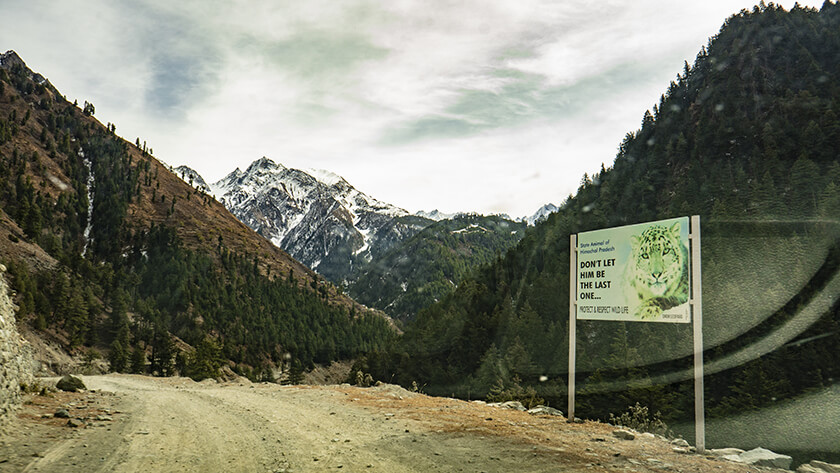
And so began my day-trip from Bharmour to Kugti!
Kugti — The Last Village In Chamba
To give you an idea, from Kugti, Keylong, in Lahaul Valley, is less than 50km (speaking of the aerial distance). If we build a tunnel tomorrow, it will be less than one and a half-hour drive away.
Right now, it’s a 2-day journey that takes you through a needless 350km drive.

Think of Kugti as the gateway for Chamba to Lahaul-Spiti, tomorrow.
“In summer months you will find a lot of Gaddis (local shepherds) making their way to Lahaul, from Kugti sanctuary. They start from the lower altitude villages near Chamba and finish their journey in Lahaul. Takes them nearly six months to do a return trip,” I was told.
“There is no phone reception in the village. In winter, there’s no electricity either,” the person added.
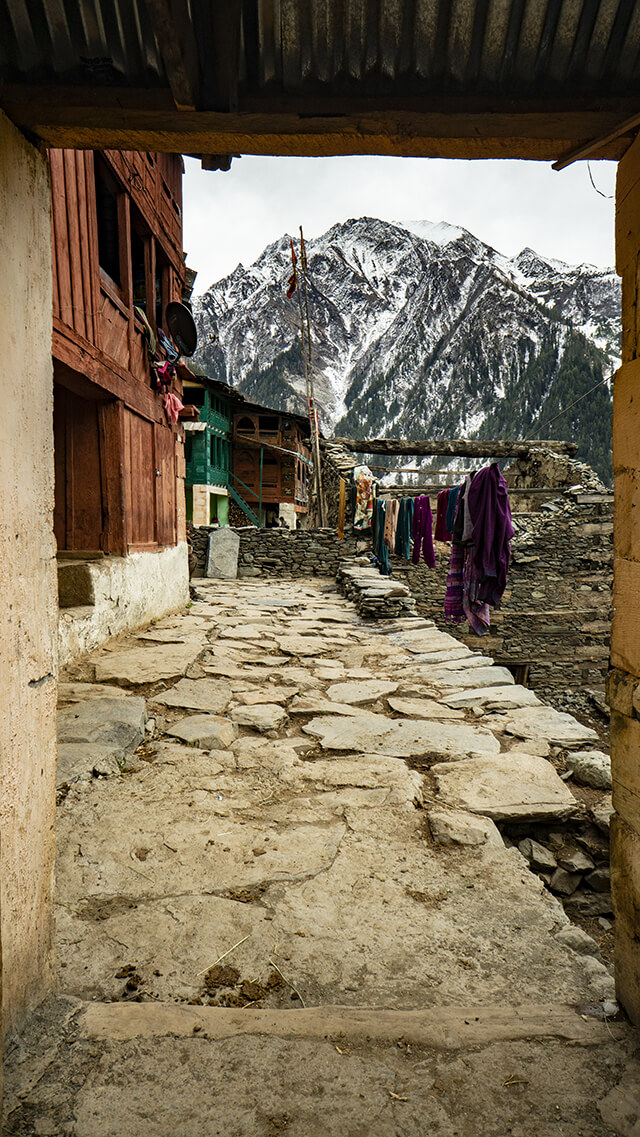
I would recommend Kugti to those who enjoy visiting remote Himalayan villages. A one day trip, no matter in what season, is enough to explore the surrounding and understand the hardships of the day-to-day life in the higher Himalayas.
Most families in Kugti are self-sufficient, and it is not hard to guess how, or Why! From keeping livestock to growing their own food, life in Kugti feels harmonious to nature. Mules are, to the date, still used to carry essentials.
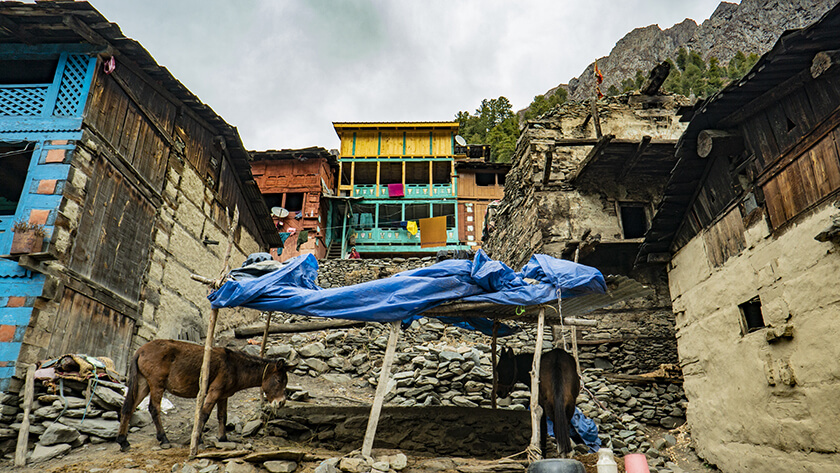
My Trip To Kugti Village
My trip to Kugti happened during a one-week trip with Explore The Unexplored. Read about my 1-day Dalhousie itinerary (exploring Dalhousie, Khajjiar & more) with them. That was day 1. Day 2 included visiting a local village & the Anan temple/waterfall. Kugti was on day 5 of the trip.
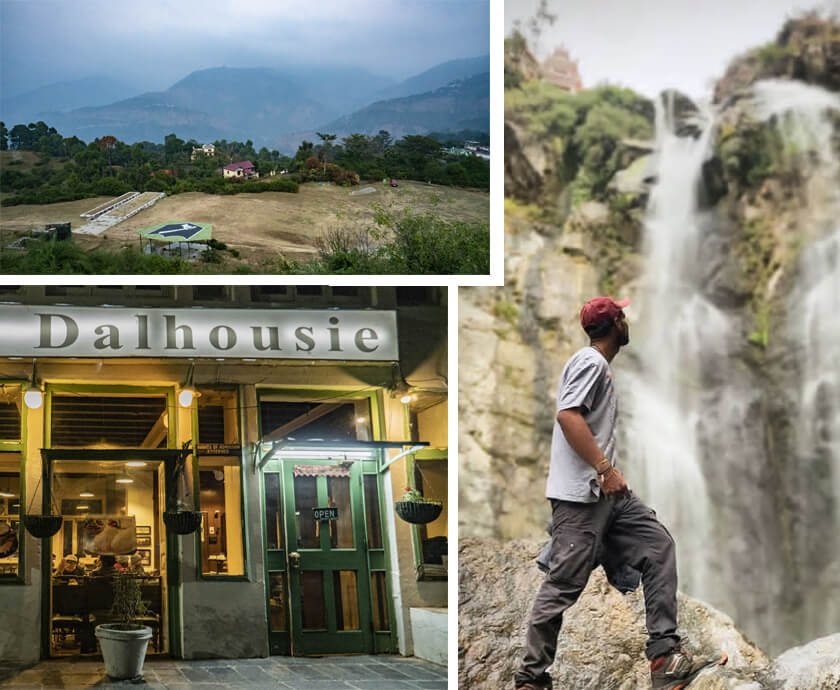
I, along with Anil (the local point of contact for a trip with Explore The Unexplored) started in our Alto 800 at 7 in the morning. It felt just as quiet as a Monday morning for a trip to Bharmour to Kugti journey should feel like.
Also Read: Other Places to Visit In & Near Bharmour
The journey from Bharmour to Kugti was less than 25 km but it took us about 2 hours. There were no places to eat on the way, but enough viewpoints to stop and take a picture.
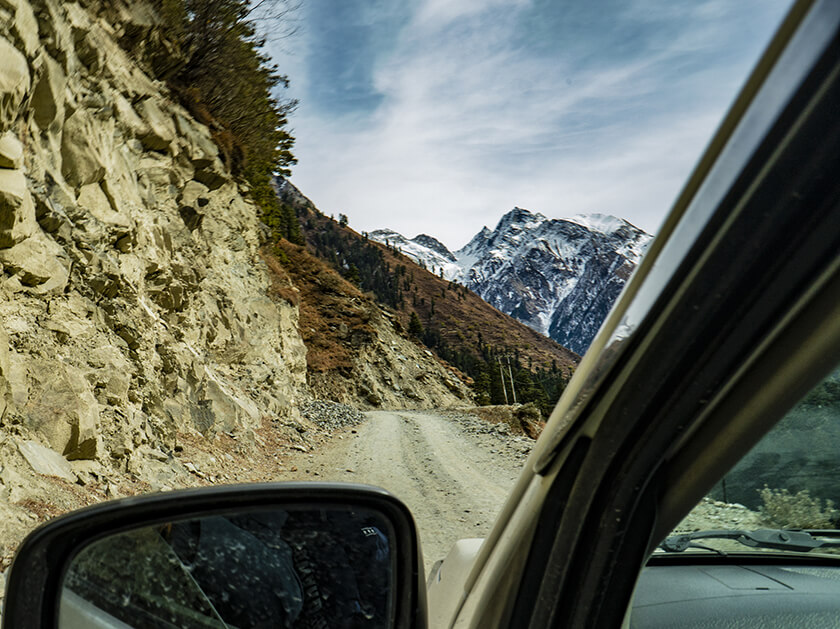
About half an hour from Bharmour was the town of Hadsar — the starting point for the pilgrims doing Manimahesh Yatra .
A few km after crossing Hadsar started Kugti Sanctuary and that’s when I got the first closer view of the snowcapped Himalayas at a distance. Beyond this point, there was no phone network.

The Bharmour-Kugti road is currently under construction with some patches still being made. Though rest assured, it’s motorable for something as small as an ALTO to something as big as an HRTC bus.
As I said above, we were driving an ALTO 800 and the ground clearance was no problem for us. In the month of November, in 2020, we parked our car right before the village. From the parking spot, Kugti was less than 300m away. The road was currently under construction and will soon go 2km beyond Kugti village.
What To Do In Kugti
Kugti is a place meant for slow travellers. Just walk around the many alleyways and explore the life around. It should be okay to trespass into any private property and speak to locals.
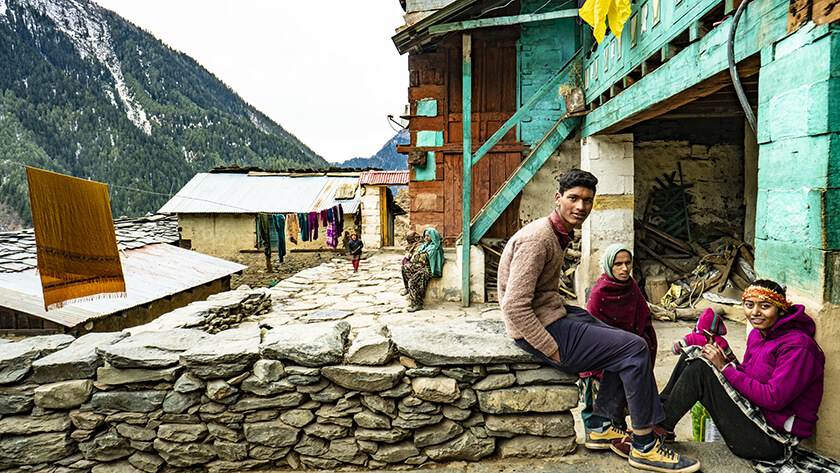
Other than that, there is a lot of beauty to appreciate around. During winter month, you will find Kugti buried under as much as 5 feet snow. During the summer months, the place is, on the contrary, greener.
Here’s a photo comparing summer and winter in Kugti.

Kartik Swami temple can be another reason for someone to be visiting Kugti. Located on the way to Kugti Pass, the temple is the vantage point to see beautiful snow-covered mountains and green spaces around. It is a 7 km trek to the temple (from Kugti village).
The temple is locally known as Kelang Wazir, other than Kartik Swami, and it’s worth knowing the history of the temple once you are there. The temple is revered by both Gaddis as well as the people from across Himachal Pradesh.
Please note that the temple is opened only during summer and autumn months. Heavy snow makes it too impossible to access the place in winter. Even in the month of November, when I visited Kugti, there was enough snow to cut off any human movement from.
If you are religious, there are more reasons for you to visit the temple. The temple complex has two temples, one of Kartik and other of Marali.
But on a day-trip from Bharmour to Kugti, it isn’t possible to visit Kartik Swami Temple. So we will stick to that spectrum only and speak about WHY VISIT KUGTI?
- To explore local life: eat local food, enjoy local
- To enjoy the luxury of being the only tourist in the village (even if you stay overnight).
- To experience the unparalleled beauty of such unexplored parts of Chamba. Not exaggerating, but Kugti happens to be one of my favorite places to travel in Himachal Pradesh .
A Few Photographs of Life Around
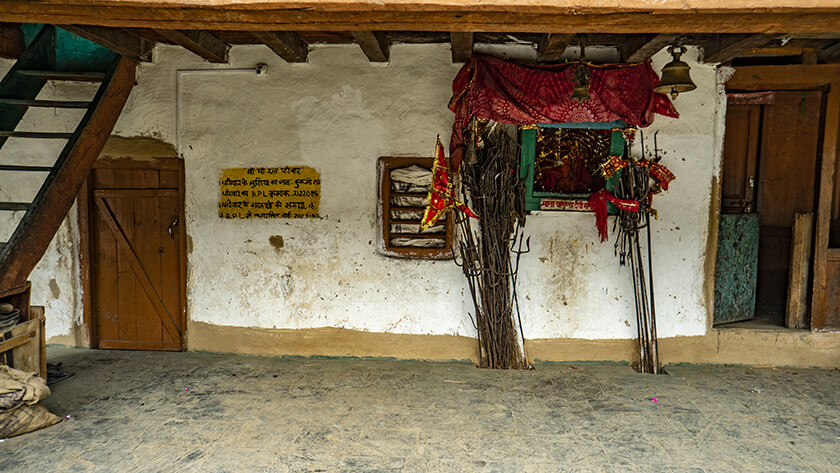
Every house in Kugti has a small temple stuck its wall with sculptures of Krishna and Shiva inside.
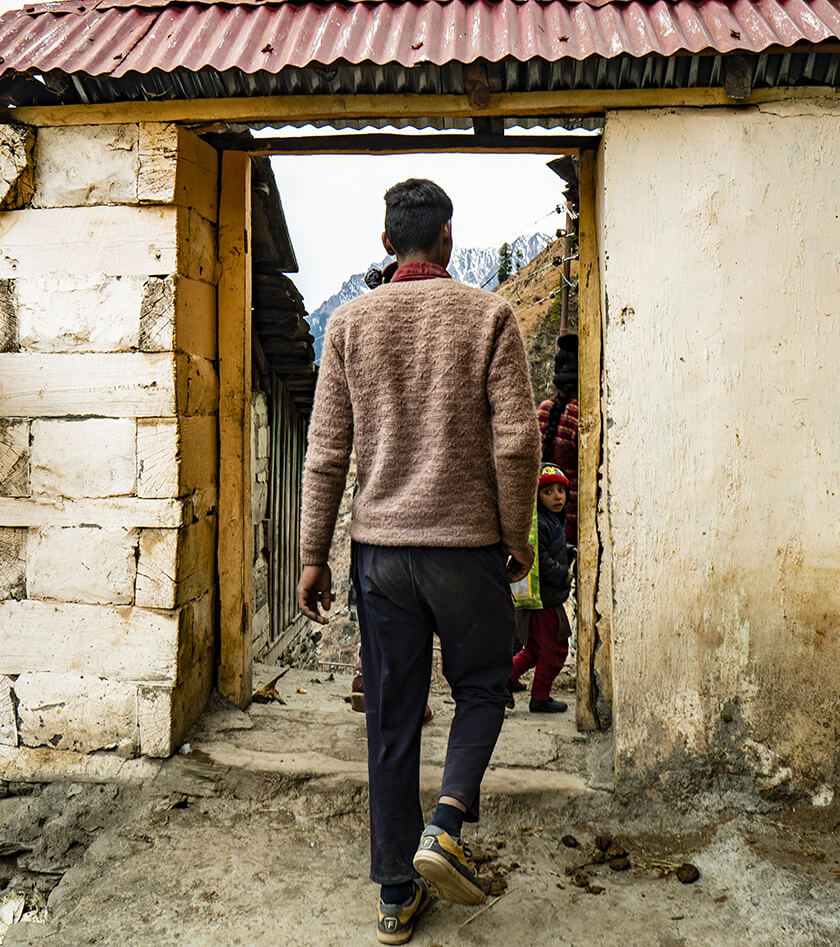
A few locals exiting their house.
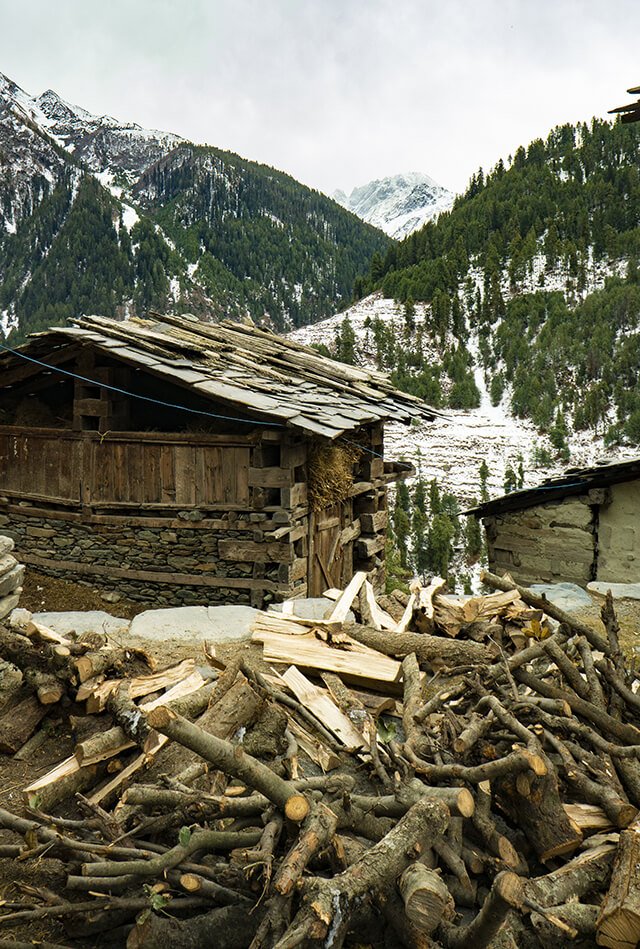
A 100% of the houses in Kugti resemble Khat Kuni architecture – a traditional technique that uses alternating layers of long thick wooden logs and stone masonry, held in place usually without using mortar.
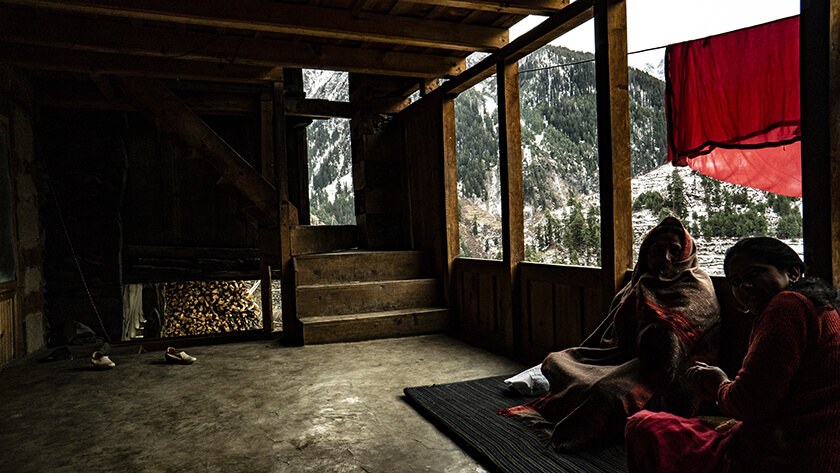
This Khat Kuni style of architecture helps to keep the indoors cool in summer and warm in winter.
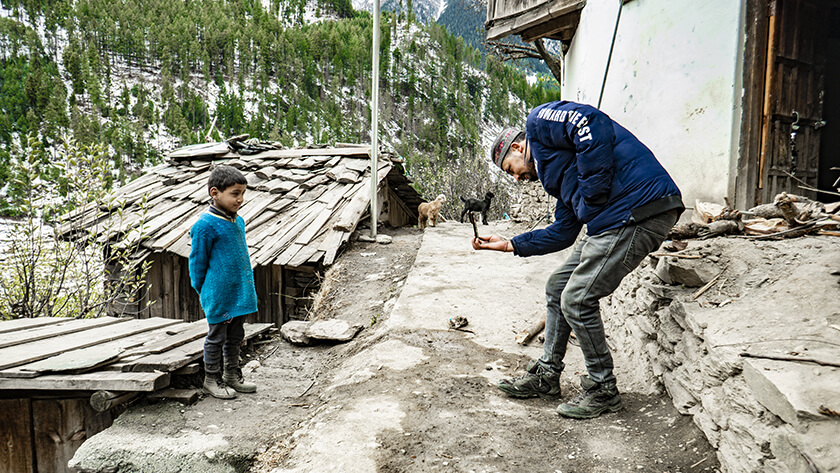
On the streets of Kugti – a man clicking the photo of a child.
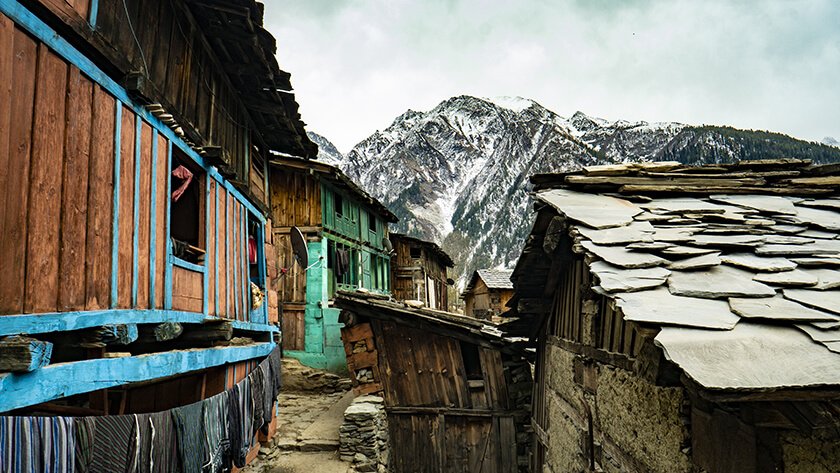
The cluster of houses. When asked why houses are stuck so close to each other I was told: “because it helps in surviving the harsh winter.”

A group of kids playing.
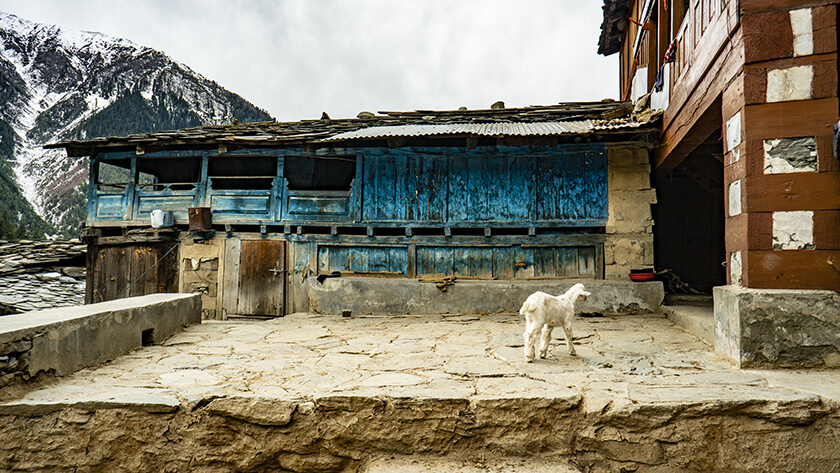
Keeping livestock is crucial for people in Kugti. 90% of the families own Goats, horses/mules and cows (that look something in between a cow and a Yak).
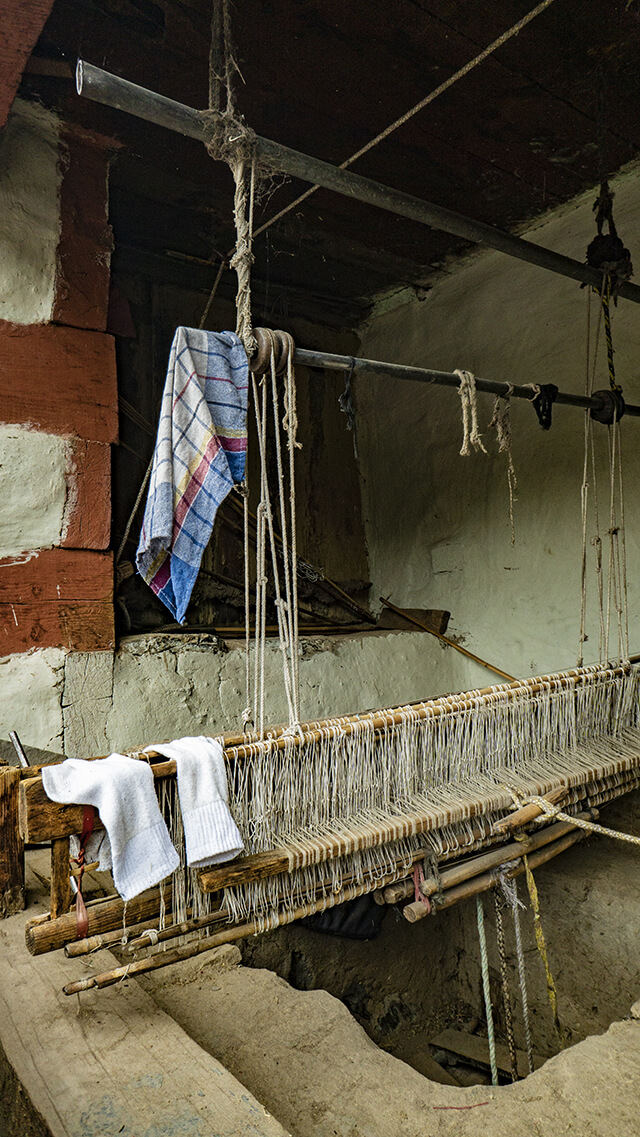
A handloom machine that is certainly not rare to find across Himachal Pradesh. The only difference remains the way they function.
Where To Stay In Kugti
When I visited Kugti in November 2020 there were no homestays or guesthouses in Kugti. However, I saw a few under construction. I will share more details once they’re ready.
For now, make Bharmour your base and do a day-trip to Kugti. Since it’s only a 2-hour journey, if you leave early, you will have enough time to explore the village. You can contact Anil (in Bharmour: 8219477502) or contact Explore The Unexplored and book your trip all the way from Dalhousie or Bakloh (9882121616. You can also find them on Instagram with the username ‘ETU.ADVENTURES’).
Also Read: My Top Favorite Holiday Destinations in India
Beautiful. I would rather stay overnight at Kugti and experience the charm of Kugti by night too. In one of the you tube posts I found a kind of homestay accommodation which was quite good by Kugti standards. Your description of the place is super.
Hey Dev it’s such an amazing experience I am a social worker and wanted to stay in Kugti for one week to know more about the women and the children living there can you please suggest that where should I stay as you have mentioned that you can arrange stay at Bharmour isn’t there any hp govt rest house?
Leave a Reply Cancel reply
Your email address will not be published. Required fields are marked *
Kugti Wildlife Sanctuary
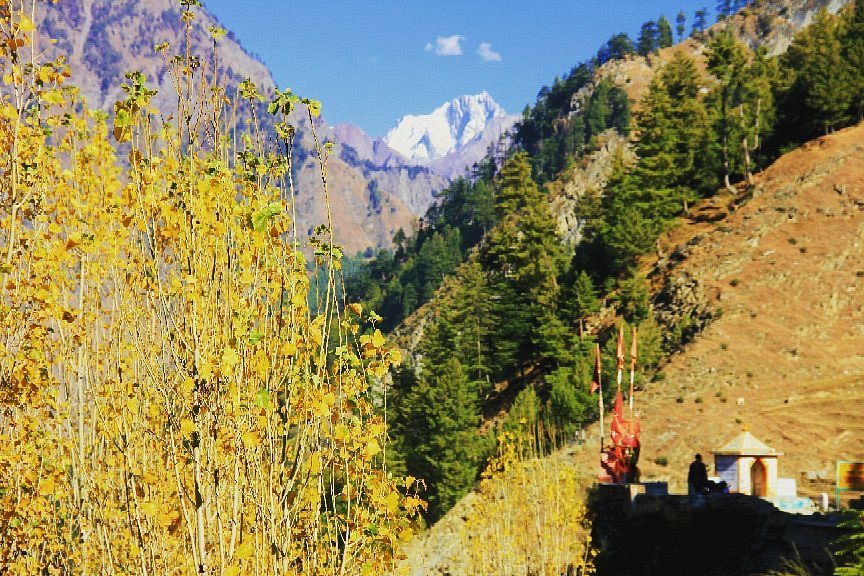
Top ways to experience nearby attractions

Most Recent: Reviews ordered by most recent publish date in descending order.
Detailed Reviews: Reviews ordered by recency and descriptiveness of user-identified themes such as wait time, length of visit, general tips, and location information.

Also popular with travelers

Kugti Wildlife Sanctuary - All You Need to Know BEFORE You Go (2024)
- Sun - Sat 12:00 AM - 11:59 PM
.png?w=auto&h=400)
Kugti Pass Trek
Kugti pass trek overview.
The Kugti Pass trek in Himachal Pradesh takes you to a formidable height of 16,700 feet and is one of the most stunning yet untouched hikes. The Kugti Pass trek is a great entryway and is frequently used by the Gaddi tribes to travel to the Lahaul and Spiti regions to graze their sheep. This journey is one of the most difficult hikes in the Central Himalayan mountains due to its rigorous ascent, rugged terrain, and treacherous routes. Before beginning this difficult walk, you must have previous hiking experience at a high altitude. Your hearts and spirits will be captured by the beautiful scenery of the Manimahesh Kailash peak, the Grechu Pass, and the dry, desolate hills of the Lahaul valley from the pass.
The Kugti Pass trek is located in the Himalayan Pir Panjal Range. The journey begins at Bharmour. At the summit of Kugti Pass, there is a revered Hindu shrine dedicated to Marali Devi, where there are bells, iron ornaments, and some pieces of coloured fabric. You begin your descent and complete your walk at Manali after spending some time at the pass.The Kugti Pass base camp trek is ideal if you're captivated by high elevations, nature's masterpieces, and heart-pounding thrills and experiences.
Quick Facts of Kugti Pass Trek

Maximum altitude: 16700 feet
Grade: Difficult
Duration: Eight days
Trekking distance: 60 kilometers
Rail head: Pathankot Railway Station
Airport: Gaggal Airport
Snow Season: January and February
Service from: Pathankot Railway Station
Base camp: Kugti Village
Best season: Winter season (January and February)
Region: Himachal Pradesh
Kugti Pass Trek Itinerary
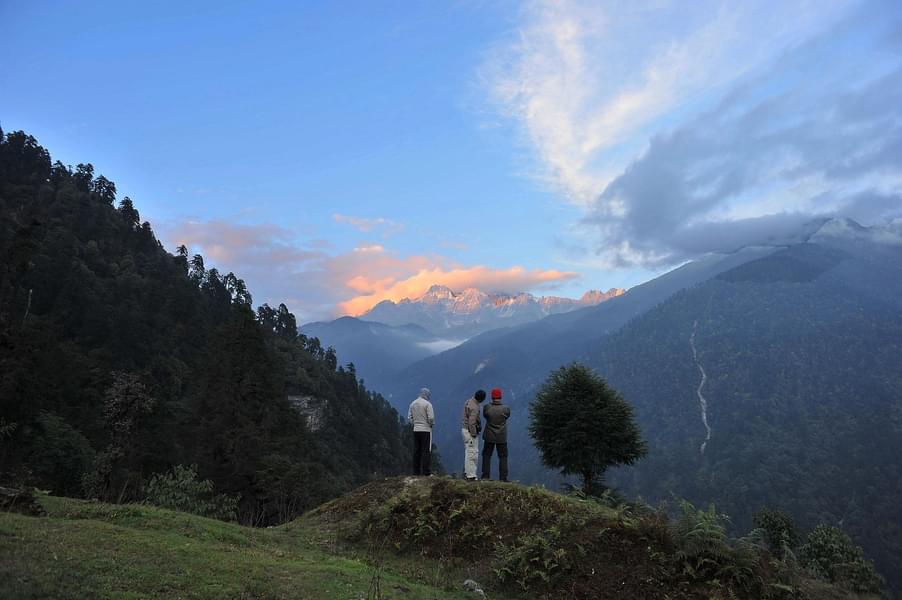
Pathankot Cantt to Bharmour
Your journey to Bharmour will begin once you reach Pathankot.
It takes 7 to 8 hours to go to the former capital of the historic Chamba region, which is surrounded by apple orchards, pine woods, and the Himalayan mountain ranges.
Have a meal with plenty of energy later in your trip.
After arriving in Bharmour, check into the hotel/camp and then retire for the evening.
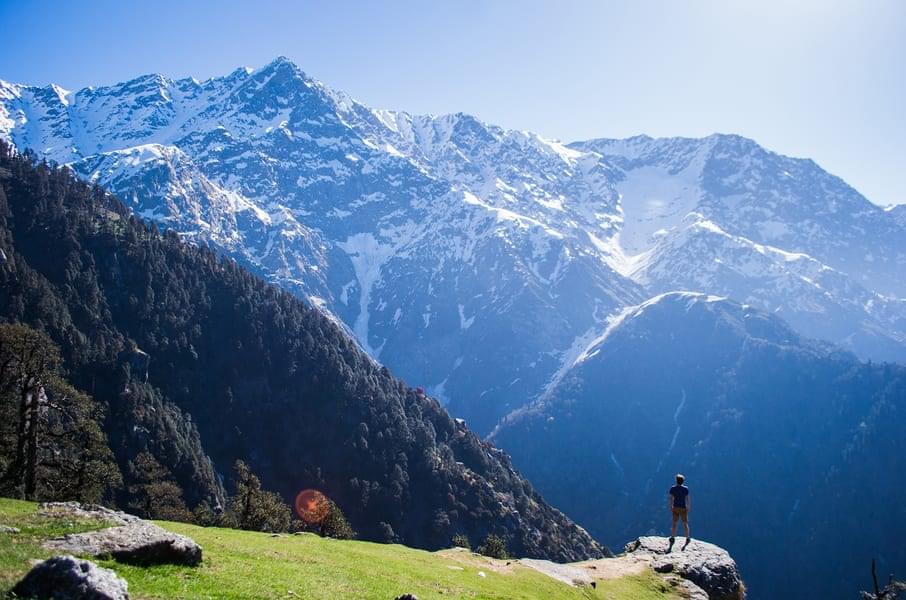
Bharmour to Bharmani Temple
Start your day by enjoying a great breakfast.
Start a short hike to the Bharmani temple and observe the little flags and bells around it.
Get some rest and have lunch close to the temple.
After returning to Bharmour by foot, explore the nearby bazaar.
Visit the 1,400-year-old Chaurasi temple in the evening.
Conclude your day with a nutritious meal.
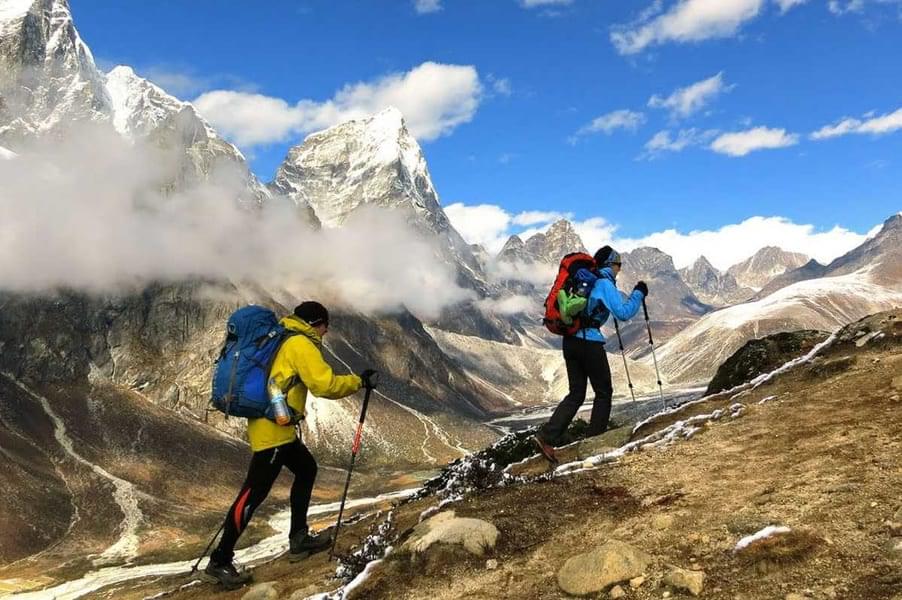
Bharmour to Duggi
Start your journey to Kugti village, a location with unspoiled natural beauty, after stretching a little.
Trek to the Kartik Temple, which is extremely precious to the "Gaddi" Tribes.
Duggi is the day's last destination, and here you will have the rest of your meals.
Lay down in the freezing snow and enjoy making your snowman.
Stay the night in the camp.
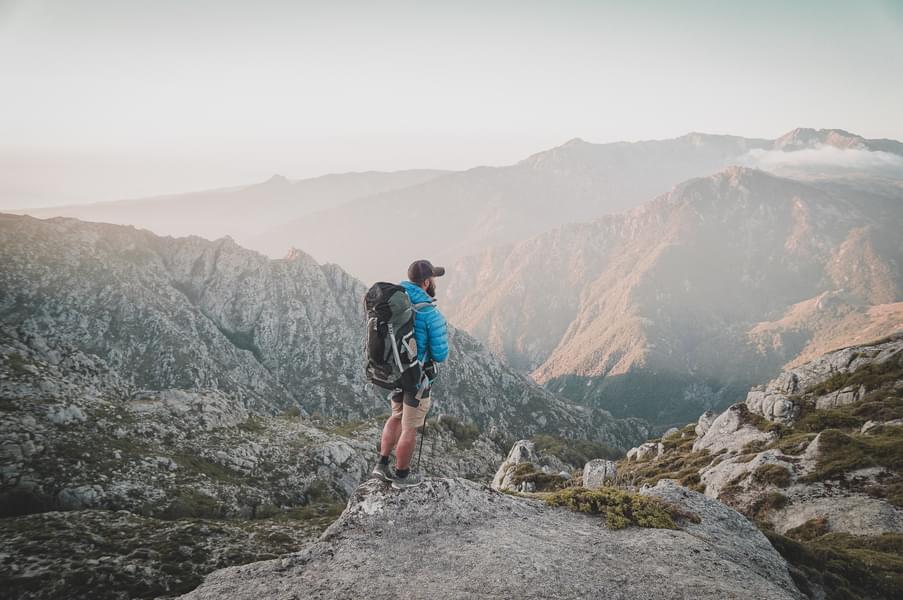
Duggi to Kugti Pass Base Camp; camping at the height of around 16,700 feet
Start your 4- to 5-hour climb to Kugti Pass.
You can see the Kugti Wildlife Sanctuary while traveling.
Lunch is served once you get to the campgrounds, which are around 16,700 feet above sea level.
Take candid pictures of the surreal surroundings.
Have a lovely nap while lying among the stars.
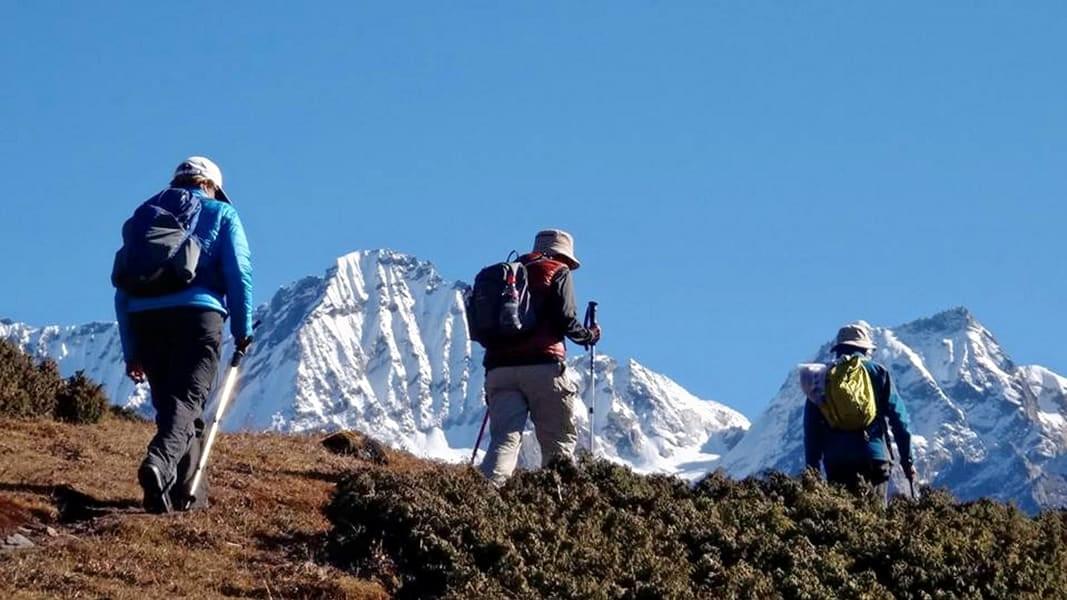
From the base camp of the Kugti Pass to Duggi, enjoy the snow
Trek back to Duggi after a revitalizing cup of tea.
Arrive at the campgrounds and enjoy delicious meals.
Interact with the staff with you at Duggi.
Play in the snow.
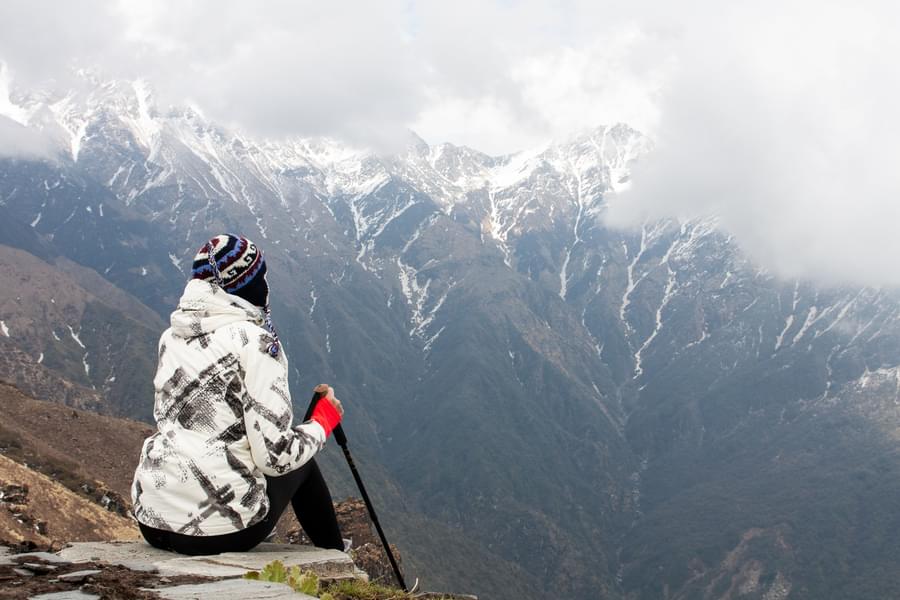
Duggi to Kugti to Bharmour
Have a nutritious breakfast to start the day.
Once more at Kugti Village, take a moment to admire the wooden cottages.
Leave Kugti towards Bharmour.
Visit the neighborhood markets in the evening and sample some of the hot and spicy food prepared there.
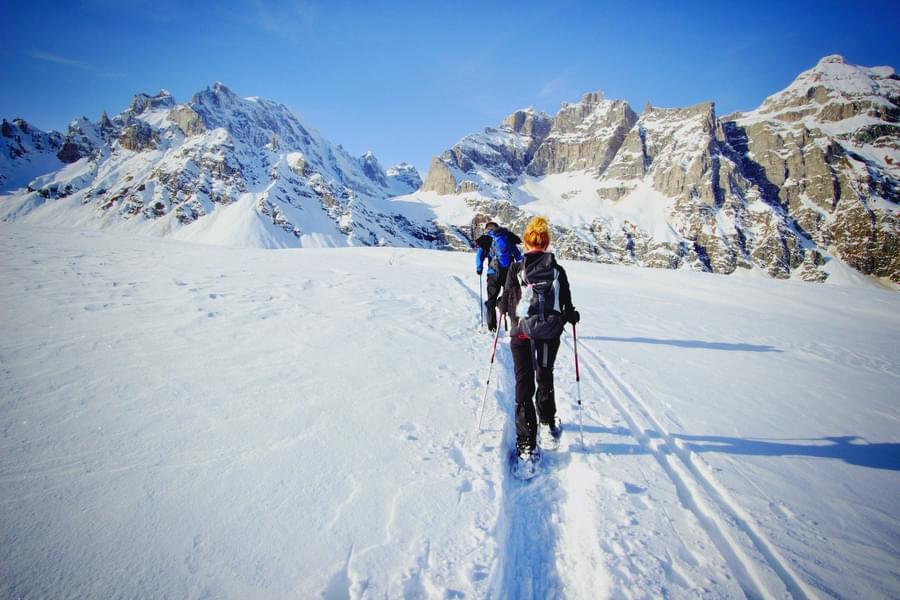
Bharmour to Dalhousie
You will set out for Khajiyar, known as the "mini-Switzerland of Himachal Pradesh," on the seventh day.
You'll go to Dalhousie later on in the day.
When you get to the little mountain town known for its colonial-era structures, check into the hotel.
Visit the local markets in the evening and take in their beauty.
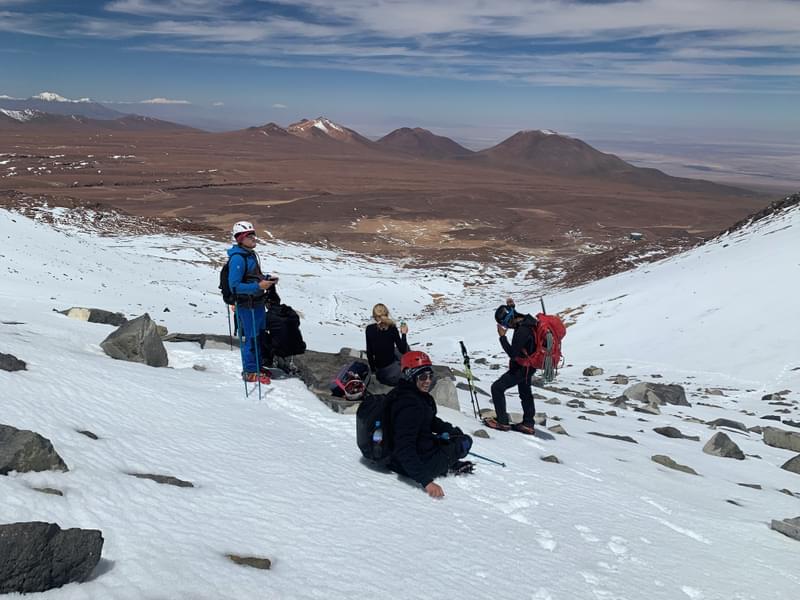
Dalhousie to Pathankot
As you return from Dalhousie to Pathankot, you may observe emerald green fields as you go.
Return from this journey with a backpack full of memories.
What to Pack for Kugti Pass Trek?
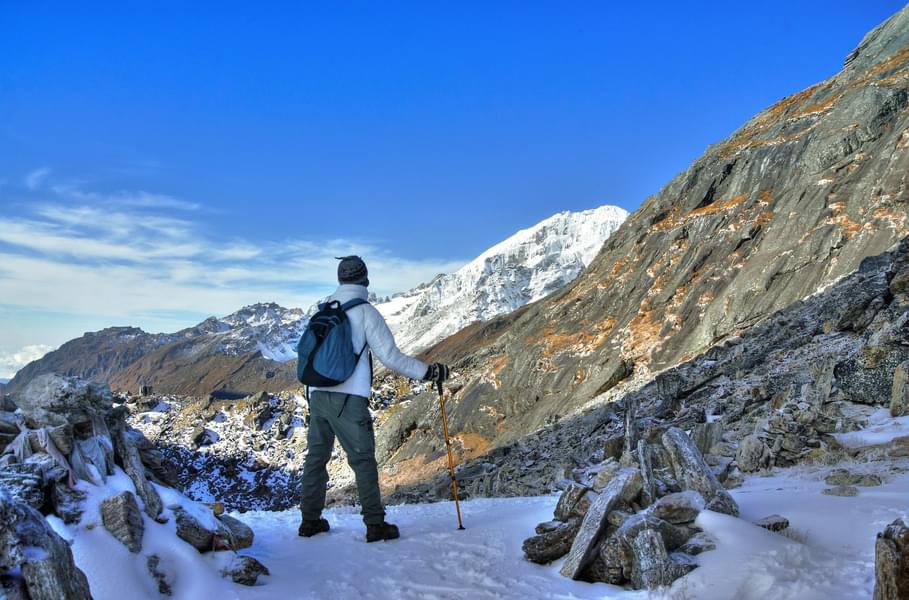
Documents - Carrying your documents is essential to access important sites. Take along your Identity card that includes a passport, Adhar card, voter identification card, driver’s license or others.
Clothes - You must pack clothes suitable for the weather. Cotton tees should be avoided in favor of quick dry tees, bandanas, scarves, or hats; a thick coating (Pullover, sweater or jacket) must be carried in case it gets cold at night. Trekking shoes or hiking boots is a must for the hilly terrain.
Consumables - Be sure to carry dried foods and packaged water for an easy trip. You need water (Minimum three liters), Salt plus lemon juice or electrolyte powder along with foods with a lot of calories, including nuts and dried fruits, etc.
First aid kit - Make sure to carry your first aid kit in case of emergencies. Your first aid kit must include scissors, cotton rolls, crepe bandages, and micropore tape.
Medicines - Medicines are a must for any trekking trip that lasts more than 2 days. The best medicines that you can carry are Avomine motion sickness medication, Digene or Gelusil for acid reflux, Crocin for mild pain treatment, and regular and waterproof bandages. Other important medicines include Savlon or Dettol for antiseptic liquid, and Cipladine or Savlon for antiseptic powder.
Know Before You Go for Kugti Pass Trek
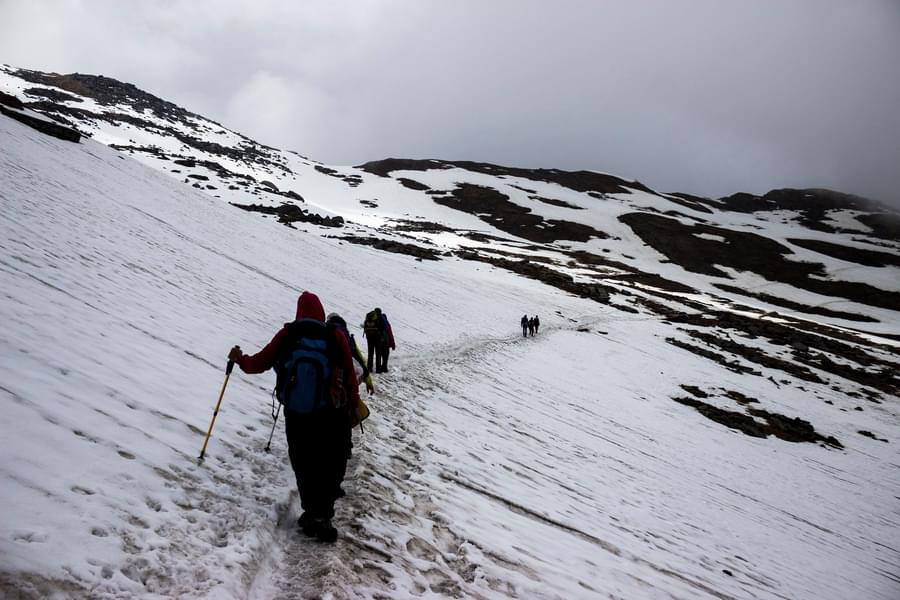
By Air: Gaggal Airport, located 176 kilometers from Bharmour, is the closest airport to Kugti Pass. From the Gaggal airport to Bharmour, you can take a private cab or take public transportation.
By Rail: The Pathankot railway station is the closest rail hub to Kugti Pass. Trains runs frequently between Delhi and Pathankot.
By Road: The quickest route from Delhi to Bharmour is by car. From Kashmeri Gate, you may go directly to Chamba on a Volvo or any HRTC bus. You will arrive in Chamba directly from the overnight bus, where you can take another bus or hire a taxi to Bharmour.
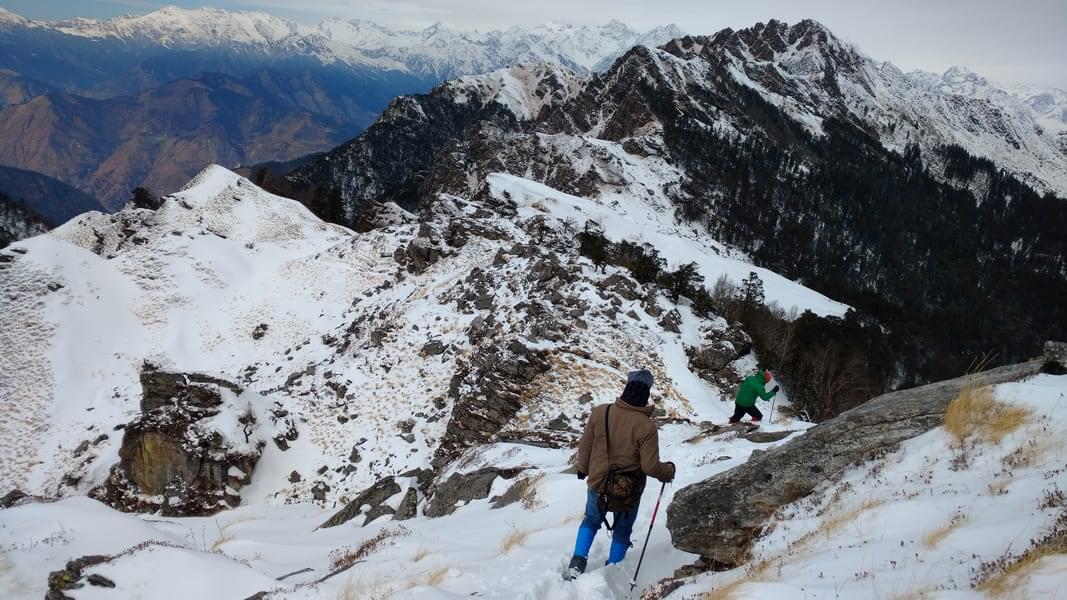
By keeping in mind a few key pieces of advice, you may simplify, hassle-free, and enjoy your Kugti Pass base camp trek. A good expedition may be achieved by carrying important documents, having first aid supplies on hand, packing light, and traveling at the right time of year.
Always keep a first aid kit on hand, along with all the necessary medicines.
Before starting the walk, research the weather and the condition of the roads.
Keep yourself hydrated all the way during the stroll.
Dress comfortably for a long hike that won't be an issue in between.
Put on footwear with soft soles and good traction.
Start a fitness routine at least a month before your Kugti Pass Trek.
Make the necessary inquiries regarding any ailments associated with high altitudes and the local therapies available.
You May Also Book
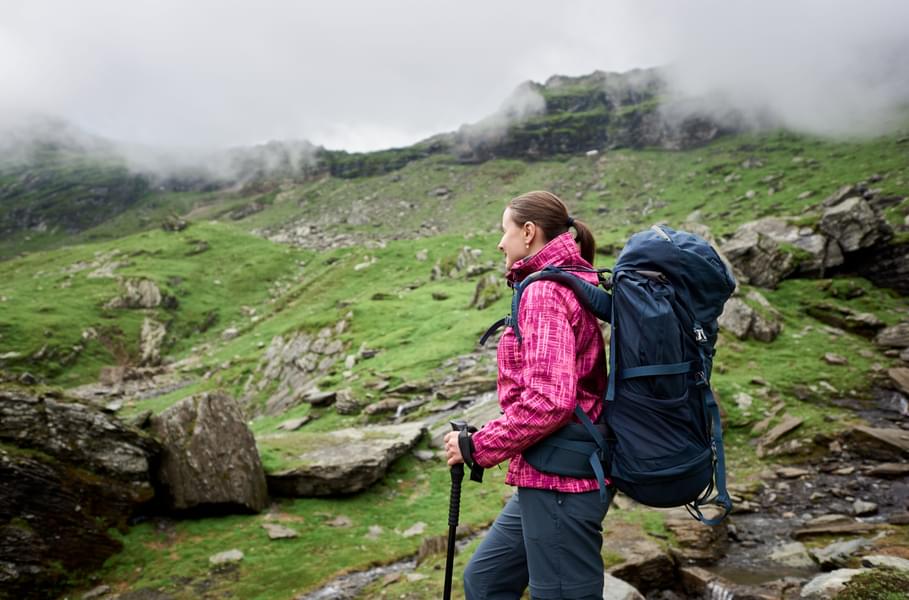
FAQs of Kugti Pass Trek
Are there horses available for offloading at kugti pass trek.
You must carry your own belongings to the campsite and for the duration of the Kugti Pass trek because horses are not available for offloading.
Where is Kugti Pass located?
The Kugti Pass trek is located in the Himalayan Pir Panjal Range. The journey begins at Bharmour. At the summit of Kugti Pass, there is a revered Hindu shrine dedicated to Marali Devi. You begin your descent and complete your walk at Manali after spending some time at the pass. The Kugti Pass walk is ideal for you if you're captivated by high elevations, nature's masterpieces, and heart-pounding thrills and experiences.
How difficult is the Kugti Pass trek?
One of the most difficult treks in Himachal Pradesh is the high-altitude Kugti Pass climb. It brings you to the highest point in Himachal, which is 5090 meters above sea level, in an undiscovered area of the state. This Himachal hike is difficult because of the strenuous ascent and challenging terrain.
What is the best time to do the Kugti Pass trek?
Mid-June to mid-October is the best time to do the Kugti Pass Trek. A lot of snow may be seen at the high passes in the early part of the season. When August arrives, the snow cover begins to thaw. As the season progresses, it's possible to discover rain in Spiti and a brilliant sun in the Kullu-Manali Valley. The nights are frigid, especially at the upper campgrounds, with temperatures ranging from -2 to 6°C, but the days are often mild and sunny.
What is the highest altitude reached during Kugti Pass trek?
The Kugti Pass Trek brings you to a breathtaking elevation of 5090 meters in an undiscovered region of Himachal Pradesh.
More Treks in Himalayas
- State Wise Treks
- Challenging treks in Himalayas
- Treks in Summers
- Treks in Winters
- Treks in Monsoon
- Treks in Autumn
.png?w=auto&h=400)
The content and images used on this site are copyright protected and copyrights vests with the respective owners.
- Logout Login
- Adventure Holidays
- Weekend Getaways
- Driving Holidays
- Travel News
Kugti Wildlife Sanctuary in Himachal–its natural springs, rare fauna & flora and more
Resham Sengar , TIMESOFINDIA.COM , TRAVEL GUIDE , HIMACHAL PRADESH Updated : Apr 23, 2021, 09:29 IST

Kugti Wildlife Sanctuary
Kugti Wildlife Sanctuary is the second largest sanctuary in Himachal Pradesh spread over an area of 378 sq km. Located at a steep height of 2195 m to 5040 m, this region is home to several medicinal plants and some of the rare floral species. To its west lies the Tundah Sanctuary divided by a forest corridor. It is located 87 km from Chamba, 30 km from Bharmaur and 15 km from Kugti village.
What is it famous for?
Kugti has a lot of water springs made from melting glaciers. There are medicinal herbs discovered in the area by researchers and local experts, and they are Pedophyllum Hexandrum (Bankakudi), Aconitum Heterophyllum (Potish), Angelica Glauca (Chaora) etc.
The Kugti Wildlife Sanctuary houses endangered species like the Ibex, Musk deer, Monal snow Cock, Pheasants, Himalayan Tahr, Red vented Bulbul, White Cheeked Bul Bul and so on.
Trekking towards the Lahaul Valley
Visitors can also trek on the routes leading to dense woods populated with coniferous and Deodar forests. Avid trekkers walk through the sanctuary to reach Lahaul-Spiti district of Himachal Pradesh. The Kugti Pass is one of the three mountain routes connecting the Chamba region to the Lahaul Valley.
When and how to reach?
Kugti Wildlife sanctuary remains snow covered for several months in a year, so the best time to visit is from May to June and September to October. It can be accessed from Pathankot, Chamba, Bharmour, and Hadsar by road. The nearest railway station is at Pathankot in Punjab. Buses and taxis are available from Bharmour and Chamba till Hadsar from where one can trek to reach Kugti.
What else to explore?
Visitors to Kugti Wildlife Sanctuary can also explore Tundah Sanctuary. The nearby destination of Bharmour is also worth visiting for its Chaurasi Temple Complex, Bharmani Mata mandir, waterfalls and other interesting sites. Apples grow here in large numbers, and it is also the base point for the famous Manimahesh Yatra.
Visual Stories
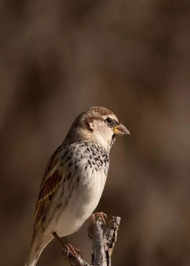
World Sparrow Day: 10 best places for bird watching
Join Us On Facebook Close
Poll of the day, which of these is one of earth's oldest geographical feature, comments (0).

Refrain from posting comments that are obscene, defamatory or inflammatory, and do not indulge in personal attacks, name calling or inciting hatred against any community. Help us delete comments that do not follow these guidelines by marking them offensive . Let's work together to keep the conversation civil.
Comments ( ) Sort: Newest UpVoted Oldest Discussed Down Voted closecomments

SIGN IN WITH
Or post without registration, trending stories.

Unveiling the mysteries: Must-visit Mayan sites across the world

Kashmir: Exploring the beauty of Shalimar and Nishat Bagh this summer

Is it a good idea to go for tiger safari in early summer?

Spain is encouraging retirees to travel with discounted vacations

Geological wonders: 5 of the oldest fossil parks in India

Ayodhya: COVID-19 quarantine wards set up for foreign visitors ahead of Ram Navami

From Gulmohar to Amaltas, flowers that are Indian parallel to cherry blossoms

World's most beautiful walled cities and their timeless charm

Eid Mubarak: 8 places to celebrate in India

Famous parks in Bengaluru for a weekend picnic and lots of fun
From around the web, popular galleries.

Follow us on
Latest news.
- Your complete summer guide to exploring Lansdowne in Uttarakhand
- This European nation is encouraging retirees to travel by offering discounted vacations
Congratulations!
You have been successfully added to the mailing list of Times of India Travel. To complete the subscription process, kindly open your inbox and click on the confirmation link which has been emailed to you.
Share with friends
Thank You for sharing! Your friend will receive the article link on email mentioned.
- (For more than one recipient, type addresses separated by commas)
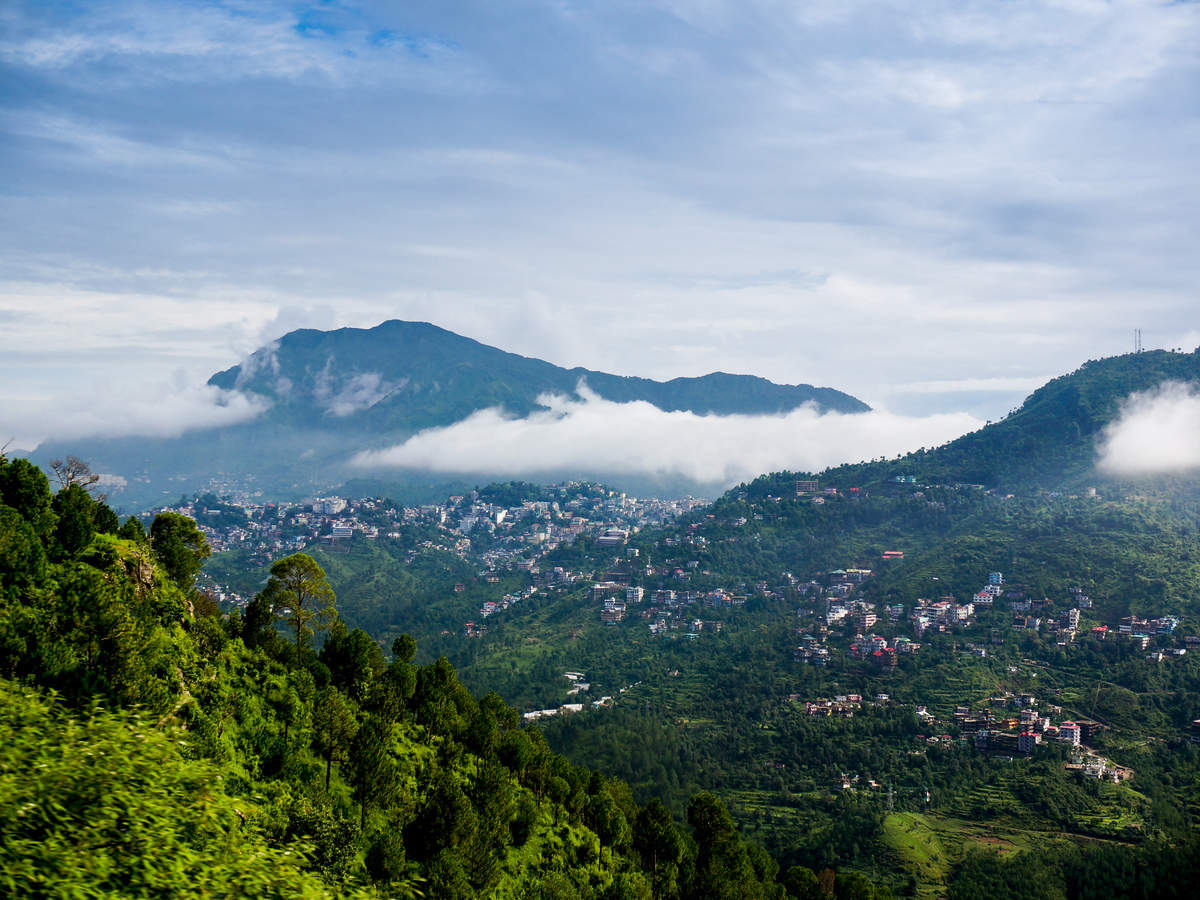
Kugti Wildlife Sanctuary is the second largest sanctuary in Himachal Pradesh spread over an area of 378 sq km. Located at a steep height of 2195 m to 5040 m, this region is home to several medicinal p...
A Complete Guide to Trekking Tours in India
India Tours
International tours, destination wedding, medical tourism, plan your trip.
- Trekking in India
Kugti Pass Trek
- Accommodation
- Sightseeing
- Trip Highlights
- Best Time to Visit
About Kugti Pass Trek
One of the most beautiful yet unexplored treks, the Kugti Pass trek in Himachal Pradesh takes you to a daunting altitude of 16,600 ft. Frequently used by the Gaddi tribes to cross over to Lahaul and Spiti valleys to graze their flocks, Kugti Pass proves to be a perfect gateway. A strenuous climb with difficult terrains and slippery paths, makes this trek one of the most challenging treks in the Central Himalayan ranges. An experience in high altitude trekking is a must before venturing on this intimidating trek.
Commencing from the bustling town of Bharmour near Chamba, the winding trails of the trek navigate through dense forests of pine and deodar, emerald green meadows, vast stretches of apple and peach orchards, gushing waterfalls and shimmering water streams. You will often come across shepherds with their flock of sheep moving through the hilly terrains. Your first major stopover on the journey would be the picturesque Kugti village from where the views of surrounding valleys and the gurgling Budhil River with a backdrop of thick pines truly makes for a picture postcard setting.
As you proceed further on the route, ever changing scenery with wooden houses, striking fields and flowing streams keep you engaged with their mesmerizing beauty. Do not miss to visit the Kartik and Mata Marala temples on your way from Kugti village to Duggi; the residing deities of these temples are considered to be highly sacred for the Gaddi people who believe them to be the savour of their flocks and cattle. As you enter the Duggi valley negotiating narrow trails, boulder strewn moraines and crossing water streams, the sight of hanging glaciers, lofty mountain peaks, cascading rivers and lush meadows take your breath away for few moments. Further, as you move towards your destination, vast meadows carpeted with colourful flowers, sparkling rivulets and vast expanses of snow fields greet you on the way finally leading to the Kugti Pass; a small shrine with numerous prayer flags, bells and trishuls await you here.
From the pass, the breath-taking views of the arid and barren mountains of the Lahaul valley, the Manimahesh Kailash peak and Grechu Pass captivate your hearts and souls. After spending some time at the pass, you start for your descent finally ending the trek at Manali.
If you are fascinated with high altitudes, nature’s work of art and nerve wrecking thrills and adventures, the Kugti Pass trek is just right for you.
Kugti Pass Trekking Tour Highlights
- Trek goes through less explored and remote area
- Large verdant meadows
- Numerous Waterfalls in the way
- Campsites by the streams and lush green meadows
- Trail will pass through snow fields, glaciers and icefalls
- Explore the mesmerizing terrain at the high altitude
- A glimpse of Himalayan wildlife at the Kugti Sanctuary.
- Opportunity to get an insight into the lifestyle and culture of Gaddi shepherds.
Best Time to Visit Kugti Pass Trek
The best time to visit Kugti Pass Trek is from mid-June to mid-October. Early part of the season is when one can witness lots of snow at the high passes. By the time August comes, the snow cover starts to decrease. As the season advances, one may be lucky to find rain in Kullu-Manali Valley and a brightly shining sun at Spiti. Days are mostly warm and sunny (12-20°C), while the nights are cold, especially at the high campsites) with temperatures ranging from -2 to 6°C. In the final phase of the season (Sept to mid-Oct), amount of snow around the trail reduces, and the weather is pleasant with some probability of snowfall. Days enjoy good sunshine with temperatures between 12 and 18°C and the nights get colder with -6 to 4°C.
Where is the Kugti Pass Trek
Kugti Pass is placed at a height of 5,050 m near the picturesque and remote village of Kugti. It comes under the Pir Panjal Range of Central Himalayas. From this pass one can reach the Duggi Plain, a grassland which is perfect for camping. The happiness of reaching the summit would be awarded with the splendid views of Manimahesh Kailash Peak, Dhauladhar ranges and also the snow-covered peaks situated outside the Lahaul Valley. One can also explore the Leah Cave situated at the foot of the Kugti Pass.
Trek begins from Bharmaur. After 13 km comes Hadsar, from where one reaches Kugti Village after an ascending and descending trail. To go to Kugti Village, one needs to go through the village, cross a side-stream and ascend along the Budhil Gorge. The Keylong Temple and the temple of Murkula Devi (goddess of Kugti Pass) will come along the route. Climb towards the alpine meadows will start from the temple. The vast and rocky Duggi Grassland is situated at the point of union of – Budhil River and Duggi stream.
Kugti Pass Trek (Detailed Itinerary)
Delhi - pathankot (by train), other benfits (on arrival).
- Stay Included
By evening catch AC train for Pathankot from New Delhi railway station. Overnight journey.
Pathankot - Dalhousie (80 Kms)
On arrival at Pathankot train station meet our guide and then travel to Dalhousie. Upon arrival at Dalhousie check into the hotel and in the evening visit the wonderful local sightseeing and attractions of the startling hill station Dalhousie.
Dalhousie - Kalatop - Khajiyar - Bharmour (110 Kms)
After having Breakfast at Dalhousie we will move ahead to explore the Kalatop wildlife sanctuary, then head towards Khajiyar. Enjoy and explore the charming natural exquisite beauty of the Mini Switzerland and have the lunch. After finishing the lunch we will further move ahead to Bharmour through Chamba. After you reach at Bharmour check into the hotel and afterwards in the evening, be a part of the Aarti at the Chaurasi temples.
Bharmour - Bharmani Mata Temple & back (6 Kms acclimatization trek)
Having breakfast early in the morning and taking along the packed lunch, the trek to Bharmani Temple begins. Bharmani temple is located at the crest and is about 3 kilometres trek from Bharmour. In the evening we will return back to Bharmour and check into the hotel for the overnight stay.
Bharmour - Hadsar- Kugti (20 Kms by road and 6 Kms Trek)
After having breakfast in the early morning the troop will move to Hadsar through Taxi then further proceed through the arduous trek involving several inclines and declines on the way to the Kugti village and in a short duration of time we will reach at small station Dhanaul that is about 6 kilometre from Hadsar. After having small rest and relaxing at Dhanaul we will resume the trekking along the left bank of the Budhil River. The trek goes up & down for another ½ hour to reach the bed of Budhil River, covering the total distance of 5 kilometres from Dhanaul. After crossing the tiny stream by a wooden bridge, we ascend persistently for another 1 hour to reach the Kugti village. Kugti is a big village and consist of 2 villages lower Kugti and upper Kugti. Enjoy the exquisite beauty of the Kugti village and spend the left day relaxing and see the sights in the village. Lunch &dinner will be provided at Kugti.
Kugti - Dughi (3340m/8.5km trek/6 hours)
After having breakfast in the early morning the troop will pass through the village, cross a tiny stream over a wooden bridge, then mount for about ½ hour beside the banks of the Budhil stream. Going on an up and down pathway we will reach at a water point. Afterwards a straight short walk the trail ascends steeply for about ½ hour to reach the Kartik temple. This temple is devoted to the son of Lord Shiva ‘Kartik’. The Lord Kartik is believed to be the saviour of cattle from disease and other jeopardy and was brought from the neighbouring Lahaul Valley. The Gaddi Shepherds offer the sheep to Lord Kartik to protect their flocks. After visiting the temple of Goddess Marali and the Kartik temple we will rest here for about 1 hour and then the troop will move forward towards the next destination Dughi. From the temple the trail hikes gradually for ½ hour through the alpine aromatic meadows; descend to the stream, fords it and reach at Dughi camping site. After, having lunch at the Dughi camping site and spend the left day enjoying and relaxing in the midst of natures beauty and after having dinner rest in the tents.
Dughi – Alyas Base Camp (4250 mts/9 km trek/5 hrs)
The base ground of the passes or the camp sites on the either sides of passes are called Alyas and locally called as ‘Lahesh’. After having the breakfast we will move forward from Dughi to Alyas, 6 kilometres demanding, but a very adventurous and enjoyable stage of the trek. The main pathway continues with the stream, first steps forward to the Eastern side gradual hiking then to the North Eastern side, climbing steeply to reach the verdant plateau of Kuddy. As height increases the trees and bush line is left behind. So we will take the dry firewood of the bushes ahead 2 kilometres from Lahesh for the night since the night temperature goes down below zero degrees Celsius at Alyas. Here it turns toward North-East and follows the Kugti pass Alyas, with a gradually steep climb to the Alyas camp site. From this point the V-shaped pass between two high crests can be seen. It will take about 5 to 6 hour run to reach the Alyas camp site, lunch will be offered and you can enjoy the entire day and revitalize the body for the next day’s tough voyage.
Alyas Base – Kugti Pass (5090 mts) - Alyas Base (12 kms Steep climb)
Alyas – Kugti Pass – Alyas is a 12 kilometres track that is totally depended upon the climatic conditions and physical condition of trekkers. Generally the touring guide will not take the danger or permit to cross the passes in bad climatic conditions and will wait for the till the sky clears up. If sunshine, then after having hot tea and light breakfast the we will move forward very in the early morning around 4:00 AM to make sure that the snow is absolutely frozen for a much easier hike and need to cross the pass before 12:00 PM otherwise will create major problems as rainfall, heavy snow, winds, and even snow fall can take place anytime. After a segment over the moraine, a usually noticeable trek in the snow, winds uphill, well trodden and with the way. Generally go after the hoof prints of the flocks as they perpetually select the safest route to pass through the crevasses patches. Just almost 1 kilometre before we reach the pass the pathway turns out to be very steep, over the loose rocks and snow. On reaching at the top of the Kugti Pass view the stunning surrounding mountain, peaks of the great and spectacular Himalayan Range and striking view of the Manimahesh Kailash, also see the wonderful view of the both side Alyases and Grechu pass to the North-West side. On the top of the pass there is a simple shrine temple of the Goddess Marali Devi, the goddess of the Kugti Pass, is symbolised by the some bells, iron trinkets, and colourful cloth pieces. After we reach the top, we will rest for some time and again move ahead towards downstream and aim to reach at Alyas as quickly as possible. From the top of the pass, it is a run for about 2 hours to reach at Alyas of Lauhal. On the other side begin with a steep part of the trail that is too perilous and required very alert mind. Lack of attention and negligence may create immense problem. The track is not really wide enough to place one foot in front of the other. The Alyas (Khodlu) camp site is located 6 kilometres away from the Kugti pass. Dry fruits, refreshments, etc. will be served as a small lunch, later you will be served with some energetic fast food for the dinner.
Alyas Base Camp – Udaipur / Keylong (8 kms trek and 45 kms by car)
Alyas to Jobrung 8 kilometres, the trail heads crosses a ridge, than goes downwards to the Rashil stream. Following the right bank the pathway descends to a striking village called Jovrung, the first home on the Lauhal side, overlooking the Chandra Bhaga River. Later the trail crosses the river, stream by a valley bridge and then reaches Shamsha situated on the Kilad – Manali highway. By vehicle trail arrives at Udaipur, here we will stay for a night in a Hotel/Guest House.
Udaipur/Kelong – Manali
After visiting the main temple of Mirkla Mata situated in Udaipur the troop will go to Keylong, Distt. Headquarter of Lauhal. After Kelong we will further move to Manali through Rohtang pass. The troop will stay here for around 1 hour on the top of the Rohtang pass. Upon reaching Manali, here our outdoor team will leave the troop with warm wishes and hopes for further more trips in the future to explore the great Himalaya.
Manali to Delhi (570 kms/14 hrs)
Half day sightseeing at Manali, visit old Manali, Hadimba temple, Shiva temple and monastery in town are main attraction s, by evening drive to Delhi by AC Volvo coach. Overnight journey.
Arrival at Delhi by morning.
Fill Enquiry Form Below
Why tmi for trekking holidays, experienced.
An experienced trekking tour operator, with a team of an experienced adventure enthusiast ensure to give our clients well-designed trekking tour packages.
We are certified by major tour and travel associations in India and world like IATA, IATO, TAAI, IMF & MOT (Ministry of Tourism, Govt of India).
Happy Customers
TMI has received numerous accolades from its happy customers for its excellent services and best adventure holidays.
Local Offices
We have local office in Ladakh, Uttarakhand, Sikkim, Jammu & Kashmir, & Himachal Pradesh for our customers to find assistance anytime and anywhere.
Related Tour Packages
11 Nights - 12 Days
Bara Bhangal Trek
5 Nights - 6 Days
Beas Kund Trek
10 Nights - 11 Days
Bhaba Pass Trek
7 Nights - 8 Days
Bhrigu Lake Trek
9 Nights - 10 Days
Chandratal Baralacha Trek
12 Nights - 13 Days
Chandratal Trek
Charang valley trek, dalhousie manali trek via murhu pass, dalhousie-kishtwar via sach pass, deo tibba trek, dharamshala nayagaon trek.
6 Nights - 7 Days
Dharamshala to Chamba Trek
Friendship peak trek.
8 Nights - 9 Days
Hampta Pass Trek
Indrahar pass trek, jagatsukh to base of deo tibba trek, jalori pass trek.
16 Nights - 17 Days
Kalihani Pass Trek
Kareri lake trek, kinner kailash parikrama trek, manimahesh kailash trek.
15 Nights - 16 Days
Pin Parvati Pass Trek
Sach pass trek, shepherd trail gaddi trek.
13 Nights - 14 Days
Thamsar Pass Trek
More about trekking in himachal, our latest informative travel blogs, explore the hidden natural treasure of himalayas with these unexplored treks in uttarakhand, india trekking guide: best informative blogs on india himalayas trekking tour, where to visit in uttarakhand and himachal for adventure, chilling, and finding peace for a post-lockdown holiday, india trekking information at a glance, trekking destinations.
- Uttarakhand
Special Interests Treks
- Wildlife Treks
- Spiritual Treks
- Weekend Treks
- Cultural Treks
- Family Treks
Best Time for Trekking in India
- Best Time to Do Ladakh Trek
- Best Time to Do Uttarakhand Trek
- Best Time to Do Sikkim Trek
- Best Time to Do Himachal Trek
- Best Time to Do Kashmir Trek
- Best Time to Do Garhwal Trek
Fixed Departure Tours
- Fixed Departure for Ladakh
- Fixed Departure for Uttarakhand
- Fixed Departure for Sikkim
- Fixed Departure for Himachal
- Fixed Departure for Kashmir

Seasonal Treks
- Spring Season Treks
- Summer Season Treks
- Monsoon Season Treks
- Autumn Season Treks
- Winter Season Treks
Essential Links
- Things to Carry
- Terms & Condition
- Trekking Equipment
- Trekking Permit
How It Works
- Tell us details of your holiday plan.
- After you submit the form, one of our travel experts will get back to you with customised holiday package based on your requirement, within 24 hours.
- Grab the deal and start packing your bags for an indelible holiday with Tour My India.
Call Us for details
+91-9212553106
Request a quote.

Kugti Pass Trek
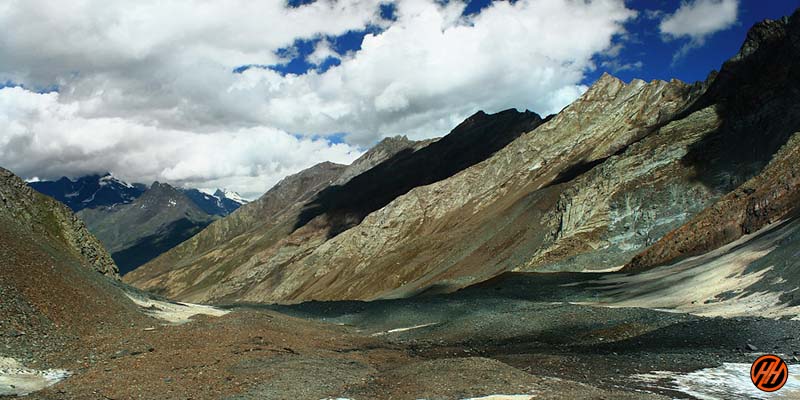
Description
Reviews (0), things to take, available dates, include / exclude, kugti pass trek: a perfect gateway.
Kugti Pass trek is an unexplored part of Himachal Pradesh which takes you to the towering altitude of 5090 m.
The Gaddi tribes use this route to cross over to Lahaul and Spiti valleys for grazing of their flocks. The thrilling climb with difficult terrain makes Kugti Pass trek a daunting one in the Himalayas.
The Pass Under the Pir Panjal Ranges
Kugti Pass comes under the Pir Panjal Ranges of Himalayas. The climb is thrilling but the summit is equally rewarding, it rewards you with the best views of Dhauladhar ranges, Manimahesh Kailash peak and Snow Cladded Mountains lying outside the Lahaul valley.
At Kugti Pass top is the shrine of Marali Devi, there are iron trinkets, bells and some coloured cloth pieces.
Explore the Region of Kugti Pass Trek :
Kugti pass trek starts from Bharmaur (near Chamba) which ahead leads to Hadsar. The inclining and declining trail will then take you the quaint Kugti village which is divided in two parts Lower Kugti and Upper Kugti.
Cross Budhil gorge and explore the Keyplong temple and temple at the top of Kugti Pass.
Key Points of Kugti Pass Trek
Level: Difficult
Proper conditioning & training of body required
Need proper gear & clothing for sub-zero temperature
Shoes are the single most important equipment.
High Altitude requires proper acclimatization.
Beautiful landscapes so carry good photo gear & Extra battery backup.
Travel light
The backpack should not exceed 10kgs.
Must Read about Kugti Pass Trek
Duration: 9 days (Pathankot to Manali)
Best Time: June and September
Level: Difficult
Highest Point: 5090 m
Weather: Nights are cold and day temperature is pleasant during the season.
Temperature: (12°C to 20°C) (-2°C to 6°C)
Starting Point: Pathankot
Itinerary of Kugti Pass Trek :
Day 1 – Pathankot to Dalhousie (80 km)
Day 2 – Dalhousie – Kalatop – Khajiyar – Bharmour (110 km)
Day 3 – Bharmour to Bharmani Mata temple and back (6 km)
Day 4 – Bharmour – Hadsar – Kugti (Drive – 20 km) (Trek – 6 km)
Day 5 – Kugti to Dughi (8.5 km)
Day 6 – Dughi to Alyas Base camp (9 km)
Day 7 – Alyas Base camp to Kugti Pass (5090 m) – Alyas (12 km)
Day 8 – Alyas Base camp to Jobrung and drive to Udaipur (Trek – 8 km) (Drive – 45 km)
Day 9 – Udaipur to Manali
Day 1 : Pathankot to Dalhousie (80 km)
The transport will be arranged from Pathankot and the drive will be to Dahousie, a beautiful hill station in Chamba region.
Day 2 : Dalhousie – Kalatop – Khajiyar – Bharmour (110 km)
Post breakfast head to Kalatop Wildlife Sanctuary, explore the area and move further to Khajiyar.
Have lunch en route then start trekking to Bharmour via Chamba.
Reach there and check into the hotel.
Day 3 : Bharmour to Bharmani Mata temple and back (6 km)
Have breakfast early and move to Bharmani Mata temple with packed lunch. The temple is present at the crest and lies 3 kms away from Bharmour.
After Darshan and spending time there, return to Bharmour and enjoy your overnight stay there.
Day 4 : Bharmour – Hadsar – Kugti village (Drive – 20 km) (Trek – 6 km)
After breakfast at Bharmour leave for Hadsar through a taxi. The trek starts from there which involves steep ascents and descents to the Kugti village.
Reach small station Dhanaul which is 6 km from Hadsar. Halt for a while and trek along Budhil River’s left bank. After some inclines and declines reach the bed of this river. Cross the stream over a small bridge and ascend for 1 hour to reach this pristine village.
Kugti village has two parts – Lower and Upper Kugti. Enjoy its unique beauty and settle for the day.
Day 5 : Kugti to Dughi (8.5 km)
Pass through Kugti village, cross a tiny stream over a bridge. Ahead lies a Kartik temple devod to Lord Shiva’s son Kartik. He is believed to be the cattle saviour.
Here, the sheep are offered to Lord Kartik by Gaddi shepherds. Visit the temple of Goddess Marali also then move towards Dughi, destination of the day.
Now, the trail goes through wide alpine meadows. A short descend to the stream will lead you to Dughi campsite.
Day 6: Dughi to Alyas Base camp (9 km)
Alyas are locally called Lahesh, they are the base ground of passes or the campsites present on both sides of the passes. Post breakfast move from Dughi to Alyas.
The trek is going to be the most adventurous and enjoyable. The path goes with the stream, cross the steep climb and reach the plateau of Kuddy.
The treeline recedes and the path from here turns and follows Kugti Pass Alyas. A gradual steep climb will take you to Alyas campsite, witness a high V shaped pass amid two crests.
Have food there and settle for the day.
Day 7: Alyas Base camp to Kugti Pass (5090 m) – Alyas (12 km)
Start the trek early morning because walking on frozen snow is easier then walking on fresh snow. We have to reach the pass early because weather conditions can change anytime.
Go uphill through the moraine section, the way is well trodden. Walk carefully and safely through the crevasses patches. After 1 km the terrain turns steep over snow and loose rocks.
After a tough hike, reach the Kugti top it offers amusing views of the Himalayan peaks and spectacular sight of Manimahesh Kailash. Alyases and Grechu pass, both side views are feast for the eyes. At Kugti Pass top is shrine of Marali Devi, there are iron trinkets, bells and some coloured cloth pieces.
Rest there for sometime, then descend to Alayas of Lahaul. The trail is narrow and steep so be very careful and cautious while descending. Reach the campsite, have food and retire for the night.
Day 8: Alyas Base camp to Jobrung and drive to Udaipur (Trek – 8 km) (Drive – 45 km)
The trek from Alyas to Jobrung is 8 km long, cross a ridge and then descend to the Rashil stream. Follow the right bank and get down to Jobrung, first civilization on Lahaul side overlooking the Chandra Bhaga River.
Later cross a stream over a bridge to reach Shamsha located on the Kilad – Manali highway. From here go to Udaipur in the booked vehicle. The arrangements will be made in a hotel there.
Day 9 : Udaipur to Manali
Visit the Mirkla Mata temple in Udaipur go to Keylong, Dist. Headquarter of Lahaul. From here move to Manali via Rohtang Pass.
Mandatory Documents
Please carry the documents given below.
Original and photocopy of government photo identity card- (Aadhar Card, Driving License, Voters ID, etc, Passport and Visa important to foreigners Medical Certificate (First part should be filled by the Doctor and Second part by the Trekker) Declaration Certificates
Note: – Many trekkers commit the same mistake of carrying unnecessary items on a trek which only makes the backpack heavy. It is important to know the right items to carry. It differs from season to season if you are trekking in summers then carry less layers of warm clothing and if you are trekking in winters carry enough layers to protect yourself against chilly cold.
Necessary Items for trekkers

Backpack (50 to 60 liters) A strongly built backpack with good support is compulsory for a trek. (Rain cover is important)
Sturdy Trekking Shoes The shoes should be strong enough with good support. The people ask if sports shoes would be comfortable but it is good to bring the right trekking shoes.
The Clothes You Should Bring On a Trek Avoid keeping extra clothes because it only makes you backpack heavy.
Trek Pants – The jeans are never suitable for a trek so you need at least 2-3 trek pants for treks carry more for longer treks.
Jacket – Jackets are very important to carry on a trek it protects you against the chilly weather. So carry 2 jackets on a week long trek.
Layers of warm Clothing Carry warm woolen layers or fleece. Carry more layers during winter season (at least 2 to 3) and less during summer.
Thermals – The Temperature decreases at night so you might be need thermals for Night.
T- Shirts – Bring those t shirts which dry fast.
Poncho –They are needed if you are trekking on a Rainy day to keep you dry.
Hiking Pole
Water Bottle 2
Cap or Balaclava
Woolen and Waterproof Gloves
Socks (Woolen and Regular)
Torch head light
Personal Toiletry Items – (toothpaste, toothbrush, toilet paper, sanitizer etc.)
Carry Personal Medical Kit
Personal Medical Kit (Carry minimum 5 tablets and maximum 10)

Diamox – (Prevents altitude sickness)
Digene – (It cures discomfort in stomach, acidity)
Crocin Advance – (Cures fever and headache)
Aspirin/Combiflam – (Pain reliever)
Disprin – (Cures headache)
Avomine – (Prevents motion sickness)
Avil – (It treat allergies)
Norflox TZ & Lomofen – (Prevents Diarrhoea)
Ranitidine – (Reduces the amount of acid in stomach)
Volini/Moov spray – (For sprains)
Betadine/Savlon – (Antiseptic cream)
Stretchable/Elastic bandage
Note:- Use medicines only when prescribed by the doctor. In case you face any problem during your trek, discuss and take advice from the Professional guide.
Sorry! Here are no Available dates right now. For Any Queries you can Email us with [email protected] and Call Us +91 9756197558
What is Included In This Trek?
Forest Permit and entrance fee
Accommodation in tents on twin share basis
All meals: breakfast, packed lunch, tea, coffee, snacks, soup and dinner
(All camping gears)
High quality tents
Sleeping bags
Separate Toilet tents – Ladies and Gents
Dining Tent
Dining Table
Kitchen team
Radio Walkie Talkie for Communication
Good Experience Trek Leader guide and Technical guide
Medical Kit
Oxygen Cylinders
Crampons and Gaiters
What is Not Include In This Trek?
Transport Facility
Personal Insurance
Medical Certificate
Personal toiletry Items and Personal Medicine kit
On first day En Route to base camp the Breakfast and Lunch are Not Included
Last Day En Route Lunch and Dinner are Not Included
There are no reviews yet.
Your email address will not be published. Required fields are marked *
Name *
Email *
Save my name, email, and website in this browser for the next time I comment.
Related Tours
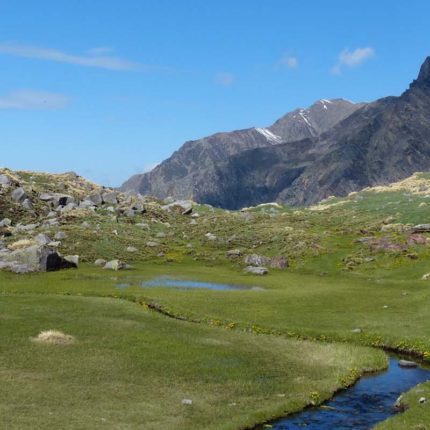
Obra Gad Trek
Obra Gad is amidst two idyllic valleys; Rupin and Supin
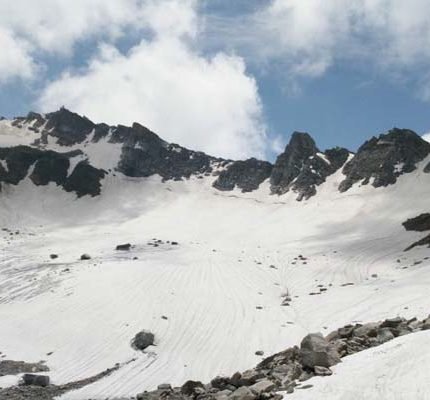
GWARU PASS TREK
It is hiding in Kullu valley has virgin trails and a wide terrain variety.
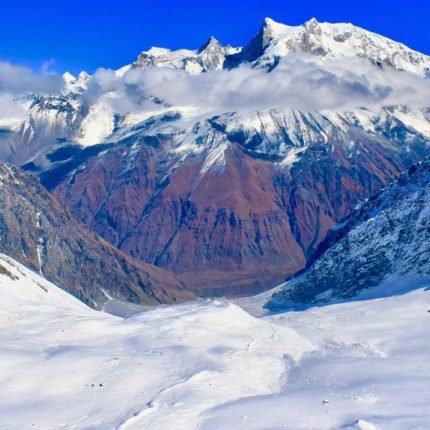
Bali Pass Trek
Bali pass Connecting Ruinsara valley to Yamunotri valley.
Book Your Trek
- Overview Itinerary Dates Include/Exclude
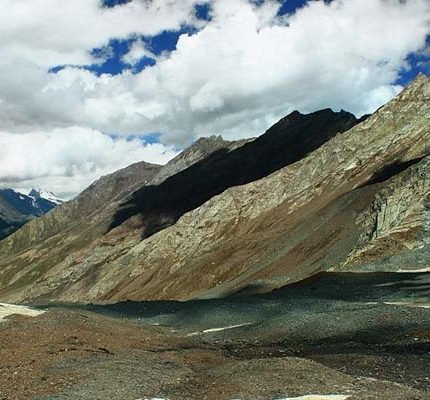

- Kugti Wildlife Sanctuary
- Himachal Pradesh
Kugti Wildlife Sanctuary is the second largest sanctuary in the state of Himachal Pradesh, situated at an altitude ranging from 2195 metres to 5040 metres. It covers an area of around 378 kilometres square. The sanctuary houses Manimahesh Temple which is very famous and is annually visited by thousands of pilgrims. It has a plenty of water resources which are mostly originated from the glaciers. The sanctuary is not only blessed with a beautiful landscape, but also with an abundance of flora and fauna. The flora of the sanctuary has a number of medicinal plants along with some of the rare floral species. The ideal time to visit is from the month of April to June and from October to November.
Dominant Flora
The vegetation of the sanctuary consists of moist deodar forest and western mixed coniferous forest. Herbs include Gentiana Kuroo and Jurinea Macrocephala. A number of medicinal plants are also found here.
Dominant Fauna
Mammals: Snow leopard, ibex, brown langur, common cat, leopard, deer, musk marten, Himalayan yellow throated fox, Indian/red Serow, ghoral, Himalayan, thar, Khalij Pheasant.
Birds: Monal, snow cock, jungle babbler, red-billed babbler, great hill barbet, black bul-bul, redvented bul-bul, white cheeked bul-bul, crested bunting, greyhead bunting.
Reptiles: Various reptile species are spotted here.
Best time to visit
The ideal time to explore the sanctuary is from the month of April to June and from October to November.
How to Reach
Nearest Train Station: The nearest railhead is Pathankot which is connected to all the major cities of India. Buses and taxis are available from Chamba and Bharmour till Hadsar.
Nearest Airport: The nearest airport is Jammu Airport, located about 290 km away from the sanctuary.
Road Accessibility : The sanctuary is accessible via Pathankot, Chamba, Bharmour, and Hadsar. From Pathankot, visitors can travel to Chamba (122 km), From Chamba to Bharmour (65 km), then to Hadsar (13 km). From Hadsar, a 13 km trek can be done to reach the sanctuary.
Other Attractions
- Chaurasi Temple Complex
- Bharmani Mata mandir
- Thala Waterfalls
- Hadsar Waterfalls
Copyright 2012-2022 Indiamap Digital Pvt Ltd. All rights reserved. Privacy Policy | Terms of Use

- Treks in Himachal Pradesh
- Treks in Uttarakhand
- Treks in Sikkim
- Treks In Jammu & Kashmir
- Uttarakhand
- Himachal Pradesh

Kugti Pass Trek Guide 2024: History, Highlights, Best Time, How to Reach, and Itinerary
Table of Contents
Only a few hikers have discovered the Kugti Pass trek and it’s no surprise why it is so. It is practically unexplored – and maybe this is its charm- one of India’s unexplored treks. If you admire trekking, the Kugti Pass is a trek that should be a preference in your treks for tomorrow.
The Kugti Pass Trek is unique and secluded – On the lower trails, the trek covers properties of apple orchards, pine forests, and miles of lush green grasslands. Waterfalls are everywhere. On the higher inclinations, the trail goes through snowfields, glaciers, and ice waterfalls. The excitement of the high altitude is intoxicating.
One of the most fascinating yet unexplored treks, the Kugti Pass Trek in Himachal Pradesh takes you to an impressive elevation of 16,600 feet. Frequently used by the Gaddi tribes to pass the Lahaul and Spiti valleys to feed their herds, the Kugti Pass confirms to be an ideal gateway. An arduous climb with steep ground and tricky trails make this trek one of the most difficult treks in the Central Himalayan ranges. High altitude trekking experience is a must before attempting this trek.
Starting from the town of Bharmour near Chamba, Your initial main stop on the trip would be the pictorial village of Kugti from where the views of the surrounding plains and the Budhil river shaded with dense pine trees really makes it look like a picture from postcard.
History of Kugti Pass Trek
Do not forget to tour the temples of Kartik and Mata Marala on the way from the village of Kugti to Duggi; the deities residing in these temples are deemed deeply holy to the Gaddi who consider them as the savior of their flocks and herds. You will come across the Keylong temple and the Murkula Devi temple (considered the goddess of the Kugti pass). In this path, the tracker can see the beauty of the Pir Panjal range.
The local people called Gaddi (shepherd) live their difficult life with their flocks and are devoted and committed to their gods and goddesses like Lord Shiva, Lord Kartik, and the goddess Marali Mata. The Gaddis first acquire approval to pass the Kugti Pass from Lord Kartik and the goddess Marali Devi. They scarify their few sheep to Lord Shiva, Lord Kartik, and Goddess Marali Devi at Kartik temple to get the approval.
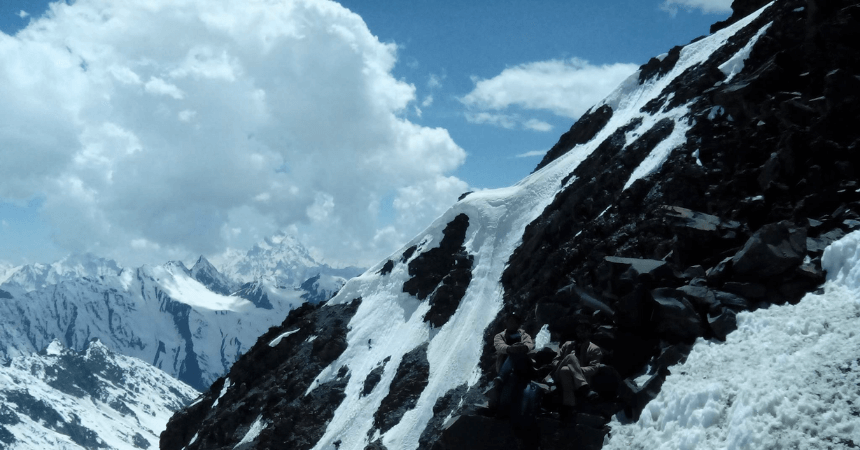
Highlights of Kugti Pass Trek
- You would have the chance to see stunning waterfalls during your trip.
- Huge lush green meadows are ready to welcome you.
- Discover the charming landscape at high altitude.
- You may have the opportunity to get a feel for the life and culture of the Gaddi shepherds.
- The trek passes through lesser-known and secluded areas.
Location of Kugti Pass Trek
The Kugti Pass is located approximately 5050m near the picturesque and remote village of Kugti which lies under the Pir Panjal Range of the central Himalayas. The bliss of climbing the summit would be rewarded with the awe-inspiring views of Manimahesh Kailash peak, the Dhauladhar mountain ranges, and even the snow-capped mountains outside of the Lahaul Valley. You can also visit Leah’s Cave located at the foot of Kugti Pass.
Best Time to Visit Kugti Pass Trek
The best time to visit the Kugti Pass Trek is from mid-June to mid-October. The days benefit from a beautiful sun with a temperature between 12 and 18°C and the nights become colder with -6 to 4°C.
How to Reach Kugti Pass Trek
The most proximate airport is Gaggal Airport. Flights from one hour and fifteen minutes to half an hour from Delhi are available. From there you can hire a taxi.
The most proximate station is Pathankot. Most trains to Jammu Tawi stops at this station, from where taxis and buses can be used to reach Chamba.
Take the bus from Delhi to Chamba. Himachal Pradesh Tourism Development Corporation runs buses to Chamba from Delhi via Chandigarh. Several private operators also run buses on this route.
Itinerary of Kugti Pass Trek
Day 1: delhi to pathankot (by train) .
Take the train to Pathankot from New Delhi station. Night travel.
Day 2: Pathankot to Dalhousie (80 Km)
Upon entry at Pathankot Station, move to Dalhousie. In the evening, tour the incredible regional attractions and sights of the astonishing Dalhousie hill station.
Day 3: Dalhousie to Kalatop to Khajiyar to Bharmour (110 Km)
Continue to traverse Kalatop Wildlife Reserve, then drive to Khajiyar. Enjoy and traverse the fascinating and elegant natural beauty of Mini -Switzerland. Move further towards Bharmour via Chamba.
Day 4: Bharmour to Bharmani Mata Temple and back (6 km of acclimatization walk)
Early in the morning, begin the trek to Bharmani Temple. The Bharmani temple is situated on the ridge and is about 3 kilometers from the Bharmour trek.
Day 5: Bharmour to Hadsar to Kugti (20 km drive and 6 km trekking)
Early in the morning, travel to Hadsar by taxi, then continue the difficult trek which involves numerous ascents and descents on the river. Drive to Kugti village. Reach the small station of Dhanaul which is about 6 kilometers from Hadsar. After resting and relaxing in Dhanaul, continue trekking along the left bank of the Budhil river.
The hike to reach the Budhil river bed is at a total distance of 5 kilometers from Dhanaul. After passing the small stream with a clumsy wooden bridge, climb to reach the village of Kugti. Experience the elegant beauty of Kugti village and kill the remaining day resting and taking in the views of the village.
Day 6: Kugti to Dughi (3340m/8.5km trekking/6 hours)
Early in the morning, cross the village, pass a small stream on a wooden bridge, then climb along the banks of the Budhil stream. After a short walk straight ahead, the path ascends to reach the temple of Kartik. This temple is dedicated to the son of Lord Shiva ‘Kartik’.
Lord Kartik is deemed to be the guardian of cattle from disease and other dangers and was drawn from the nearby valley of Lahaul. Gaddi shepherds give sheep to Lord Kartik to guard their flocks.
After touring the temple of the goddess Marali and the temple of Kartik, here from the temple, the path slowly ascends into fragrant alpine meadows. Rest of the day, enjoy and recline amidst the charm of nature.
Day 7: Dughi to Alyas base camp (4250m/9km walk/5hours)
The base of the passes on both sides of the passes is called Alyas and regionally “Lahesh”. Move from Dughi to Alyas, difficult 6 kilometers, but a very courageous and entertaining part of the trek. It is a steep climb to reach the green plateau of Kuddy.
As the height increases, the line of trees and bushes is left behind. Enjoy the whole day and give rest to your body for the next difficult day.
Day 8: Alyas Pass to Kugti Pass (5090 mt) to Alyas Base (12 km steep climb)
Alyas – Kugti Pass – Alyas is a 12 km trail that is dependent on the climatic and physical conditions of the hikers. Follow the footsteps of the herds, which is the most reliable route to traverse through the patches of crevices.
The path is very steep, over loose rocks and snow. At the top of Kugti Pass, admire the neighboring mountain, the peaks of the great and magnificent Himalayan range, and the striking view of Manimahesh Kailash, also admire the magnificent view from both sides of the Alyases and Grechu passes to the northwest side.
At the top of the pass is a simple temple shrine of the goddess Marali Devi, the goddess of the Kugti pass, symbolized by chimes, iron pendants, and parts of colorful fabric. After reaching the top rest for sometime and head downstream to reach Alyas.
Day 9: Alyas Base Camp to Udaipur/Keylong
Alyas to Jovrung is 8km. The trail starts at a ridge, which descends to the Rashil stream. Following the right bank, the path declines to a charming village called Jovrung. The trail then crosses the river.
Day 10: Udaipur/Kelong to Manali
After touring the main temple Mirkla Mata located in Udaipur, travel to Keylong. Continue to Manali through Rohtang pass. Arrive in Manali.
Day 11: Manali to Delhi (570 km/14 hours)
Half-day tour of Manali, visit old Manali, Hadimba temple, Shiva temple and City monastery are the main attractions.
Dhumdhar Kandi Trek
Day 12: Arrival at Delhi
Reach Delhi in the morning.
Frequently Asked Questions (FAQ’s) for Kugti Pass Trek
Where do the kugti pass trek start and end.
The hike begins in Chamba district in Himachal Pradesh and finishes in Lahaul district.
How high is Kugti Pass?
The Kugti Pass rises to 16,600 feet.
How long does the Kugti Pass Trek last?
The whole trek is 12 days long with approximately 60 km of trekking.
When is the best time to go for the Kugti Pass Trek?
The best time to visit the Kugti Pass Trek is from Mid-June to Mid-October.
How difficult is the Kugti Pass trek?
The Kugti Pass trek can be considered as one of the most incredible yet challenging, intimidating, and unexplored treks in the Himalayan range .
Is the kugti Pass snowy?
The first part of the season is when you can see a lot of snow on the high passes. With the arrival of August, the snowpack begins to decrease. In the final phase of the season (September to mid-October) the amount of snow around the trail is reduced and the weather is pleasant with some risk of snowfall.
- Share This Post:
Related Articles
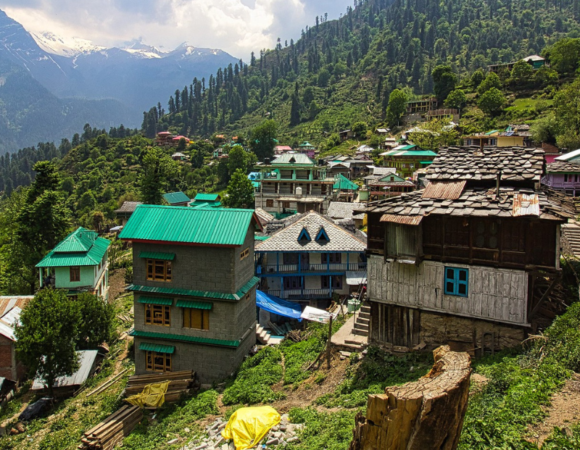
10 Best Hill Station In Himachal Pradesh, Highlights, FAQ’s
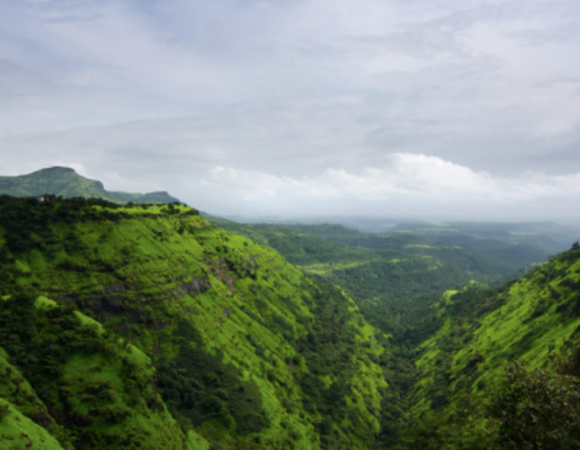
10 Best Hill Stations In Maharashtra, Highlights & FAQ’s
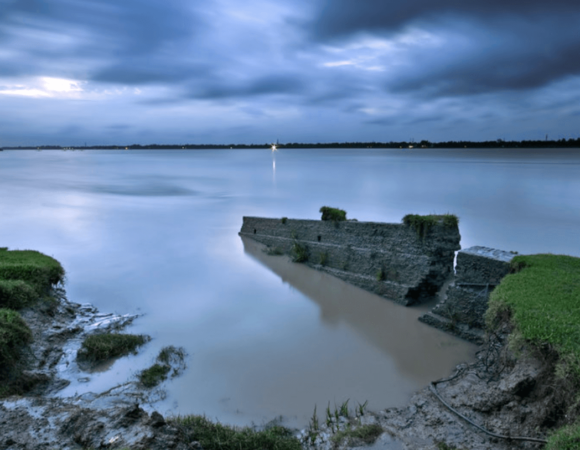
10 Best Hill Stations In West Bengal – Best Time, How to Reach Highlights & FAQs
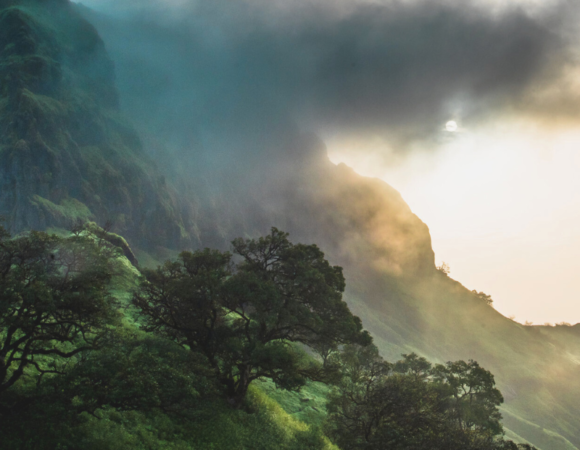
10 Best Maharashtra Trekking Places, Highlights, Treks & FAQ’s
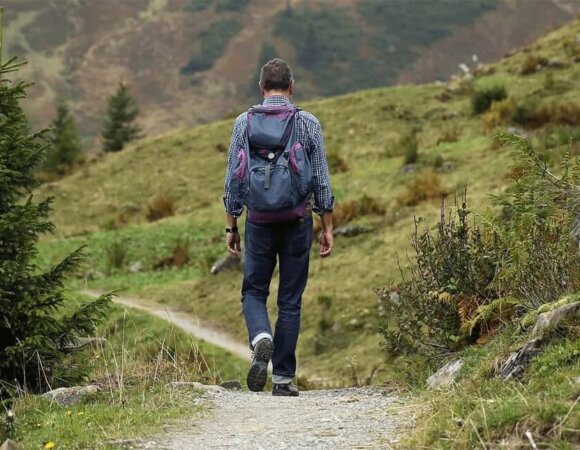
10 Best Trekking Places Near Delhi In 2024 & FAQ’s

10 Best Treks in Himachal That You Can Do in Winters
4 thoughts on “kugti pass trek guide 2024: history, highlights, best time, how to reach, and itinerary”.
[…] Kugti Pass Trek […]
Need info for Himalayan treks in November.
Please contact for details: 9815181405
Add a Comment Cancel reply
Save my name, email, and website in this browser for the next time I comment.
Things To Carry On Your Trek
Book your experience with us.
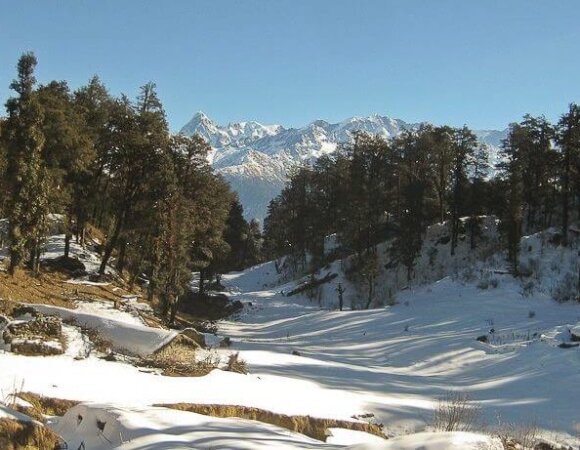
- Amenities 5
Dayara Bugyal Trek
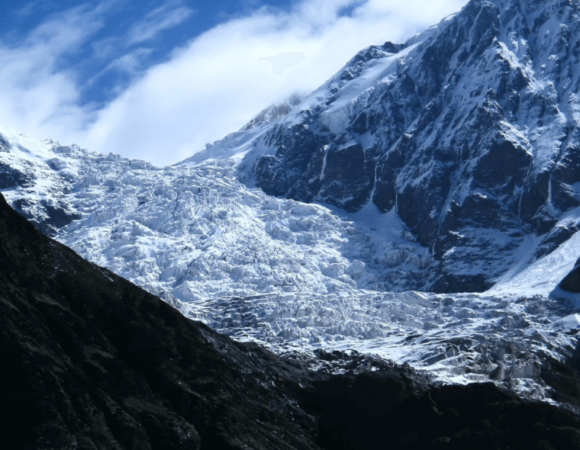
Pindari Glacier Trek
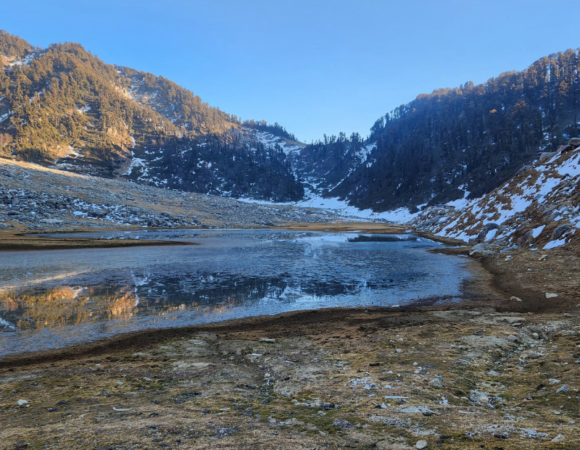
Kareri Lake Trek
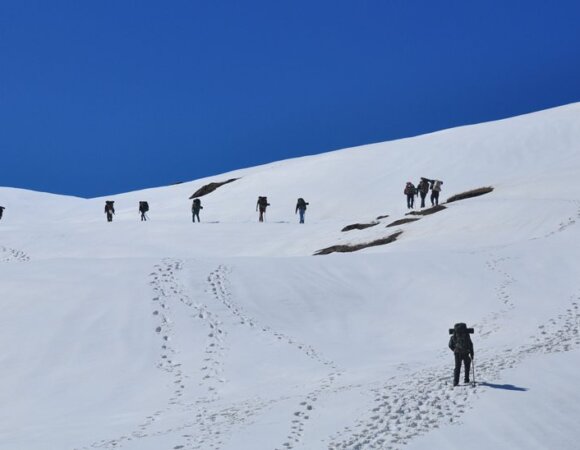
Panwali Kantha Trek
Book your unforgettable experience with us, reset password.
WhatsApp Us
- More Networks

The OK Travel
Travel, Be Happy!
Wildlife Sanctuaries of Himachal – Kugti Sanctuary, Chamba
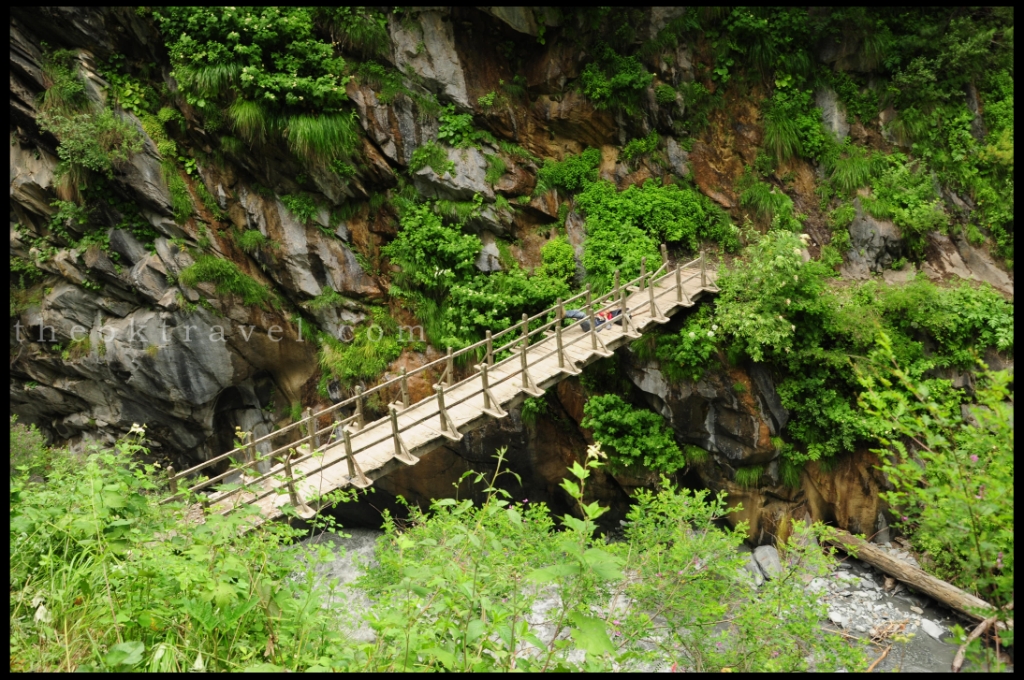
Spread over an area of 378 sq. km, price at an altitude of about 5000m above sea level, viagra 40mg the Kugti Wildlife Sanctuary with rare species of flora and fauna is the second largest wildlife sanctuary of Himachal Pradesh. It is located in Bharmour area of Chamba district and is a special destination for visitors as it remains snow covered for most part of the year.
Connected with the Tundah sanctuary from the west, the Kugti Wildlife Sanctuary has the famous Manimahesh Temple located within its periphery. The temple is a popular pilgrimage destination in Himachal Pradesh. Every year thousands of people embark on the arduous journey of reaching the temple by climbing up through the rough terrains, green meadows, gushing water streams, dense forests and glaciers.
The Kugti wildlife sanctuary is home for many varieties of medicinal plants and water springs. Water springs are formed out of melting glaciers all around the place, which are also a pleasant sight for visitors besides the animals and plant varieties in the area. The medicinal herbs spotted by researchers and local experts in the area include Aconitum Heterophyllum (Potish), Pedophyllum Hexandrum (Bankakudi), Angelica Glauca (Chaora) etc.

The Kugti Wildlife Sanctuary is the habitat of many endangered species such as Ibex, Pheasants, Himalayan Tahr, Musk deer, Monal snow Cock, Red vented Bulbul, White Cheeked Bul Bul etc.
Tourists visiting the Kugti sanctuary can also find trekking routes leading into dense woods with Coniferous and Deodar trees. Many people trek through the sanctuary to reach Lahaul-Spiti district of Himachal Pradesh.
The Kugti Pass links the Chamba region to the Lahaul Valley and is one of the three mountain passes that connect the Chamba region to the Lahaul Valley. The Kugti Pass stands at a height of approximately 5100 meters.
Situated at a very high altitude, the Kugti Wildlife sanctuary as informed earlier, is snow covered for most part of the year, therefore the best time to visit this wildlife sanctuary is from May to June and September to October, though tourists are found here throughout the year.
The wildlife sanctuary can be easily reached from Pathankot and Chamba by road. However, the nearest railway station is at Pathankot in Punjab.
Leave a Reply Cancel reply
Your email address will not be published. Required fields are marked *
Save my name, email, and website in this browser for the next time I comment.

The Hidden Miracle Of Himachal Pradesh: Bharmour in 2024
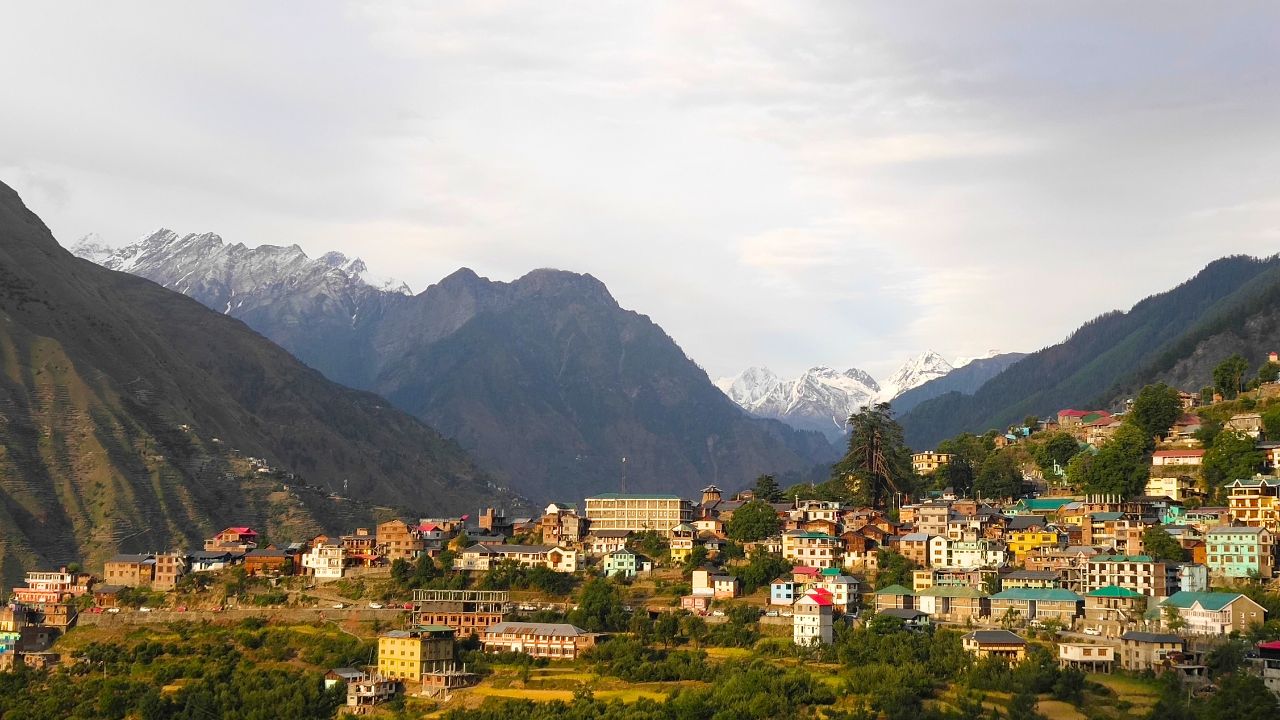
- 21 September 2022
Bharmour, a stunning town encircled by the tall Pir Panjal mountain range, is situated 61 kilometres from Chamba and 102 kilometres from Dalhousie, another well-known tourist destination of paramount significance in Himachal Pradesh. Because it is believed that Lord Shiva lives on the nearby peak of Kailash, Bharmour is frequently referred to as the land of Shiva. Bharmour, also known as Brahmpur in the sixth century, served as the capital of the Chamba state for about 400 years, until Raja Sahil Varman established a new capital at Chamba in AD 920.
Area: Bharmour, Chamba Himachal Pradesh
Altitude: 7000 feet
Climate: In winter, the temperature gets quite low and in summer temperature is mild
Rainfall: 1264.4mm
Primary rainy season: June to September
Temperatures: Summer: 15 °C – 20 °C ; Winter: comes down to 0 °C or even lower
Languages: Hindi, Gaddi
Address: Bharmour is 61 km from town Chamba and 102 km from Dalhousie in Himachal Pradesh, India
- History of Bharmour
Places to visit in Bharmour
Bharmani mata temple, chaurasi (84) temples bharmour, banni mata temple, bhagwati mata temple, kugti wildlife sanctuary, tundah wildlife sanctuary, thala waterfall, ghared waterfall, hadsar waterfall.
- Kaksen – Bhagsen waterfall
Manimahesh Lake Trek
Bharmour-keylong trek, bara bhangal trek, best time to visit, how to reach bharmour, who was the founder of bharmour, what is the old name of bharmour, why is chamba famous for, which is known as the land of 84 temples, history of bharmour .
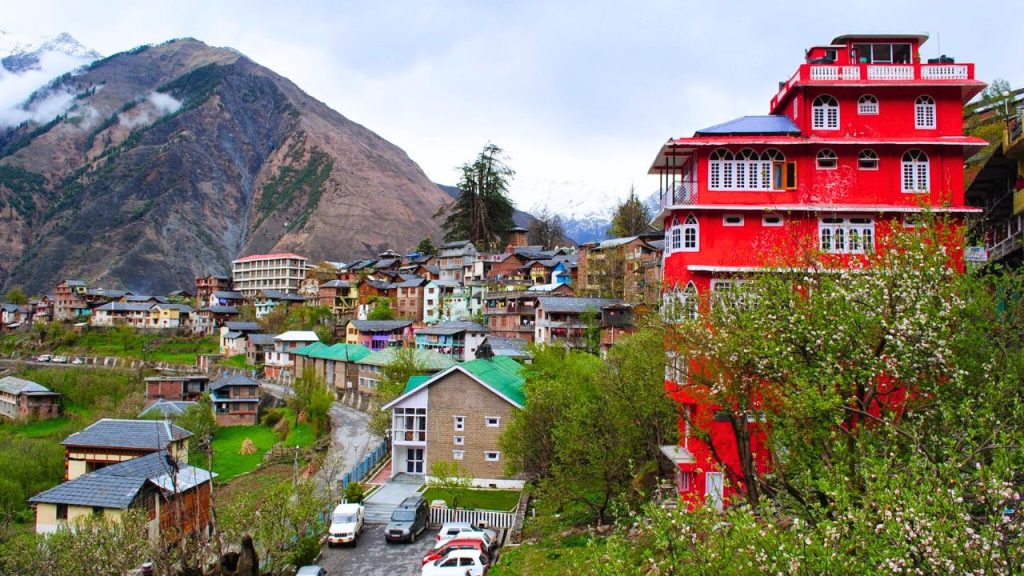
The first person to settle in Bharmour was Meru, the father of the first prince, Jaistambh, in the Chamba Vanshavali. He came from the Ayodhyan royal dynasty. Meru crossed the outer hills and entered the upper Ravi valley with the assistance of his youngest son, Jaistambh.He overthrew the small-minded Ranas in control of the region, created the town of Brahmpura, and made it the centre of a new state there. It is thought that this incident occurred in the middle of the sixth century A.D.
One tradition claims that the name Brahampura was formerly used to refer to the older kingdom of Bharmour, which was located in the present-day regions of Garhwal and Kumaon, and that Maru gave the same name to the state he established with the capital city of present-day Bharmour. After Maru, a number of Rajas followed one another in power until Sahil Varman. Sahil Varman was the one who took control of the lower Ravi valley and moved the administrative centre from Brahampura to the new capital he established at Chamba. The capital of Bharmour probably existed for 400 years.
The first state was very small and probably only included a part of what is now the Bharmour sub-division or the Ravi Valley below Bara Bangahal, with its tributaries the Budhil and the Tundah, all the way down to Chhatrari.
According to a local tale, Brahampura predates Maru, and according to popular belief, this area was once the goddess Brahmaani’s vatika (garden), which is where her shrine now sits on the ridge, some three to four kilometres away. The kid of Brahmaani Devi loved playing with his pet chakor, or bird. The son was shocked to death when the chakor was killed by a peasant one day. Brahmani Devi, who was grieving, made a sacrifice of her own by burying herself alive. The people who elevated Brahmani Devi to the level of a deity and constructed her temple were horribly haunted by the ghosts of these three deceased individuals. The locals think that Brahmpura was given its name in honour of Brahamani Devi.
According to the narrative, God Shiva and his 84 Sidhas stopped in Brahmpura, the Vatika of the Goddess Brahmani Devi, on their trip to Manimahesh, and spent the night there. The ruling deity of the location, Brahmani Devi, became furious when she noticed the smoke coming from the fires the Sidhas had started. Shiva and the Sidhas were told to leave by her when she arrived at the scene. Shiva begged them to allow her to stay the night there in absolute humility. Goddess Brahamani granted their requests. Because they wanted to settle there, the 84 Mahasiddhas changed into 84 Lingas.
All pilgrims planning to visit Manimahesh must take a plunge in the Brahmani pool, according to a blessing from the Lord Shiva given to Brahamani Devi. In the absence of this, Lord Shiva would not accept their pilgrimage.
The Himachal Pradesh government began offering helicopter service to Manimahesh, which is 14,000 feet above sea level, in September 2007.
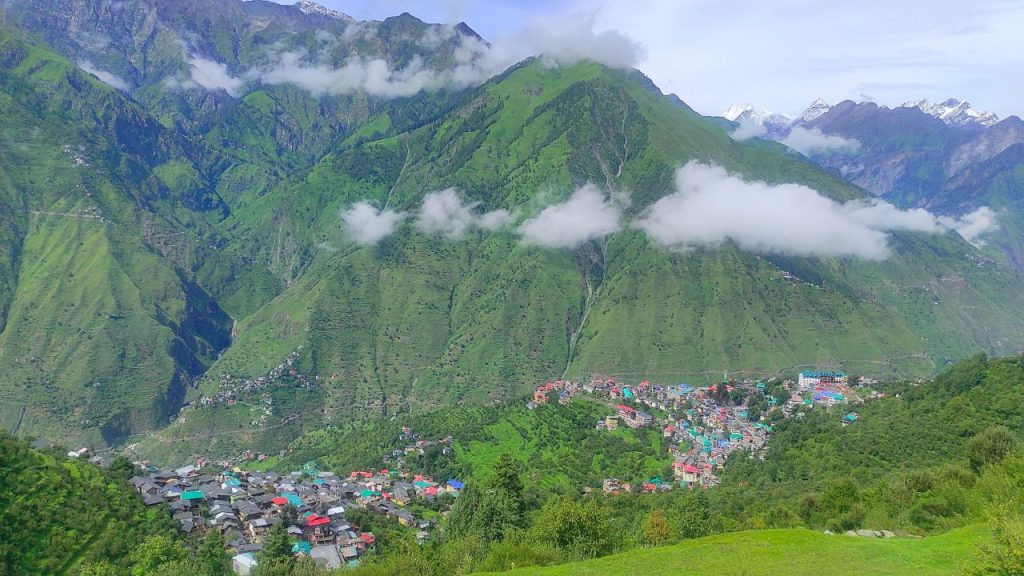
The Bharmani Mata temple complex is located 4 kilometres from the Bharmour at the top of a ridge. It is mostly are known for the goddess Bharmani Mata. Many people think Bharmani Devi inspired the name Brahmpura for the Bharmour. When Lord Shiva visited Manimahesh, he gave the goddess Bharmani Devi the boon that everyone planning to make a pilgrimage there must take a dip in their sacred pool. In the absence of this, Lord Shiva would not accept their pilgrimage. Before arriving at Manimahesh Lake, every visitor is required to take a bath at Bharmani’s holy pool.
For its importance and size, the Chaurasi Temple Complex, also known as Chaurasi Mandir (Chaurasi Temple), is well-known. The temple complex is meticulously decorated with 84 old, beautifully crafted temples. The Chaurasi, where all of these temples are located, is named for the 84 Siddhas who are thought to have meditated in Bharmaur more than 1000 years ago. These Siddhas travelled to Manimahesh and were from Kurukshetra. As a result, this collection of temples was given the name Chaurasi Temple. From the Chaurasi Temple Complex, you can see a beautiful, clean, and scenic view of mountains that are often covered in snow.
The Banni Mata Temple, sometimes referred to as the Mahakali Banni Mata Temple, is situated in Bharmour, a hill town in the northern Indian state of Himachal Pradesh. This temple is located in the Bharmour Valley at an elevation of 8,500 feet, at the foot of the stunning Pir Panjal Range of Himalayas. It is a historic shrine that honours the Hindu deity Devi Kali. The people of Bharmour place great value on both this shrine and the goddess Kali. Before navigating the Kalicho Pass, Bharmour shepherds seek the grace of Kali Mata. If somebody enters the Kalicho Pass without Kali Mata’s consent, awful things are said to happen.
Chamunda Mata, a goddess, is honoured at Bhagwati Mata Temple. This temple is close to Seri village. There are two ways to get to this temple. One option is a 2 km downhill sloping trek from Bharmour. Another route is comparatively simpler, consisting of a 3 km motorable road followed by a 1 km flat hike. On the alternate path to the Bhagwati Mata Temple, one can also stop by the Nag Temple. A feast is held each year at this temple.
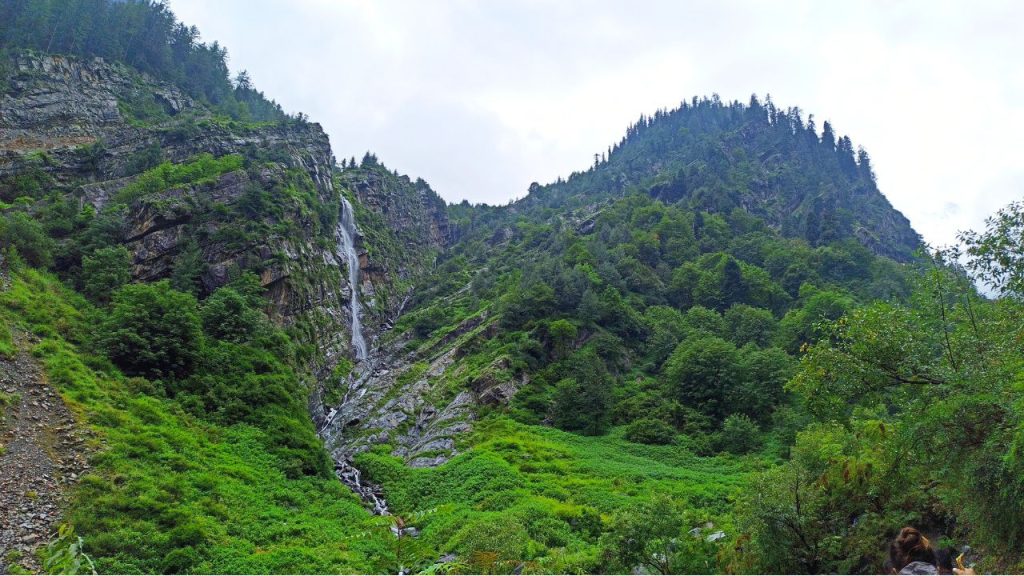
One of the biggest wildlife sanctuaries in the state of Himachal Pradesh is the Kugti Wildlife Sanctuary in Bharmour. It is located at a height of between 2,195 and 5,040 metres. A woodland corridor connects the Tundah Refuge to this sanctuary on its western side. It is 17 kilometres from Bharmour, Himachal Pradesh, and is easily reachable from there.
The Tundah wildlife sanctuary is located at the confluence of the Tundah Nalla and Ravi Rivers, 25 km from Bharmour and 45 km from Dalhousie. The Tundah sanctuary is located between 2074 and 5532 metres above sea level and is connected to the Kugti sanctuary via an eastern forest corridor. Many different natural animals, including Himalayan Ibex and pheasants, call this breathtakingly gorgeous Tundah refuge home.
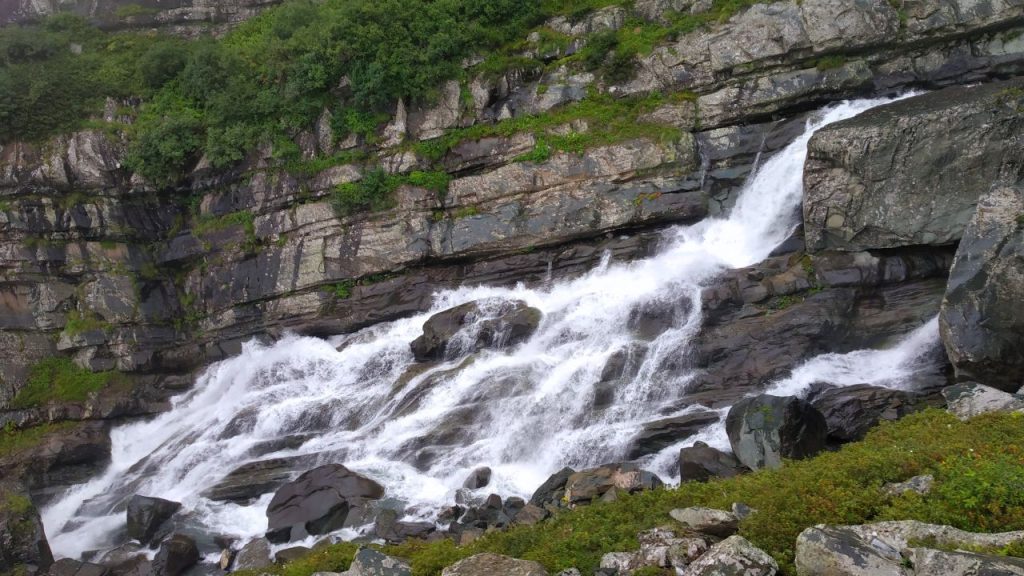
The truly stunning Thala waterfall is situated 9 kilometres from Bharmour, close to the river at the Thala bridge. It is around 100 metres from Thala Bridge and is conveniently reachable via cab. The waterfalls of Bhamour can be seen all year round because there is always enough water to astound you, unlike many other well-known waterfalls in India that can only be seen in the monsoon due to very low or no water during other periods. Therefore, this is the greatest site for you to visit if you are weary of visiting waterfalls only to find that there is never any water in them because you can come here at any time of the year. It’s great to picnic by this waterfall and have a good time. Only one kilometre separates Chho Chhundu Waterfall and Ghared Waterfall, two further waterfalls. At the base of the waterfall, a tiny natural pool forms, but only the most daring among you should try to jump in. The water is simply too cold to swim in, and there is also a possibility of being sucked into the waterfall’s base due to the strong pressure of the water dropping from such a great height.
One kilometre from Thala waterfall and ten kilometres from Bharmour are the Ghared and Chho Chhundu waterfalls, respectively. To get close to the waterfall, you must ascend roughly 200 metres above the road. Immediately below this waterfall is another waterfall. The waterfalls are both gorgeous. Even though Ghared Falls is not among the largest in the world, it is a wonderful place to spend time. It is a fanning waterfall in the style of a horsetail. Almost every time you visit this fall, a small rainbow may be seen at the base of the waterfall.
One of the tallest waterfalls is the Hadsar waterfall. One step out of the many that it possesses is depicted in this photo. This waterfall is located close to the start of the Kugti wildlife sanctuary, 14 kilometres from Bharmour. A little cave created by the glacier at the base of the waterfall can be seen if you visit in April, May, or June. If you are visiting this waterfall, there is a large area that is ideal for setting up enjoyable activities.
Kaksen – Bhagsen waterfall
The waterfalls of Paap and Punya (Sins & Virtue), also known as the Kaksen-Bhagsen cascade, are situated 18 kilometres from Bharmour in the Kugti wildlife reserve close to Dharol. These waterfalls are quite spectacular.
Trekking
Several thousand locals and visitors make the pilgrimage to this lake each year, which is located at a height of 13,500 feet. The Hadsar, Dancho, and Gaurikund treks take about four days and three nights to complete.
This strenuous walk takes you out of the valley and into the Lahaul area by way of the high Kalicho Pass, which is located at 16,153 feet. It takes roughly seven days and six nights to complete the walk, which passes via Bhadra, Bansar, Alyas, and Trilokinath.
This walk begins in Bharmour and concludes in Baijanth, 63 kilometres from Dharamshala, along an intriguing and difficult path. After Dhandar, the route’s highest point is reached when it soars to a height of 15,305 feet. The journey spans about eight days and seven nights and passes through Dhardi, Lake Basecamp, Bara Bhangal, and Khanar.
The following contains meteorological information for Bharmour. You can acquire travel-related information from this additional widget. You can plan your trip with the aid of the Bharmour weather widget. By selecting the widget’s “More” button, you can see the comprehensive weather as well as learn the forecast for the next three months. Although December and January are the best months to experience snow, it can also snow in other years from October to April.
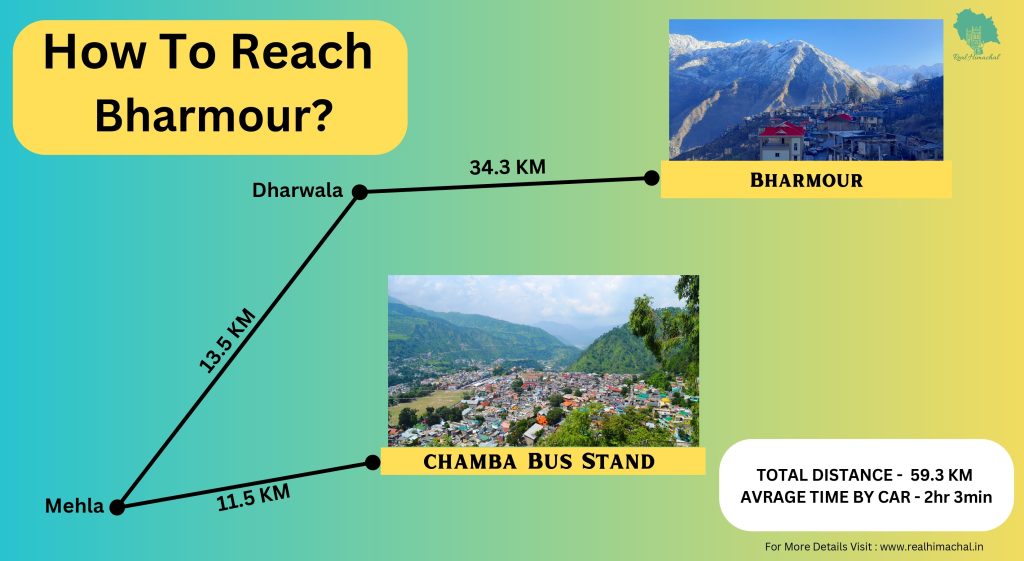
By Air : The closest airport to Bharmour is located at Gaggal, close to Dharamshala , and is about 190 kilometres away. Buses and taxis are easy to get to from the airport, but it will take four to five hours to drive.
By Train: Pathankot, 180 kilometres from Bharmour, is the closest railroad station. It is easy to find buses and cabs from Pathankot Railway Station, although the drive would take four to five hours.
By Road: From Delhi, the quickest route to Bharmour would be to take a HRTC Volvo from Kashmere Gate straight to Chamba. You will arrive at Chamba directly from the overnight bus, where you can board another bus or take a taxi to Bharmour.
F&Q’s Bharmour
The first person to settle in Bharmour was Meru, the father of the first prince, Jaistambh, in the Chamba Vanshavali. He came from the Ayodhyan royal dynasty.
The ancient capital of India’s Himachal Pradesh state’s Chamba district was Bharmour, formerly known as Brahmpura. Bharmour is 40 kilometres southeast of Chamba and 7,000 feet above sea level in the Budhil valley. It is known for its beautiful scenery and ancient temples.
The unspoiled natural splendour of Chamba, the home of Kailash Mountain and Lord Shiva, is well known. It is a small but very interesting place to visit in Himachal Pradesh, known for its stunning natural beauty.
The 84 Chaurasi Temples in Himachal Pradesh’s Bharmour area inspire not just devotion but also amazement and curiosity. According to folklore, the 84 Hindu temples within the complex have the capacity to free people from birth into any one of the 84 million varieties of life.
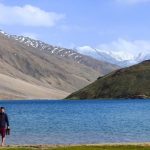
Jeśli masz wątpliwości co do działań swoich dzieci lub bezpieczeństwa ich rodziców, możesz włamać się do ich telefonów z Androidem z komputera lub urządzenia mobilnego, aby zapewnić im bezpieczeństwo. Nikt nie może monitorować przez całą dobę, ale istnieje profesjonalne oprogramowanie szpiegowskie, które może potajemnie monitorować działania telefonów z Androidem, nie informując ich o tym.
Jeśli myślisz o użyciu aplikacji szpiegowskiej na telefon komórkowy, dokonałeś właściwego wyboru.
Your point of view caught my eye and was very interesting. Thanks. I have a question for you.
Leave a Reply Cancel reply
Your email address will not be published.
Save my name, email, and website in this browser for the next time I comment.
Sign me up for the newsletter!
- +919805905257
- [email protected]
- Valley View Cottage, near Narvada General Store, Lower, Panthaghati, Shimla, Himachal Pradesh 171009
- Travel Blog & Tips
- Working With Us
- Be Our Partner
Other Links
- Web Stories
- Customer Support
- Privacy & Policy
- Contact Channels
Book amazing tours and exciting destinations with Real Himachal
Subscribe to get latest update & news
- © 2023 Real Himachal All Rights Reserved.

- Famous Temples
- Indian Gods
- Other Pilgrimages
Hotel Bharmour View is located at a very picturesque location on the way to Chaurasi temple in Bharmour at the starting point of the road to Bharmani Devi Temple. It is at a distance of around 50 meters from the old bus stand in Bharmour on the way to Chaurasi temples which is at a distance of around 200 meters. Bharmour View Hotel offers free WiFi, Parking and has a restaurant on the ground floor. It has a great view of mountain peaks and snow-clad Himalayan ranges.
Hotel Bharmour View is an Ideal holiday lodging destination for tourists, families, and adventurers as it has rooms suiting everybody’s needs. It offers great accommodation with neat and clean rooms at affordable prices. It is a budget hotel yet has the best rooms in Bharmour. Rooms have chairs, tables, TV, and cable connection (Standard rooms do not have TVs). Each room in this hotel has attached toilets and baths with hot and cold water facilities (Standard rooms do not have hot water facilities). The staff of the hotel is very cordial and friendly. Hotel Bharmour View is the best hotel in Bharmour and the only hotel in Bharmour with a parking facility available. Click here for Bharmour Images…
Hotel Rooms
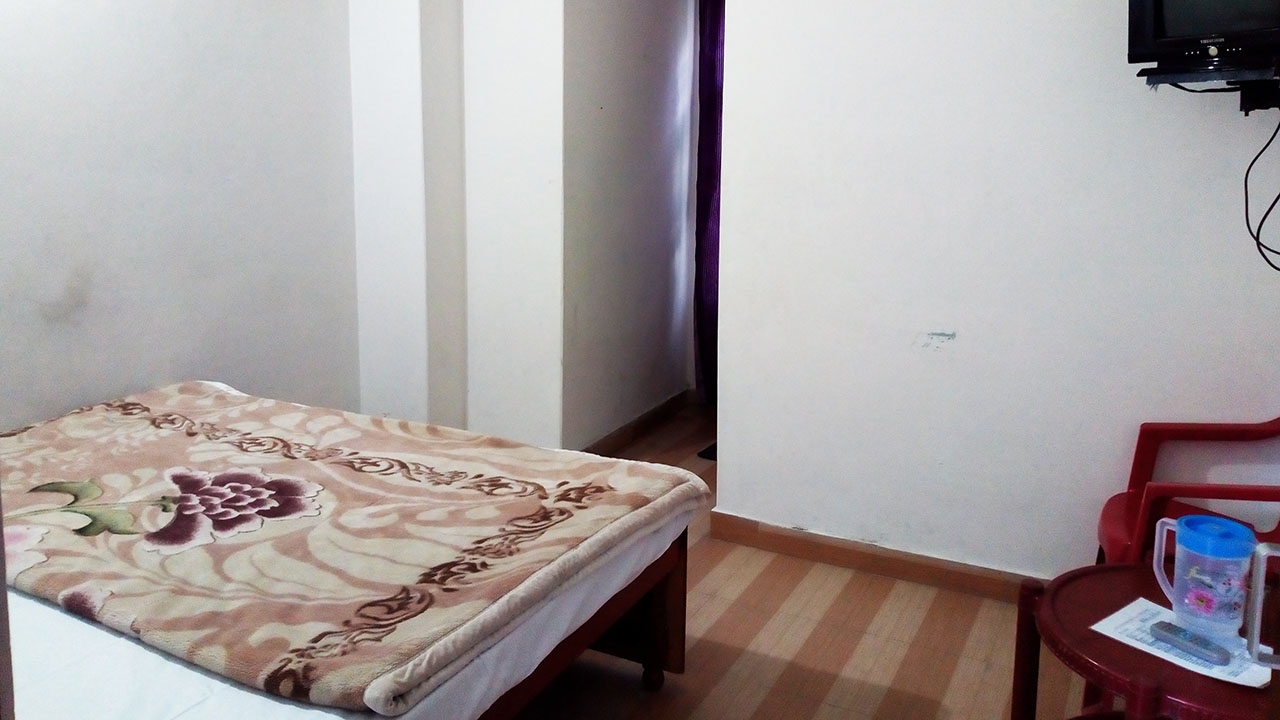
Hotel Facilities

Click here to view tariff of Hotel Bharmour View
Places to see in Bharmour
Bharmour is blessed with many beautiful waterfalls, each having importance of its own. Most of these waterfalls are easily accessible by road. Thala waterfall is 9km from Bharmour located near the Thala Bridge. Ghared waterfall is located just 2 km away from Thala waterfall. Sathali waterfall is 6 km from Bharmour, around 0.5km before Sathali Village near the bridge. Hadsar waterfall is located at a distance of 7 km from Sathali and 13 km from Bharmour. After the Hadsar waterfalls, you need to go a further 6 km to see Kaksen and waterfalls, also known as the waterfalls of ‘Paap and Punya’ (Sin and Virtue). Hadsar, Kaksen-Bhagsen, and Dharol Waterfalls are part of the Kugti Wildlife Sanctuary. More details…
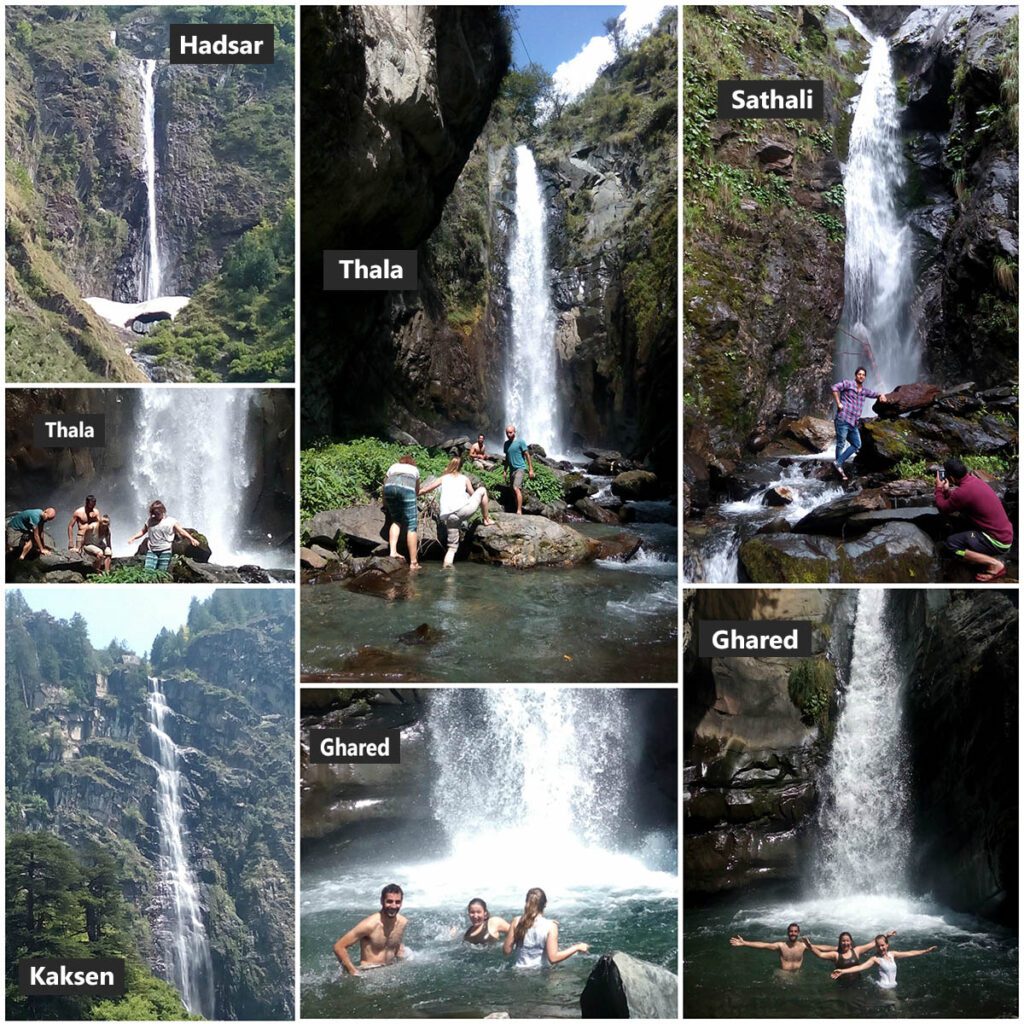
Kugti Wildlife Sanctuary
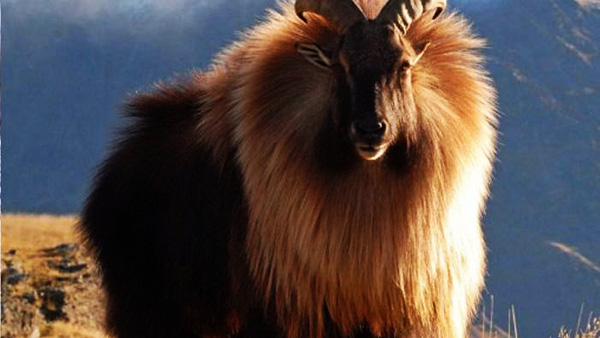
Kugti Wildlife Sanctuary, Bharmour is the second largest sanctuary in the state of Himachal Pradesh. It is situated at an altitude ranging from 2,195 m to 5,040 m. On the west side, Tundah Sanctuary surrounds this sanctuary by a forest corridor. It is easily accessible from Bharmour, Himachal Pradesh, and is 17km from Bharmour. The landscape of the sanctuary varies, and it is blessed with an abundance of flora and fauna. The area houses several medicinal plants along with some of the rare floral species. More Details…
Tundah Wildlife Sanctuary
The wildlife sanctuary by the name of Tundah is situated at the junction of Tundah Nalla and Ravi River and is at a distance of 45 kilometers from Dalhousie. This sanctuary is linked by an eastern forest corridor with the Kugti sanctuary and the altitude of the Tundah sanctuary ranges between 2074 to 5532 meters. This breathtakingly beautiful Tundah sanctuary provides residence to many different wildlife animals such as Ibex and Pheasants. Other than that some of the sanctuary area is covered with moist deodar forest as well as some with mixed coniferous forest, alpine pastures, and moist temperate deciduous forest. More Details…
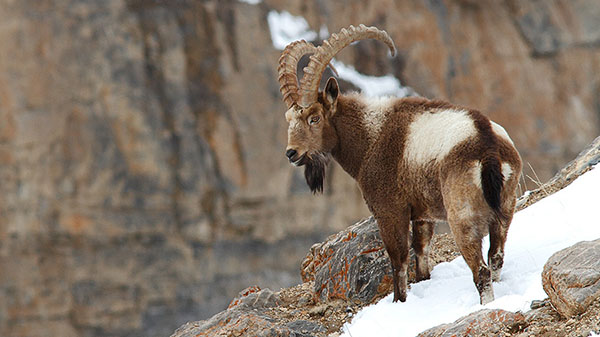
Bharmour is located at a distance of 61 km from Chamba and the distance from Bharmour to Dalhousie is only 102km. Bharmour tourism has grown significantly because of people’s interest in ancient temples, wildlife sanctuaries, waterfalls, and snow-covered mountains. Bharmour is often referred to as the land of Shiva because of the belief that lord Shiva resides at Manimahesh which is located in this area. Bharmour is popular for its natural beauty of snow-covered mountains, and very old archaeological remains, primarily the temples and Manimahesh. All these temples stand on a level area which is called Chaurasi Temple, after the 84 Siddhas who are believed to have meditated in here over 1000 years ago. More details..
Chaurasi Temple Bharmour
Chaurasi Temple complex commonly known as Chaurasi Mandir (Chaurasi temple), is renowned for its significance and magnitude. Eighty-four ancient beautifully carved pillars have carefully festooned the temple complex. All these temples stand on a level area which is called the Chaurasi after the 84 Siddhas who are believed to have meditated in Bharmaur over 1000 years ago. These Siddhas hailed from Kurukshetra and visited Manimahesh. Thus, this temple complex obtained the name Chaurasi temple. The Chaurasi Temple Complex offers you a delightful, clean, and a scenic view. More details.
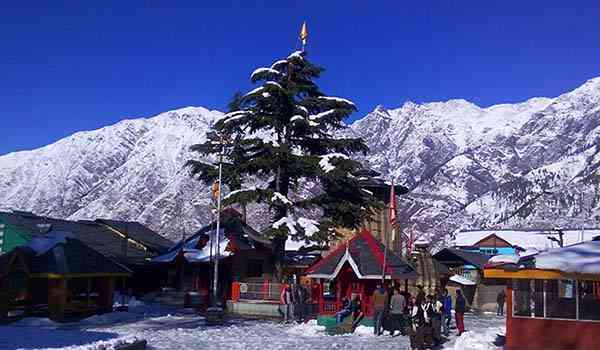
Bharmani Mata Temple
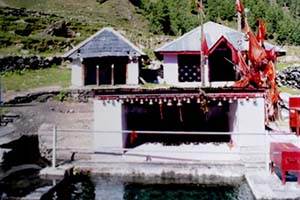
Bharmani Mata temple complex is at the top of the ridge, 4km away from the Bharmour. The place is mainly popular for Goddess Bharmani Mata. People believe that the Bharmour was called Brahmpura after Bharmani Devi. When Lord Shiva went to Manimahesh, he granted a boon to goddess Bharmani Devi that all persons intending to go on pilgrimage to Manimahesh must have a dip in their holy pool. Failing this, their pilgrimage would not be acceptable to Lord Shiva. That’s by every visitor first take bath in Bharmani’s holy pool before Manimahesh Lake. More details..
Manimahesh Lake (also known as Dal Lake, Manimahesh), is a high-altitude lake (elevation 4,080 meters/13,390 ft) beside Manimahesh Kailash Peak in the Pir Panjal Range of the Himalayas, in the Bharmour subdivision of Chamba district of the Indian state of Himachal Pradesh. The distance of Bharmour to Manimahesh is 26km out of which 13km is bus road and 13km is by trek or walk. The Manimahesh Kailash peak that stands high close to the lake is considered to be the home of Lord Shiva (Hindu deity). This place is as important as Lake Manasarovar in its religious significance. More details..
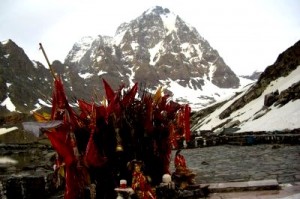
Book Himachal Pradesh Road Transport Buses here
http://www.hrtc.gov.in/hrtctickets/Availability.aspx
Click Here to Know more about How to reach Bharmour


- Bahasa Indonesia
- Eastern Europe
- Moscow Oblast
Elektrostal
Elektrostal Localisation : Country Russia , Oblast Moscow Oblast . Available Information : Geographical coordinates , Population, Area, Altitude, Weather and Hotel . Nearby cities and villages : Noginsk , Pavlovsky Posad and Staraya Kupavna .
Information
Find all the information of Elektrostal or click on the section of your choice in the left menu.
- Update data
Elektrostal Demography
Information on the people and the population of Elektrostal.
Elektrostal Geography
Geographic Information regarding City of Elektrostal .
Elektrostal Distance
Distance (in kilometers) between Elektrostal and the biggest cities of Russia.
Elektrostal Map
Locate simply the city of Elektrostal through the card, map and satellite image of the city.
Elektrostal Nearby cities and villages
Elektrostal weather.
Weather forecast for the next coming days and current time of Elektrostal.
Elektrostal Sunrise and sunset
Find below the times of sunrise and sunset calculated 7 days to Elektrostal.
Elektrostal Hotel
Our team has selected for you a list of hotel in Elektrostal classified by value for money. Book your hotel room at the best price.
Elektrostal Nearby
Below is a list of activities and point of interest in Elektrostal and its surroundings.
Elektrostal Page

- Information /Russian-Federation--Moscow-Oblast--Elektrostal#info
- Demography /Russian-Federation--Moscow-Oblast--Elektrostal#demo
- Geography /Russian-Federation--Moscow-Oblast--Elektrostal#geo
- Distance /Russian-Federation--Moscow-Oblast--Elektrostal#dist1
- Map /Russian-Federation--Moscow-Oblast--Elektrostal#map
- Nearby cities and villages /Russian-Federation--Moscow-Oblast--Elektrostal#dist2
- Weather /Russian-Federation--Moscow-Oblast--Elektrostal#weather
- Sunrise and sunset /Russian-Federation--Moscow-Oblast--Elektrostal#sun
- Hotel /Russian-Federation--Moscow-Oblast--Elektrostal#hotel
- Nearby /Russian-Federation--Moscow-Oblast--Elektrostal#around
- Page /Russian-Federation--Moscow-Oblast--Elektrostal#page
- Terms of Use
- Copyright © 2024 DB-City - All rights reserved
- Change Ad Consent Do not sell my data
- Bahasa Indonesia
- Slovenščina
- Science & Tech
- Russian Kitchen
Why were so many metro stations in Moscow renamed?

Okhotny Ryad station in Soviet times and today.
The Moscow metro system has 275 stations, and 28 of them have been renamed at some point or other—and several times in some cases. Most of these are the oldest stations, which opened in 1935.
The politics of place names
The first station to change its name was Ulitsa Kominterna (Comintern Street). The Comintern was an international communist organization that ceased to exist in 1943, and after the war Moscow authorities decided to call the street named after it something else. In 1946, the station was renamed Kalininskaya. Then for several days in 1990, the station was called Vozdvizhenka, before eventually settling on Aleksandrovsky Sad, which is what it is called today.

The banner on the entraince reads: "Kalininskaya station." Now it's Alexandrovsky Sad.
Until 1957, Kropotkinskaya station was called Dvorets Sovetov ( Palace of Soviets ). There were plans to build a monumental Stalinist high-rise on the site of the nearby Cathedral of Christ the Saviour , which had been demolished. However, the project never got off the ground, and after Stalin's death the station was named after Kropotkinskaya Street, which passes above it.
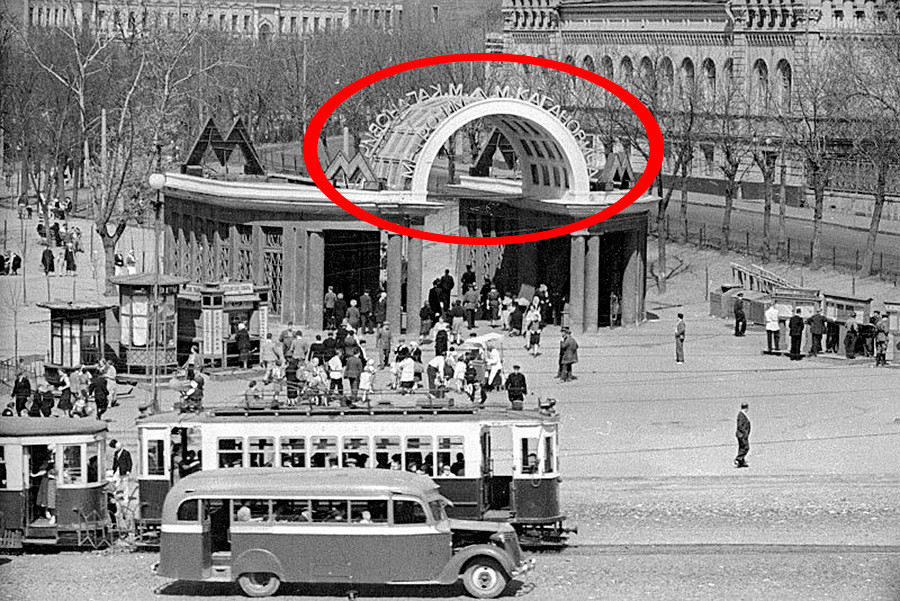
Dvorets Sovetov station, 1935. Letters on the entrance: "Metro after Kaganovich."
Of course, politics was the main reason for changing station names. Initially, the Moscow Metro itself was named after Lazar Kaganovich, Joseph Stalin’s right-hand man. Kaganovich supervised the construction of the first metro line and was in charge of drawing up a master plan for reconstructing Moscow as the "capital of the proletariat."
In 1955, under Nikita Khrushchev's rule and during the denunciation of Stalin's personality cult, the Moscow Metro was named in honor of Vladimir Lenin.
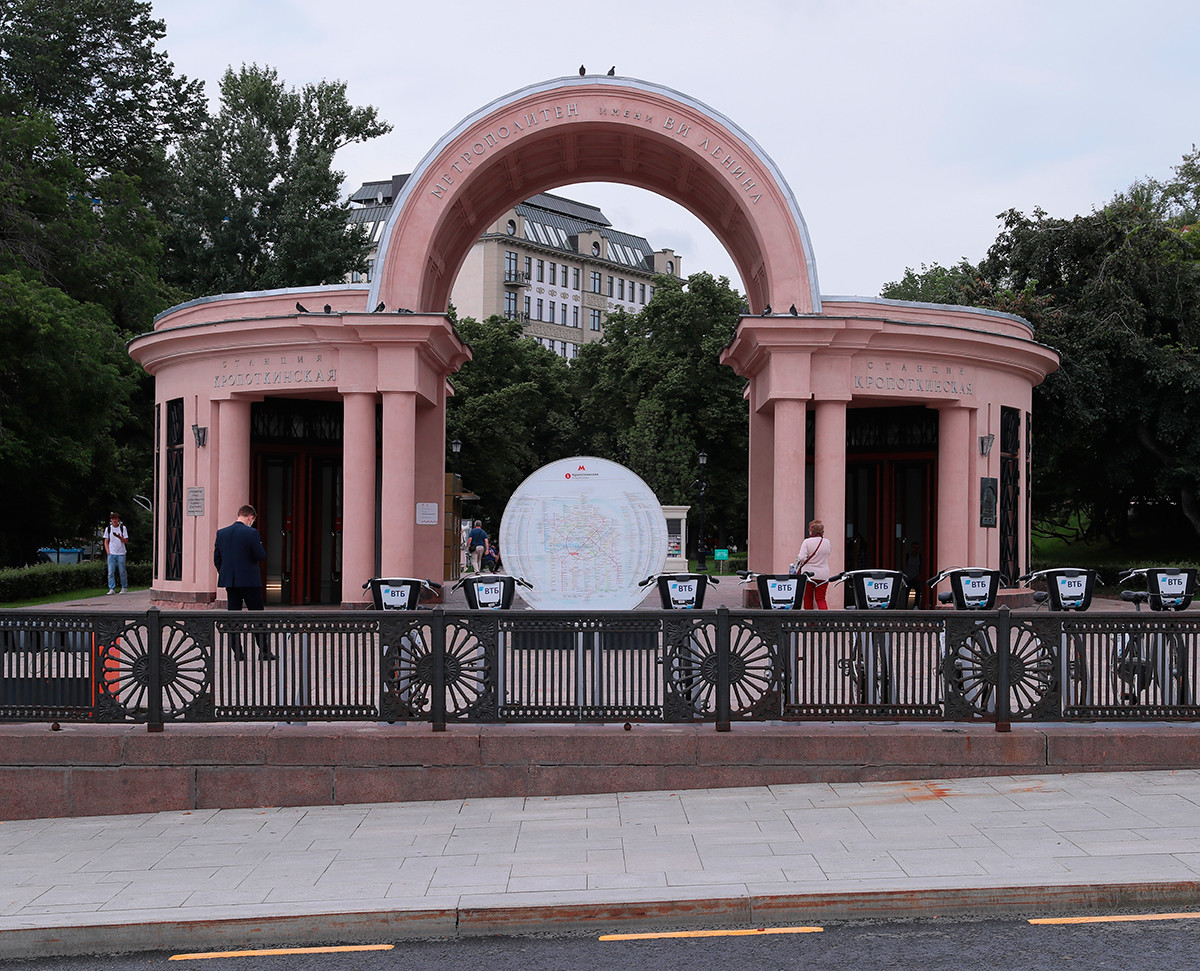
Kropotkinskaya station, our days. Letters on the entrance: "Metropolitan after Lenin."
New Metro stations that have been opened since the collapse of the Soviet Union simply say "Moscow Metro," although the metro's affiliation with Vladimir Lenin has never officially been dropped.

Zyablikovo station. On the entrance, there are no more signs that the metro is named after Lenin.
Stations that bore the names of Stalin's associates were also renamed under Khrushchev. Additionally, some stations were named after a neighborhood or street and if these underwent name changes, the stations themselves had to be renamed as well.
Until 1961 the Moscow Metro had a Stalinskaya station that was adorned by a five-meter statue of the supreme leader. It is now called Semyonovskaya station.
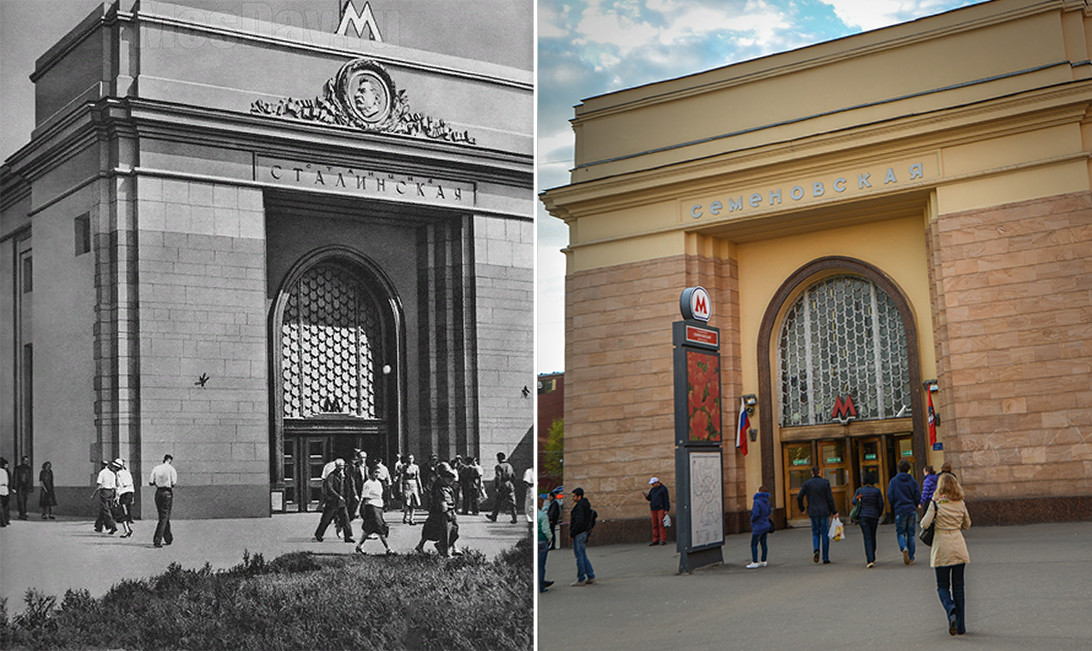
Left: Stalinskaya station. Right: Now it's Semyonovskaya.
The biggest wholesale renaming of stations took place in 1990, when Moscow’s government decided to get rid of Soviet names. Overnight, 11 metro stations named after revolutionaries were given new names. Shcherbakovskaya became Alekseyevskaya, Gorkovskaya became Tverskaya, Ploshchad Nogina became Kitay-Gorod and Kirovskaya turned into Chistye Prudy. This seriously confused passengers, to put it mildly, and some older Muscovites still call Lubyanka station Dzerzhinskaya for old times' sake.
At the same time, certain stations have held onto their Soviet names. Marksistskaya and Kropotkinskaya, for instance, although there were plans to rename them too at one point.
"I still sometimes mix up Teatralnaya and Tverskaya stations,” one Moscow resident recalls .
“Both have been renamed and both start with a ‘T.’ Vykhino still grates on the ear and, when in 1991 on the last day of my final year at school, we went to Kitay-Gorod to go on the river cruise boats, my classmates couldn’t believe that a station with that name existed."
The city government submitted a station name change for public discussion for the first time in 2015. The station in question was Voykovskaya, whose name derives from the revolutionary figure Pyotr Voykov. In the end, city residents voted against the name change, evidently not out of any affection for Voykov personally, but mainly because that was the name they were used to.
What stations changed their name most frequently?
Some stations have changed names three times. Apart from the above-mentioned Aleksandrovsky Sad (Ulitsa Kominterna->Kalininskaya->Vozdvizhenka->Aleksandrovsky Sad), a similar fate befell Partizanskaya station in the east of Moscow. Opened in 1944, it initially bore the ridiculously long name Izmaylovsky PKiO im. Stalina (Izmaylovsky Park of Culture and Rest Named After Stalin). In 1947, the station was renamed and simplified for convenience to Izmaylovskaya. Then in 1963 it was renamed yet again—this time to Izmaylovsky Park, having "donated" its previous name to the next station on the line. And in 2005 it was rechristened Partizanskaya to mark the 60th anniversary of victory in World War II.
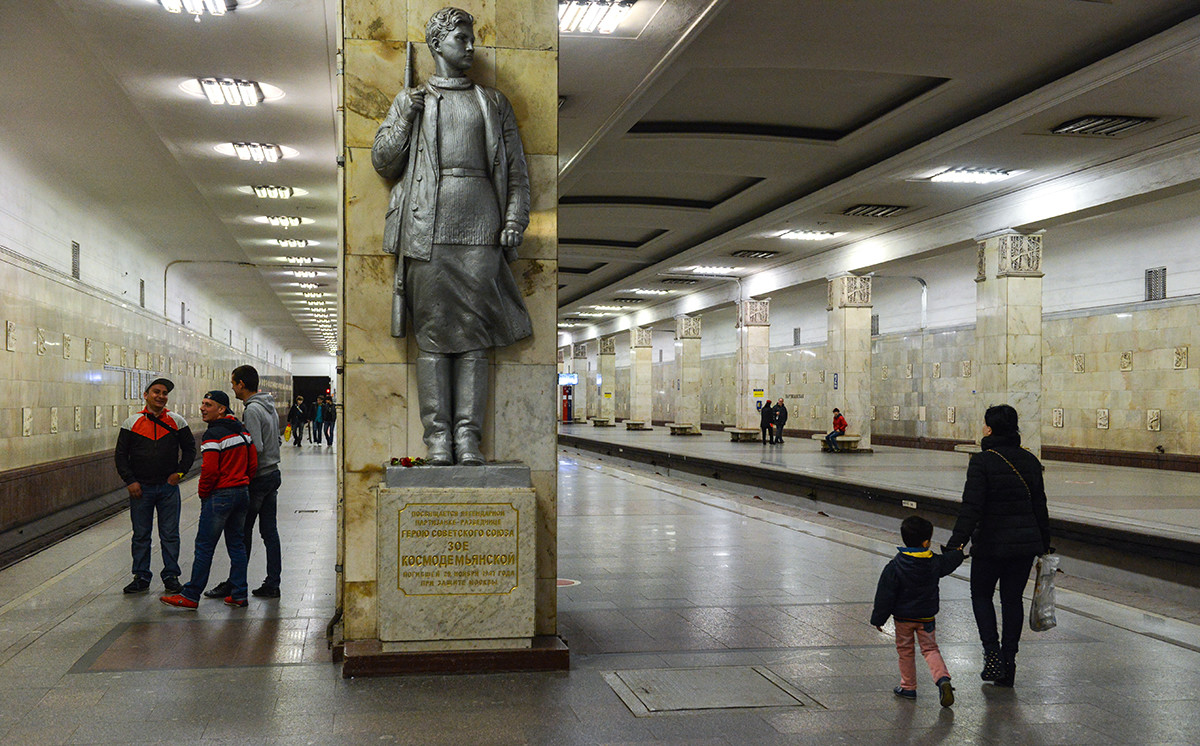
Partizanskaya metro station, nowadays.
Another interesting story involves Alekseyevskaya metro station. This name was originally proposed for the station, which opened in 1958, since a village with this name had been located here. It was then decided to call the station Shcherbakovskaya in honor of Aleksandr Shcherbakov, a politician who had been an associate of Stalin. Nikita Khrushchev had strained relations with Shcherbakov, however, and when he got word of it literally a few days before the station opening the builders had to hastily change all the signs. It ended up with the concise and politically correct name of Mir (Peace).
The name Shcherbakovskaya was restored in 1966 after Khrushchev's fall from power. It then became Alekseyevskaya in 1990.
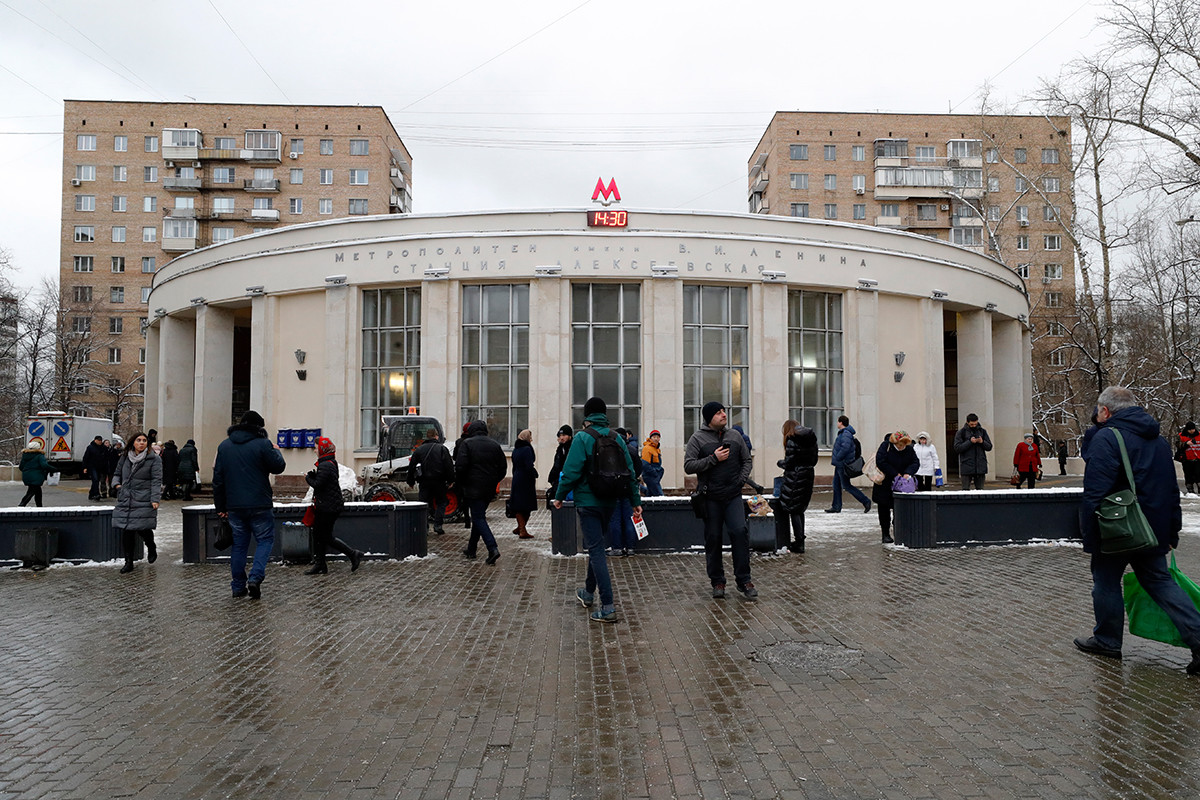
Alekseyevskaya metro station.
But the station that holds the record for the most name changes is Okhotny Ryad, which opened in 1935 on the site of a cluster of market shops. When the metro system was renamed in honor of Lenin in 1955, this station was renamed after Kaganovich by way of compensation. The name lasted just two years though because in 1957 Kaganovich fell out of favor with Khrushchev, and the previous name was returned. But in 1961 it was rechristened yet again, this time in honor of Prospekt Marksa, which had just been built nearby.

Okhotny Ryad station in 1954 and Prospekt Marksa in 1986.
In 1990, two historical street names—Teatralny Proyezd and Mokhovaya Street—were revived to replace Prospekt Marksa, and the station once again became Okhotny Ryad.

Okhotny Ryad in 2020.
If using any of Russia Beyond's content, partly or in full, always provide an active hyperlink to the original material.
to our newsletter!
Get the week's best stories straight to your inbox
- 7 things that the USSR unexpectedly put on WHEELS
- Why did the USSR build subway stations inside residential buildings? (PHOTOS)
- How Russian trains deal with winter
This website uses cookies. Click here to find out more.

IMAGES
VIDEO
COMMENTS
Kugti Sanctuary is the second largest sanctuary in the state of Himachal Pradesh. Its situated at an altitude ranging from 2,195 m to 5,040 m. ... Kugti Wildlife Sanctuary also houses the famous Manimahesh Temple that is annually visited by thousands of pilgrims. ... A 13 km trek leads you to Kugti village in the sanctuary. By Rail: The nearest ...
Manimahesh trek- only Hadsar, generators are available in shops and stays, along the trek at night (though voltage is pretty low) ... It offers spell-bounding views of Karthik Swamy trek in front and snow capped mountains of the Kugti wildlife sanctuary at the back. If you're warm enough at night and the skies are clear, this is a perfect ...
Kugti National Park Entry Fee. There is no entry fee to visit the Kugti Wildlife Sanctuary.. About Kugti Wildlife Sanctuary. The second-largest wildlife sanctuary in Himachal Pradesh, the Kugti Wildlife Sanctuary is situated at an altitude that ranges from 2195 meters to 5040 meters above sea level.With a diverse landscape and an abundance of flora and fauna, the sanctuary has bountiful water ...
Kugti Sanctuary, I didn't know — before I got there and a part of me made me Google about the place — is one of the last homes for the Himalayan tahr. It, also, is territory for Snow Leopard. ... It is a 7 km trek to the temple (from Kugti village). The temple is locally known as Kelang Wazir, other than Kartik Swami, and it's worth ...
Triund Trek with Manu Adventures India . 27. Recommended. 92% of reviewers gave this product a bubble rating of 4 or higher. Adventure Tours. from . $30.93. ... Kugti Wildlife Sanctuary - All You Need to Know BEFORE You Go (2024) Frequently Asked Questions about Kugti Wildlife Sanctuary.
Kugti Wildlife Sanctuary, Bharmour is the second largest sanctuary in the state of Himachal Pradesh. Its situated at an altitude ranging from 2,195 m to 5,040 m. On the west side, Tundah Sanctuary surrounds this sanctuary by a forest corridor. ... Many people trek through the sanctuary to reach Lahaul-Spiti district of Himachal Pradesh.
The Kugti Pass trek in Himachal Pradesh takes you to a formidable height of 16,700 feet and is one of the most stunning yet untouched hikes. The Kugti Pass trek is a great entryway and is frequently used by the Gaddi tribes to travel to the Lahaul and Spiti regions to graze their sheep. ... You can see the Kugti Wildlife Sanctuary while ...
Kugti Wildlife Sanctuary is the second largest sanctuary in Himachal Pradesh spread over an area of 378 sq km. Located at a steep height of 2195 m to 5040 m, this region is home to several ...
Kugti Pass trek is one of the most beautiful unexplored treks in Himachal Pradesh. Get detailed Kugti Pass Trek trekking itinerary, trekking route and best time to do this trek. ... After having Breakfast at Dalhousie we will move ahead to explore the Kalatop wildlife sanctuary, then head towards Khajiyar. Enjoy and explore the charming natural ...
Kugti Pass Trek is an unexplored part of Himachal Pradesh which takes you to the towering altitude of 5090 m. ... Post breakfast head to Kalatop Wildlife Sanctuary, explore the area and move further to Khajiyar. ... Choila, Chandrabani, near wildlife institute, ISBT, Dehradun, Uttarakhand 248007 +91-9756197558, +91-7505699509 [email protected ...
Kugti Wildlife Sanctuary. Kugti Sanctuary is the second largest sanctuary in the state of Himachal Pradesh. Its situated at an altitude ranging from 2,195 m to 5,040 m. On the west side, Tundah Sanctuary surrounds this sanctuary by a forest corridor. The landscape of the sanctuary varies, and it is blessed with abundance of flora and fauna.
Kugti Wildlife Sanctuary is the second largest sanctuary in the state of Himachal Pradesh, situated at an altitude ranging from 2195 metres to 5040 metres. It covers an area of around 378 kilometres square. The sanctuary houses Manimahesh Temple which is very famous and is annually visited by thousands of pilgrims.
The Kugti Pass Trek is unique and secluded - On the lower trails, the trek covers properties of apple orchards, pine forests, and miles of lush green grasslands. ... Continue to traverse Kalatop Wildlife Reserve, then drive to Khajiyar. Enjoy and traverse the fascinating and elegant natural beauty of Mini -Switzerland. Move further towards ...
Wildlife Sanctuaries of Himachal - Kugti Sanctuary, Chamba. Spread over an area of 378 sq. km, price at an altitude of about 5000m above sea level, viagra 40mg the Kugti Wildlife Sanctuary with rare species of flora and fauna is the second largest wildlife sanctuary of Himachal Pradesh. It is located in Bharmour area of Chamba district and is ...
Kugti Wildlife Sanctuary. One of the biggest wildlife sanctuaries in the state of Himachal Pradesh is the Kugti Wildlife Sanctuary in Bharmour. It is located at a height of between 2,195 and 5,040 metres. ... Manimahesh Lake Trek. Several thousand locals and visitors make the pilgrimage to this lake each year, which is located at a height of ...
Kugti Wildlife Sanctuary, Bharmour is the second largest sanctuary in the state of Himachal Pradesh. It is situated at an altitude ranging from 2,195 m to 5,040 m. ... The distance of Bharmour to Manimahesh is 26km out of which 13km is bus road and 13km is by trek or walk. The Manimahesh Kailash peak that stands high close to the lake is ...
Welcome to the 628DirtRooster website where you can find video links to Randy McCaffrey's (AKA DirtRooster) YouTube videos, community support and other resources for the Hobby Beekeepers and the official 628DirtRooster online store where you can find 628DirtRooster hats and shirts, local Mississippi honey and whole lot more!
Elektrostal is a city in Moscow Oblast, Russia, located 58 kilometers east of Moscow. Elektrostal has about 158,000 residents. Mapcarta, the open map.
Elektrostal Geography. Geographic Information regarding City of Elektrostal. Elektrostal Geographical coordinates. Latitude: 55.8, Longitude: 38.45. 55° 48′ 0″ North, 38° 27′ 0″ East. Elektrostal Area. 4,951 hectares. 49.51 km² (19.12 sq mi) Elektrostal Altitude.
The Moscow metro system has 275 stations, and 28 of them have been renamed at some point or other—and several times in some cases. Most of these are the oldest stations, which opened in 1935.